
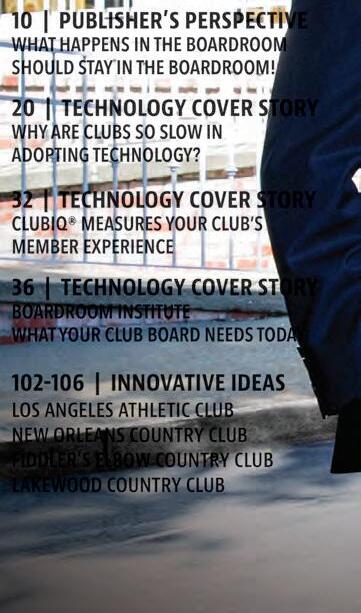




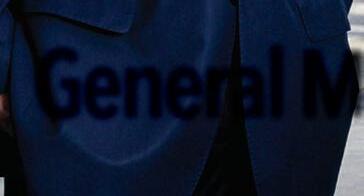















EDITOR’S NOTE

DAVE WHITE
Dave White is the editor of BoardRoom magazine. If you have comments on this article or suggestions for other topics, please send Dave an email to: dave@boardroommag.com.
























DAVE WHITE
Dave White is the editor of BoardRoom magazine. If you have comments on this article or suggestions for other topics, please send Dave an email to: dave@boardroommag.com.
Our annual Technology issue (September/October) takes a little different tack this year. In our cover story package (Why Are Clubs So Slow in Adopting Technology?) some of the industry’s suppliers give us their opinions of the what, where and why of today’s club technologies. Their viewpoints can cast some light on your discussions with your technology suppliers.
Barely a day goes by that there isn’t something new and wonderful on the market…and most people are embracing the changes happily because it’s made our lives easier. It’s simplified what we do and we do it more quickly, efficiently and effectively. That, of course, is the ‘good’ side of technology.
Yes, technology has been verboten at some clubs. But the only thing constant about change is change and that certainly applies to today’s private clubs. Technology really holds the key to success for many private clubs who are seeking a new generation of members, i.e. the Millennials… the generation that’s grown up with much of the technology they (and we) carry around with us today.
Technological change today is unceasing and happening with such mind-boggling speed and depth that we can only imagine where tomorrow takes us. Just think of what’s happened in the past year?
Why have private clubs been such laggards in accepting and adopting technology? How do clubs prepare for the future?
What to do, because digital devices are how younger club members read, listen, search and communicate with their families, friends and work colleagues. How do clubs accommodate the requirements of the next generation? What decisions do board of directors face? Who leads the charge?
All good questions, and some of which general managers of two prominent private clubs, answer.
Ron Banaszak, as chief operating officer of The Fountaingrove Club sits in a unique position. The Fountaingrove Club, which sits nestled in the hills above Santa Rosa, CA, overlooking Fountaingrove Lake, is undergoing a total rebuild after the destructive Tubbs wildfire in October 2017 levelled Fountaingrove’s clubhouse and maintenance facilities.
There are myriad reasons why private clubs are laggards when it comes to technology. Club general managers are hunkered down just meeting the demands of their members every day, so technology is more back of mind. Then there’s the fact, as Frank Cordeiro, general manager of Diablo Country
Club in Danville, CA suggests, some are just not familiar or comfortable with the blaze of technology that abounds today.
“General managers can do more to push for creativity,” says Banaszak. He suggests GMs with more courage and creativity can lead the charge in new technology.
The disaster that struck Fountaingrove has opened the door for other opportunities. Knowing what your club members want and “advanced member tracking will allow us to service our memberships intelligently. We track the data and use it to predict needs and provide a highly customized member experience,” suggested Banaszak.
This is also the domain of ClubIQ®, the online software tool created by BoardRoom’s Distinguished Clubs. It helps clubs, such as the Country Club of Rochester, NY understand what their members want and need.
“We began using ClubIQ in 2017 as a way to measure our club’s success, to identify opportunities for growth and as a way for us to identify membership value,” explained the club’s chief operating officer Michael Smith.
With ClubIQ, Smith and his staff are able to identify problem areas immediately and there’s factual information that allows the club to make the best decisions. The Country Club of Rochester uses ClubIQ to track member experience in all club areas. It has benefitted the club most is in the clubhouse, especially with the club’s food and beverage department.
BoardRoom’s Distinguished Clubs has now launched an even more powerful version…ClubIQ Pro that offers even more features especially useful for larger clubs with multiple dining venues, golf courses and second locations etc.
“It’s a step beyond, offering clubs more flexibility and even more insight and utility,” explained Keith Jarrett, president of BoardRoom’s Distinguished Clubs.
n n n
Top Presidents: Our features on BoardRoom’s top presidents for 2017 also continue with Frank Maddalena, President, Boca Grove Golf and Tennis Club, Boca Raton, FL; Ian Murdoch, Chair, The Bryanston Country Club, Bryanston, Gauteng, South Africa; Michael Neglia, President, Upper Montclair Country Club, Clifton, NJ, and Jack Peat, President, The Club at Morningside, Rancho Mirage, CA. BR
Publisher/CEO
John G. Fornaro
Editor/Co-Publisher
Dave White
Assoc. Editor/VP Creative/Co-Publisher
Heather Arias de Cordoba
Innovative Ideas Editor
Meghan Thibault
APCD Executive Director
Bill Thomas
Editorial & Marketing Director
Dee Kaplan
Accounting/Subscriptions
Susan Giem
Contact Information
www.BoardRoomMagazine.com www.apcd.com (949) 376-8889 or (949) 365-6966
Featured Columnists
Henry DeLozier
Mary Dolan
John G. Fornaro
Bonnie J. Knutson
Contributing Writers
Heather Arias de Cordoba
Jessica Belle
Chris Boettcher
Bill Boothe
Lisa Carroll
Ronald F. Cichy
Michael Crandal
Dave Doherty
John Embree
Jim Fedigan
Teri Finan
John Finley
Nancy M. Levenburg
Jerry McCoy
Gregg Patterson
Kevin F. Reilly
Boris Gradina
Rob Harris
Larry Hirsh
David W. Lacey
Lynne LaFond DeLuca
Melissa Low
Ryan Maione
Mike McCleary
Richard McPhail
Peter Nanula
Bill Nauroth Macdonald Niven
Strategic Partners and Allied Associations





Co-Founder/CEO
John G. Fornaro
President
Keith Jarrett
Chief Analyst
Frank Gore
Chief Information Officer
Jeff Briggs
Executive Director
Bill Thomas
Contact Information
www.DistinguishedClubs.com (949) 376-8889
Robert Sereci
Thomas B. Wallace
Dave White
Pamela Radcliff
Corey Saban
Bill Schwartz
Rosie Slocum
Robyn Stowell
Mike Talbot
Meghan Thibault
Frank Vain
Bill Wagner
Gordon Welch
Bruce R. Williams
Donald N. Williams







BoardRoom magazine is published by APCD Inc.
1100 S. Coast Hwy. #309 Laguna Beach, California 92691
The BoardRoom magazine (USPS 022516, ISSN 15537684) is a bi-monthly trade publication. Issue 277 Periodical postage paid at Laguna Beach, Calif. and additional mailing offices. POSTMASTER: Send address changes to THE BOARDROOM magazine, P.O. Box 9455, Laguna Beach, Calif. 92652.
Reach The BoardRoom magazine at (949) 376-8889 ext. 1 or fax (949) 376-6687, email heather@boardroommag.com or johnf@apcd.com or visit the website at www.BoardRoomMagazine.com.


PUBLISHER’S PERSPECTIVE | 10

WHAT HAPPENS IN THE BOARDROOM SHOULD STAY IN THE BOARDROOM!
BY JOHN G. FORNARO
Don’t worry, our confidential board actions from tonight’s meeting will be well known at the bar five minutes after we finish. So, why do board members publicly challenge and complain about board decisions outside the board room?

BY JERRY MCCOY
Great private clubs have a clear vision of the future and are continuing to use the latest tools (their binoculars) to look ahead to avoid catastrophes. Now a club probably won’t collapse from one iceberg event. It’s usually a series of bad decisions over time that slow clubs down.
PLIGHTS AND INSIGHTS | 90

ADA IN COUNTRY CLUBS WHAT’S REQUIRED?
BY NANCY M. LEVENBURG
Don’t mistakenly assume that because yours is a private club, it is immune to ADA requirements. The CMAA states, “only private clubs that are open to only members and their guests, do not regularly hold public events and are tax-exempt under the Internal Revenue Service’s 501(c)(7) code are exempt from ADA regulations.

BOARD MEMBERS SHOULD WATCH FOR WARNING SIGNS
BY HENRY DELOZIER
Knowledge in the board room is critically important for private clubs. The question for dedicated board members is, “How do you know what you need to know?” Most clubs are served by conscientious and dedicated board members. The challenge, in these challenging times, is developing sources of key information and curating details into actionable tools.
MEMBERSHIP MUSINGS | 18

BY BONNIE J. KNUTSON
Today, ol’ Dick’s wrist radio has morphed into the Apple Watch, Fitbit, and even body cameras. Welcome to the world of wearables. Before going into how this exploding technology might be used in the operational side of your club, it helps to understand wearable technology (WT). Simply put, WT is a term that encompasses all electronics that can be worn on the body.
LEADERSHIP MOMENTUM| 100

AN EXPENSE OR AN INVESTMENT?
BY ROBERT SERECI
As club managers, we cannot underestimate the importance of technology as it relates to our strategic and operational goals. While many clubs have made great strides in updating their infrastructure, they have yet to leverage technology to develop a competitive service advantage – Medinah Country Club’s focus has been no different.
BOARDROOM BASICS & BEYOND| 14

BY THOMAS B. WALLACE
If it’s not yet apparent, anyone who is not embracing technology is getting way behind way fast. Technology is not a trend. It is our reality. For example, what used to be called digital marketing is now just called marketing, and other marketing tools are considered “traditional.”
CLUB FACTS & FIGURES | 88


THE IMPACT OF NON-MEMBER REVENUE ON A CLUB’S BOTTOM LINE
BY KEVIN F. REILLY & MARY DOLAN
Today, ol’ Dick’s wrist radio has morphed into the Apple Watch, Fitbit, and even body cameras. Welcome to the world of wearables. Before going into how this exploding technology might be used in the operational side of your club, it helps to understand wearable technology (WT). Simply put, WT is a term that encompasses all electronics that can be worn on the body.
TRIBAL MAGIC | 108

BY GREGG PATTERSON
Manager Sue, a long-time GM of The High and Mighty Country Club, is a CFON – a “Certified Knower of Nowness.” She knows when people are focused on The Now, when they see and are engaged with the place they’re at, the people they’re with, the stuff they’re doing and the moment they’re experiencing. And because she knows Nowness, Sue knows that lots of “No Nowness Now” moments can send a club’s GM post-haste to The Great Beyond, out of a job and looking for work.
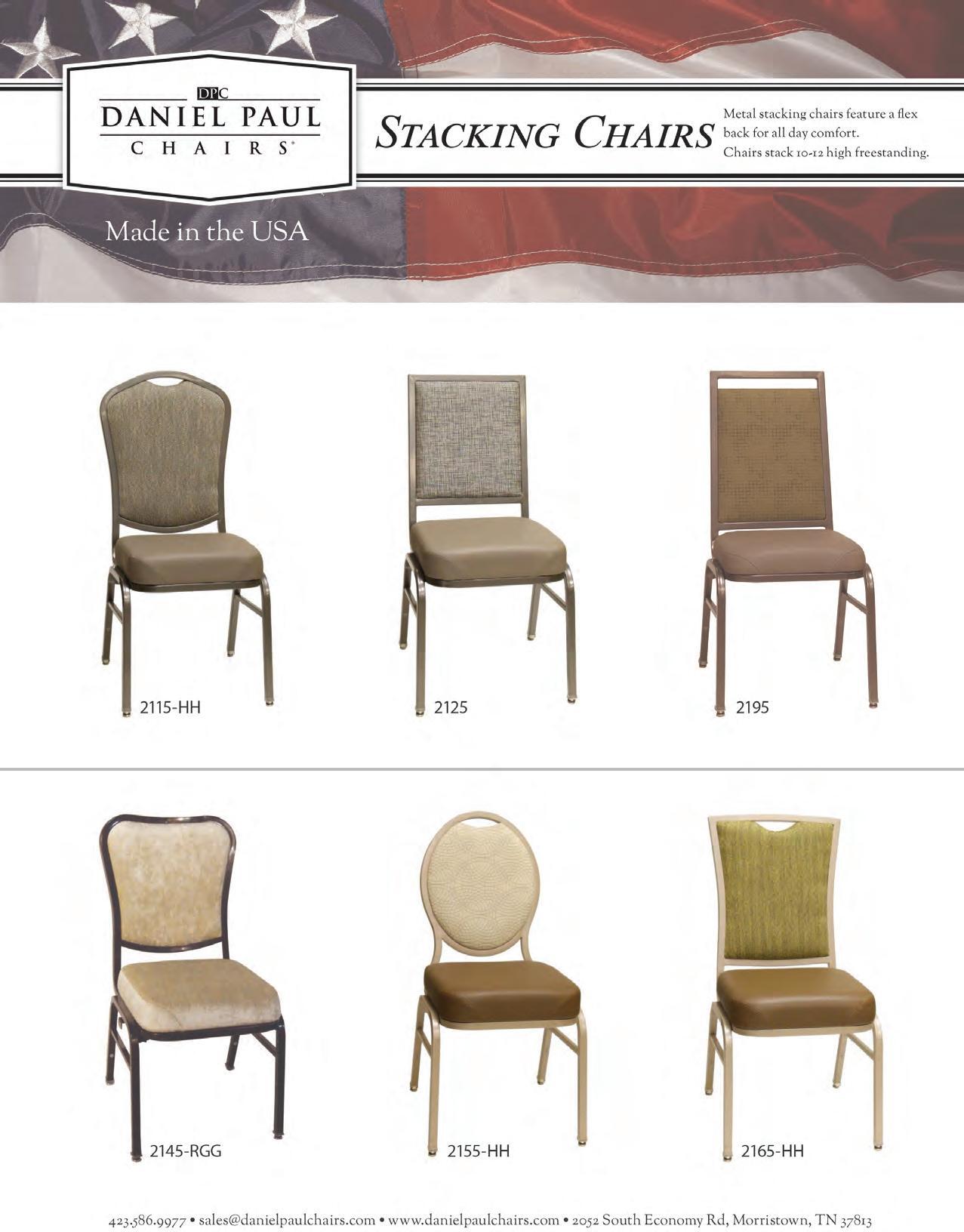
COVER STORY .
By Dave White, Editor
20, 26, 32
Why Are Clubs So Slow in Adopting Technology - p 20
What’s the Generals Managers’ Take on Technology - p 26
ClubIQ® Measures Your Club’s Member Experience - p32
COVER STORY.
BoardRoom Institute By Gordon Welch
INSIGHTS.
36
54

Top
By Heather Arias de Cordoba
ASSOCIATION OF PRIVATE CLUB DIRECTORS
Board Members - Time to Evaluate Your Performance By Gordon Welch
Virtual Reality Comes to Event Planning By Lynne LaFond DeLuca
TENNIS
Crandal, CNG
It’s A Balancing Act - Do It Right By Michael
LEGISLATIVE & LEGISLATION. . .
83
Privacy Considerations for Private Clubs By Jessica Belle & Robyn
TECHNOLOGY PERSPECTIVE. .
It’s Time for Club Managers to Become Tech Savvy By Bill Boothe
INNOVATIVE IDEAS.

Stowell
96

How RacquetFit Can Benefit Your Tennis Membership By John Embree
GOLF DISPUTE RESOLUTION
Golf Cart Driver’s Liability - For Injuring Golfer Remains Uncertain By Rob Harris
102-106 By Meghan Thibault
Los Angeles Athletic Club
New Orleans Country Club
Fiddler’s Elbow Country Club Lakewood Country Club
CLUB SERVICE.
116
How Can a Robot Get a Job in Club? By
Chris Boettcher
TECHNOLOGY FEATURE
ClubTec.
Northstar.
Club Benchmarking.
clubsystems group.
FOOD-TRAK.
Jonas Club Software.
MembersFirst Inc..
ClubPay.
Paisano Performance.
EZLinks.
TAI Club Management.
Signera.
FEATURE
CMAA PRESIDENT.
Robert Crifasi
38, 60 & 61
39 & 124
40-41
42-43
44-45
46-47
48-49
50
51
52
52
53
74
Shares His Goals and Initiatives By
Meghan Thibault
RAY CRONIN.
Selected BoardRoom’s Gary Player Educator of the Year By Teri
Finan
92
EXECUTIVE COMMITTEE.
The Elephant in the Club, Part III Private Club Compensation Impacts By Richard McPhail
EXECUTIVE COMMITTEE.
Take the I.N.I.T.I.A.T.I.V.E. By Dr. Ronald F. Cichy
EXECUTIVE COMMITTEE.
A Private Club’s Mission - Have We Lost Sight? By Larry Hirsh
EXECUTIVE COMMITTEE.
Micromanagement – Embrace it!
By Macdonald Niven
EXECUTIVE COMMITTEE.
It’s the Real Estate, Stupid By Peter Nanula
EXECUTIVE COMMITTEE.
Technology and The Private Club
What’s Good Tech and Bad Tech? By Frank Vain
HR
Taking Care of Your Biggest Asset Ensures a Bright Future By Boris Gradina
Radcliff
Helps Operating EfficientlyIn a
Marketplace By Bruce R. Williams
By David W. Lacey
Answer is Not Always “Yes” By Lisa
publisher’s perspective

John G. Fornaro
John G. Fornaro is the publisher/CEO of BoardRoom magazine, co-founder/CEO of Distinguished Clubs and the CEO of the Association of Private Club Directors (APCD). If you have comments on this article or suggestions for other topics, please contact John Fornaro at (949) 376-8889 or via email: johnf@apcd.com
Don’t worry, our confidential board actions from tonight’s meeting will be well known at the bar five minutes after we finish.
“That’s a well-used saying on the day of any club’s board meeting,” says Dan Farrell, a partner with GSI Executive Search.
Farrell, of course is referring to the fact that we often hear of private club board members airing their disagreement with board decisions outside the boardroom.
So, why do board members publicly challenge and complain about board decisions outside the board room? How should a club handle this situation, and more importantly, how can the board overcome this disruptive behavior, which may have long-term effects on the club’s gover-
Michelle Tanzer, an attorney with the Florida-based law firm, Gray-Robinson, offers a similar opinion.
“Board members sometimes air their disagreements outside the board room when they feel, rightly or wrongly, that consideration of their position was not fully given in the board meeting. Other times, this occurs because board members are not aware of the requirements for confidentiality and/or negative consequences that may occur from this behavior,” explained Tanzer.
“Solutions include allowing sufficient time for issues to be fully vetted in the board meeting and to expressly remind board members of their obligations and appropriate decorum both within and outside of the meetings. Educat-
Board members must understand that the ‘duty of loyalty’ as well as a ‘duty of confidentiality’ are board requirements.
Decisions made in the private club board room must remain in the board room and the board must speak with one voice.
nance? The how and why of these questions leave private club boards of directors with big questions to answer.
As board members, there is a need to understand that the ‘duty of loyalty’ is a board requirement, as is a duty of confidentiality... decisions that are made in the private club board room must remain in the board room and the board must speak with one voice.
These confidentialities sometimes obviously are breached. Why? The opinions vary.
“When board members discuss their disagreement with board policy or decisions outside of the board room it is typically for one of two reasons,” suggests Dick Kopplin, principal with KK&W, an industry search and consulting firm. “Either they didn’t feel their opinions were thoroughly and fairly discussed during the meeting or they have always harbored a hidden agenda or agendas which tend to surface when their particular issue is being reviewed.”
ing the board members as to both what is required and what is expected of them goes a long way to achieving the desired result,” she added.
“Board members will generally breach confidence to ‘save face’ with their peers,” offered Whitney Reid Pennell, president of RCS Hospitality Group.
“If a decision made by the board is unpopular among their social group at the club these board members don’t want to upset or offend any of their friends if they had discussed the matter in advance of a board meeting or vote. Oftentimes, the member will be quick to say they were not in favor of the decision so as not to look like the ‘bad guy.’ Sometimes they air the disagreement in hopes of ushering in enough opposition without it being known they are doing it, in an effort to force the board to look at the decision again.”
See publiSher’S perSpective |112


henry Delozier
Henry DeLozier, a recipient of the BoardRoom magazine Lifetime Achievement award for 2014, is a principal of Global Golf Advisors. You can contact him at hdelozier@globalgolfadvisors.com.
Knowledge in the board room is critically important for private clubs. the question for dedicated board members is, “how do you know what you need to know?”
It was a bleary-eyed Keith Richards, the quirky lead and rhythm guitarist for the Rolling Stones, who awakened with music on his mind in May 1965. He laid down the legendary riff known to rock & roll fans across the globe as the lead into “Can’t Get No Satisfaction” and, then, he lapsed back to sleep.
For Richards, it was pure inspiration. For board members in private clubs knowing what the right things are is less about dreamy inspiration and more about deliberate collection and utilization of information.
Most clubs are served by conscientious and dedicated board members. The challenge for boards in these challenging times is developing the sources of key information and curating the details into actionable tools.
“Board members need tools that enable them to focus on the data points that help them for make the best decisions possible,” Derek Johnson, partner at Global Golf Advisors, observed.
Club boards must develop a simple and directed dashboard of key performance indicators, which serve as the canary-in-the-coal-mine to ensure best results. Johnston added, “The key is to focus on the indicators that empower the club to be its best.” Sometimes board members become distracted with data that is less impactful on the financial well-bring of the club.
Board members should watch three early-warning metrics, according to Johnston. “First, boards should monitor membership recruitment and retention metrics.” Private clubs are member-driven organizations, which rely primarily on dues revenue for economic sustainability and on joining fees for capital reserves. Thus, membership is the most critical long-term indicator of a club’s financial well-being.
Member recruitment – The components of membership growth are the number of qualified leads for people who may become members of the club. Typically, a 10 percent success ratio in private clubs is a reliable metric. So, if a club needs to recruit 20 new members each year, it requires a lead pipeline of 200 or more leads.
“Few clubs enjoy better than a 10 percent success ratio, so lead-count is important,” Johnston noted.
Club boards should track lead generation metrics to keep their clubs healthy.
Member retention – Keeping members becomes an acid-test for most clubs. Retention is a factor of several influences measured by historical trend in most clubs. Retention rates seldom vary significantly, except when impacted by such external factors as the 2008/2012 recession or adverse local housing cycles.
Key factors that impact member retention are (a) mortality, which is typically .008 in the U.S. and consistent in most clubs; (b) relocation from the club community, which is driven more by Baby Boomers aging-out of clubs than by corporate or career-related factors, and (c) member satisfaction, which typically ranges from 86 to 94 percent in private clubs.
Club boards should monitor these three factors diligently and regularly.
Balance sheet metrics – Finance and financial oversight are key duties of every board. According to Johnston, boards should establish key performance indicators tied directly to the club’s balance sheet.
Three important financial metrics to watch are (a) debtto-equity, as a sign of financial health; (b) cash balance is an important metric, and (c) depreciation, which indicates the funds that will be required in the future to preserve existing assets of the club. Few clubs properly fund depreciation so watching depreciation on the balance sheet reminds the board of escalating needs before member satisfaction levels signal that members are seeing what the board should have monitored.
“Too many board members focus on operational/income statement metrics that are the responsibility of the club’s manager,” said Johnston, “when the board’s duty is to look after the overall financial health of the club.”
He recommends pre-set metrics tracked regularly and reported by the finance committee chair in every board meeting. “Our clients use a bespoke tool called ‘strategic intelligence.’ There are other trustworthy financial indicator tools available. It is important that board members can act on accurate and current information.”
Satisfaction, it seems is not a dream in most private clubs. It is the result of intentional planning that enables board members to focus on key performance metrics in a consistent manner. br
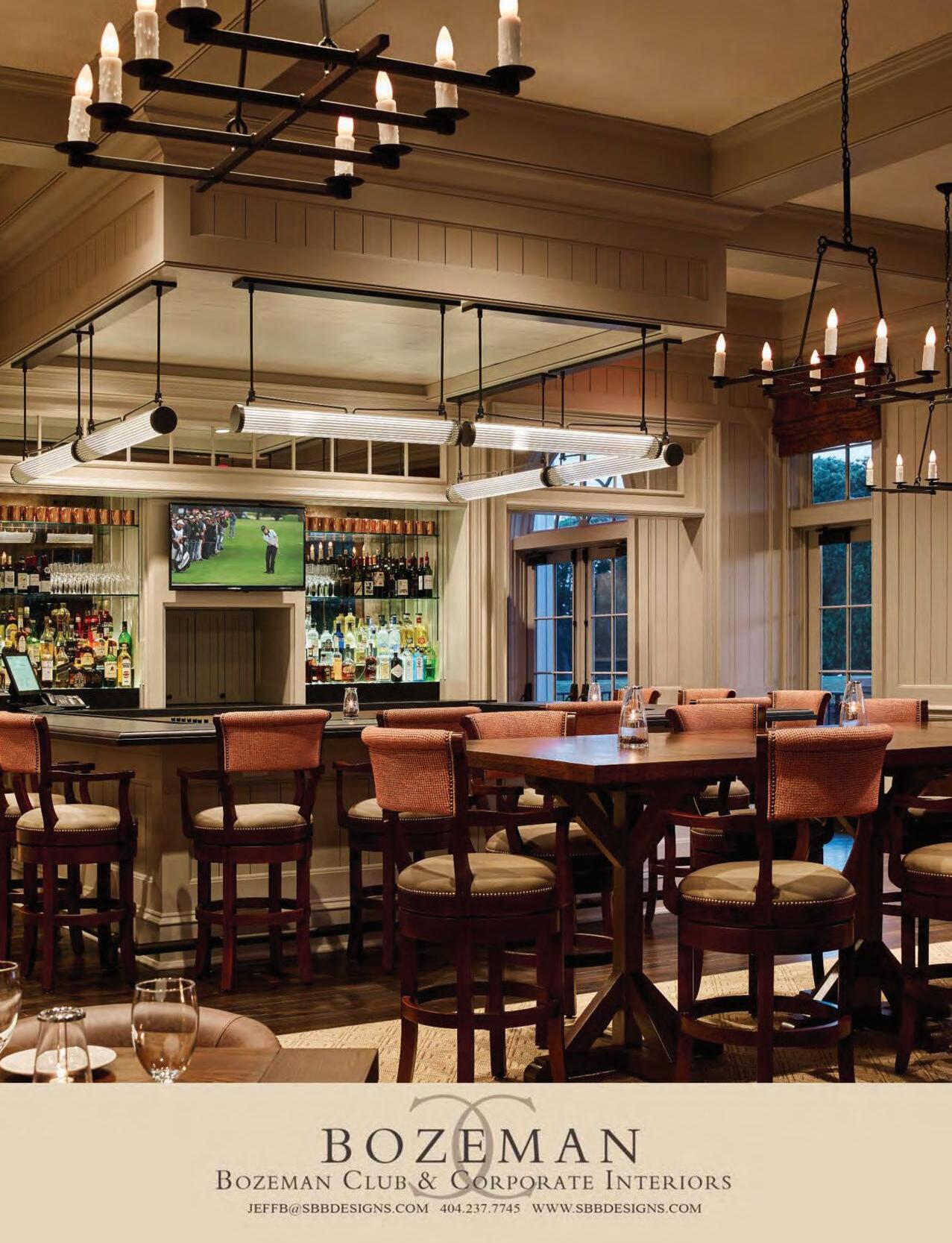
boardroom basics and beyond

thomaS b. Wallace
if it’s not yet apparent, anyone who is not embracing technology is getting way behind way fast.
Technology is not a trend. It is our reality. For example, what used to be called digital marketing is now just called marketing, and other marketing tools are considered “traditional.”
There is a real shift for those of us of a certain age, but the younger generation knows nothing that pre-dates what we might call modern technology. It’s just technology, but a way of life. We forget our phone can take a picture of anything for instant sharing. Millennials don’t live any other way. We might still send emails or (gasp postal) letters to correspond, but younger generations post publicly.
Technology is not just for the young. It’s creeping into every aspect of our modern lives, so you can’t run from it. The next time you look into buying new computers for the office, you might be shocked at how small computers have become. The next time you invest in a new phone system, you might be taken aback at the multitude of features. A “techie” way of life will find you eventually.
If you’re embracing modern rules, congratulations, but we all need help navigating the waters as there are so many options available. If you are not embracing technology yet, don’t fear. There may be a world of options, but you don’t have to embrace all of them, you can be selective.
We are living in a ratings economy. invite your members to rate you and capitalize on the feedback mechanism. i challenge you today to get started on inviting immediate feedback. here is a round-up of 5 of the top available programs you can implement easily in your club right now.
1. www.crtviewpoint.com/survey-solutions/smiley-face-surveys
Simple ways to see how your customers or employees feel. A choice of smiley faces gives the respondent a quick and easy way to rate your service, track issues and give you feedback. By making it really simple for your customers to respond, you can improve customer satisfaction, increase profitability and grow your customer loyalty.
2. www.hummsystems.com
the best feedback platform for improvement. Get 80 times more feedback than surveys, immediate results, and the most precise insights about your business.
3. www.ziosk.com
We bring more to the table. From the company that brought you the first-ever entertainment, ordering and pay-at-the-table touchscreen for the restaurant market.
4. www.zonkafeedback.com
the most powerful multi-channel customer feedback system & survey app. Create engaging surveys and use Net Promoter Score®, CES 2.0, and CSAT to collect feedback and actionable analytics from customers, employees, and patients.
5. www.surveyapp.io/surveyapp-for-travel-and-hospitality Surveryapp makes your surveys take off! For travel and hospitality brands, happy customers are everything – and Surveyapp helps you make that happen.
You just need a trusted resource. That resource could be a full-time IT executive on-staff and/or an IT consultant. Most of us have IT consultants – it’s hard to work without one – but are you truly utilizing their capabilities?
Ask them for ways to improve information management. They may be costly in the long run, but the data gleaned, or the efficiency that can be enhanced will save you money in the long run and keep you ahead of the trends.
Technology is friendlier than you might think, especially now as interfaces become easier and easier to understand and implement. Your club’s best technological friend? Instant feedback. Sure, sometimes feedback can be hostile, but that’s because we publicly share ourselves in a way that invites criticism. Spontaneous feedback, however, is usually true and reliable.
Hospitality is a subjective industry. What is perfect service to one may not be perfect service to others. Besides, being perfect isn’t possible, only the pursuit of perfection. This is where instant feedback can give you an insight into your performance in real time allowing for adjustments to be made on the fly. Winning them back can be done that night, not next week. Winning a customer back is so crucial having the technology in your business to get that feedback and even be able to clean up any messes before a customer leaves your property is a huge advantage.
From the cleanliness of restrooms to the quality of your steak, immediate feedback is already a huge part of our industry, but it’s delivered in a way that is difficult, if not impossible, to track: verbally. A verbal response can’t be shared or acted upon effectively. Corrections and success criteria can’t be measured effectively. Technological feedback, however, can. Having technological feedback provides goals, trends and success criteria. The information gleaned is easily shared and acted upon. It can be measured to track improvements or even the importance of the feedback based on how many similar comments are provided. br
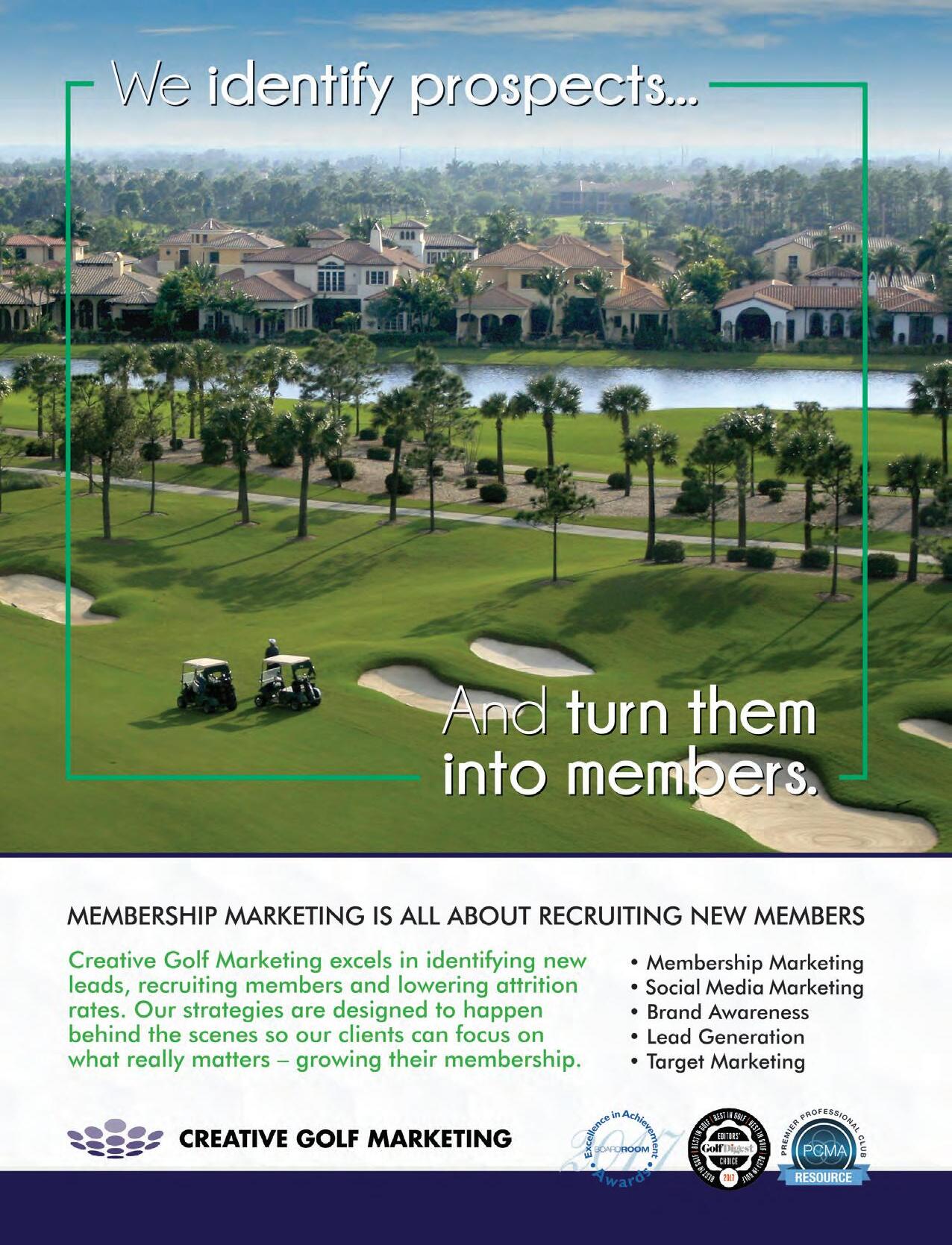
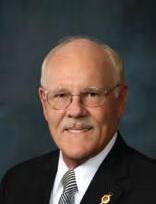
Jerry mccoy
Jerry N. McCoy, MCM, is the president of Clubwise, LLC, a consulting firm specializing in strategic planning, master planning, operational audits and governance issues. Clubwise was the 2013 Consulting Company of the Year by BoardRoom Magazine. He can be reached at www.clubwiseconsulting.com or CMAAMCM@msn.com
i recently attended a seminar where the leader introduced me to David blair, the assistant captain on the titanic. he’d been on board for a week or so preparing for the ship’s maiden voyage. the day before this historic voyage, blair transferred to another ship that needed a captain.
The Titanic had a crow’s nest lookout high above the bridge. In the crow’s nest was a locker. David Blair locked up the binoculars and the phone in the locker and took the key. It was in his pocket when he left the ship. The night the ship hit the iceberg the person in the crow’s nest could not access the binoculars to look ahead or the phone to call the bridge. It was a foggy night, so we don’t know whether the binoculars would have helped, but we will never know now.
Great private clubs have a clear vision of the future and are continuing to use the latest tools (their binoculars) to look ahead to avoid catastrophes. Now a club probably won’t collapse from one iceberg event. It’s usually a series of bad decisions over time that slow clubs down.
Why are clubs making bad decisions?
Because they’re not taking advantage of the most current tools available to them.
That same seminar leader told us a story about how the sanitariums in England used to test people on whether they were making progress towards getting out. They would put the patient in a janitor’s closet, then put a plug in the sink and turn on the water and then tell the patient to mop up the water that overflowed the sink. They’d close the door and leave for an hour, and then come back. If the patient was still mopping they knew the patient wasn’t ready to leave.
Today it just feels like so many clubs are there to protect the status quo in the guise of club traditions. Certainly history and tradition are important but how about establishing some new traditions that can make the club experience special. New members bring new expectations.
I know, the old guard will say the new member knew what the club was like when they joined, and if they didn’t like it, they shouldn’t have joined. However, the new members are your present market. If you want to continue to
replace lost members with new ones, then you need to be meeting their expectations.
Much has been written on strategic planning and tools clubs can use to help them look into the future and plot a clear vision to remain competitive in an ever-difficult membership market.
Garfield cartoon creator Jim Davis has a unique sense of humor. In one image he is showing the cat living the life of luxury. The problem for clubs isn’t delivering great service. It is figuring out what Garfield (our member) is going to need next before he knows he wants it.
A major problem we see in clubs today is that, although they want a greater vision and plan moving forward, they are making decisions out of context. All of a sudden special interests take over or new club leadership brings their own agenda to the table. Their goal is to get one thing done or one project built.
Many times that can hamstring the club for years because that priority didn’t match the priority of a majority of members.
So, our advice to those clubs that don’t have a strategic plan is a ‘Living Document’, which is the focus of the board. Step back. Get your ducks in a row. Develop your initiatives for operations, membership, finance, capital investment, etc. Communicate the initiatives to the membership so everyone is on the same page. Then manage the plan so things are getting accomplished and new things are added.
The plan is always the focus of club governance and, therefore, it is a living document.
Ask yourself, are our binoculars locked in the locker that has no key?
Can we see clearly?
Are you making decisions based on a comprehensive look into the future?
Are you maintaining our competitive edge?
Or are you sitting around like Garfield, fat and happy? Take command of the future. The industry is changing. If you are standing still, you are falling behind. br


Bonnie J. Knutson Ph.D. is a people watcher. A professor in The School of Hospitality Business, Broad College of Business, Michigan State University, Dr. Knutson is a member of the Country Club of Lansing and the Michigan Athletic Club. She can be reached via e-mail: drbonnie@msu.edu
the date was october 14, 1931. the place – the Detroit mirror.1 the event? Dick tracy’s debut as a comic strip hero.
Fifteen years after his humble beginning, this tough, smart detective, created by Chester Gould, first used the iconic two-way wrist radio. And in 1964, the radio was “upgraded” to a two-way TV.
Today, ol’ Dick’s wrist radio has morphed into the Apple Watch, Fitbit, and even body cameras. Welcome to the world of wearables.
Before going into how this exploding technology might be used in the operational side of your club, it helps to understand wearable technology (WT). Simply put, WT is a term that encompasses all electronics that can be worn on the body. It can be an accessory, such as a smartwatch, or it can be a sensor embedded into clothing that can track motion, time, and even location.
The key benefit of wearable technology is that it connects to the internet so that the information collected can be sent to a network, stored, exchanged, analyzed and acted upon. This capability is pushing wearable technology to the forefront of what is being called the Internet of Things (IoT).
In fact, it is estimated that by 2020, there will be more than 28 billion IoT devices in operational use. While this trend may sound scary to some, especially in light of recent Cambridge Analytica issues, businesses are finding that IoT is offering them new insights into how to increase efficiency, how to better engage employees and customers, and how to develop new revenue stream opportunities. Can the club industry be far behind?
While WT is less of a novelty today and is becoming increasingly integrated into our daily lives, it is still in the early adopter stage for many – both personally and professionally. Like any new development, there are always pros and cons for adoption. So first, a look at what could be some pros for your club.
• Biometric data can help design work environments for better employee wellbeing. For example, a company in Britain used armbands, automatically tracking employees’ movements during several tasks to identify completion time, process, and fatigue. From the data, they were able to recognize when employees were most alert and productive, allowing them to design new procedures and processes as well as more flexible work schedules.
In fact, one study found that WT can boost employee productivity 8.5 percent and job satisfaction 3.5 percent. Many in the IoT field believe that the initial drivers for adopting WT will be health and wellbeing. Given longevity trends and the skyrocketing cost of
health insurance, they are probably right. Sounds like a win-win, to me.
It stands to reason that some employees may not want to wear some type of a wrist or arm band nor would these types of sensors be practical for some tasks or duties. For such cases, sensors can be integrated into uniforms or other clothing to give you the data you need or want.
The value of this type of WT is that it can provide you with real time monitoring of such things as heart rate, caloric output, steps, and location. This smart clothing revolution is being led by such brands as Samsung, UnderArmour, and Hexo Skin for the fitness industry.
The goal, of course, it to make the “sensors on your back as smart and the phone in your pocket.” LifeBeam has jumped on the WT bandwagon, too, by embedding sensors into safety helmets, visors, and caps.
• Cognitive data can give management insights into when employees are most creative and/or productive. EEG sensors are already embedded into headbands and hats to detect intellectual patterns.
Think about how this type of data could help you schedule complicated or complex tasks. Think about how it could help schedule/structure strategic planning retreats. (I’m sure this notion is fostering an “interesting” image your board members sporting colorful head gear during their next meeting, too.)
Virtual reality headsets and smart glasses may eliminate the need for desktop monitors in offices and homes. This WT aspect is surely in future, but we already see it making inroads in the gaming industry. How far away will your office be?
While the whole conversation about WT may sound very George Jetson-like, the two big elephants in the room are, of course, privacy and See memberShip muSinGS |53

technology is becoming an even greater part of everyday life for private clubs. however many clubs are laggards bring their clubs into line with today’s technology.
Fact is, technology is changing much faster than the boards of directors at private clubs. today changing technology – back of house hardware and software impacting workflow, new devices, apps and the members demands for use of technology while at the club— gives boards far more reason to get with the times. yet the pace of change remains slow…why? here are some of the thoughts and opinions of the private club’s industry’s software and hardware vendors. as you’ll read, not all is peaches and cream as some vendors take a hard look at their own industry, club members and the private club industry itself. each vendor was asked these questions, and their answers listed by each vendor’s name, in alphabetical order.
1) Why are clubs behind in using technology that’s available today?
2) What are the roadblocks that prevent clubs from using technology that’s available?
3) how do suppliers and clubs overcome this reticence and help make clubs more tech savvy to the benefit of the club’s members?

CLUBTEC
Don WilliamS
1) The club Industry was never set up to be “high tech”! Clubs are set up to be “high touch”, meaning they are in the “people serving people” business. Members do not care about complex technology solutions to enjoy their club. They join clubs so they can have people acknowledge them, make them feel important and take care of them…all the way from the dining rooms to the fitness facilities, to the tennis courts and the lesson ranges.
For this reason club boards do not budget capital dollars on technology. They elect to
spend their money on things that enhance the member’s desire for being “served.” This means funds are never allocated for “technology solutions” over clubhouse or other facilities maintenance/renovations, better FF&E, more event programming and anything that helps them retain members or entice prospective members to join their club.
2) The biggest roadblock is the members themselves. They do not want to interact with computers, tablets, the internet and other such technology when enjoying their club. For the most part, members do not even want to see anything related to the hectic world of technology solutions that en-





velop them every day…such as online shopping, smart phone apps that can wash their cars, walk their dogs and tuck them in at night, tablets that read the paper to them, cars that drive themselves or anything else that make life such a whirlwind experience.
These are unwelcome solutions to the private club experience. So clubs just update old websites, throw in some simple social media for communications and call it all good. Why spend money on unwanted technology that means so little to the overall member experience!
3) Now we come to the $100 million question. The private club industry is in a very dangerous place as it relates to survival. When the economy was in deep decline, members resigned in record numbers…and this continued until 2014.
Now the economy is smoking hot, growing at one of the highest rates in our history, but new members are not joining clubs at a pace even close to the losses of a few years earlier. Add to this the aging of Baby Boomer generation, which was once the greatest generation of private club members.
The Millennials have very little interest in the elite feeling that comes with private club membership. Golf is too hard without a lot of practice, takes too long and offers no exercise to this fitness-driven generation. Dues are considered wasted money when you can dine at great public restaurants that offer far better food and they can play golf, tennis or work out at facilities that are equally as nice as many private clubs without the financial sting of initiation fees and a monthly dues payment.
Then to take this a step further, the club and hospitality industry no longer is a desired career path for some really great young people. Many people with great “tech savvy” knowledge can get far better jobs, benefits, hours and salaries taking other career paths. Better technology for clubs will never advance without technology leadership. The club industry has many problems ahead, with survival being at the top of the list. It is hard to say where better technology stands on this list or within the capital budgets of the future.
teri Finan, Director oF communicationS
1) Clubs are notoriously slow to embrace to change. Club culture, traditional values and member preference for high-touch, low-tech service are often cited as reasons for rejecting innovation and maintaining status quo. The issue is compounded by the fact that many clubs are currently underfunding capital so that even basic requirements for repair and replacement are not being met. In this scenario, forward-thinking investment in things like technology becomes a very low priority.
2) Technology and innovation are primary drivers of growth in virtually every other industry, and savvy business owners understand the importance of those investments. In clubs, boards move slowly, and many are fixated on operational issues and the income statement rather than focusing on the balance sheet, which is the fuel source for major improvements including investment in technology. Examples of successful clubs that have made investing in technology a priority include Carmel Country Club, Grey Oaks, Bonita Bay, The Country Club, Addison Reserve and the Harvard Club Boston.
3) In our experience, clubs embrace technology more readily when they see a clear correlation between adoption of the tool and their ability to achieve their goals. To overcome the “culture and tradition” roadblock, the tool’s ability to enhance the club’s value proposition for its members must be apparent. Successful providers work hard to develop an understanding of the private club environment and recognize the hurdles managers face is achieving buyin from staff, board and members. As a company, they deliver tools that make stakeholders lives better in measurable ways such as increased efficiency, improved communication and more accurate decision-making.
vache haGopian, manaGinG Director
1) I believe that clubs actually are not far behind using technology. We find clubs rather methodical and strategic in their approach in an effort to ensure all stakeholders including their membership, board, and staff are invested in the changes and aren’t negatively impacted.
2) While new technology can be appealing initially, other factors are imperative to ensure its success within the club. Clubs must consider whether they have the right infrastructure in place to support the technology they are implementing. An example we encounter includes whether there is internet connectivity within the maintenance department in order for the employees to clock in and out of their shifts. In addition to this, other factors include the ongoing maintenance of not only the technology and its infrastructure but also the annual investment in education to leverage and maximize the initial investment.
3) The biggest factor to resistance is intimidation of technology, and we spend the time with our clients to identify what they may see as risks/concerns. Once we understand the fears that clubs have, we create a roadmap and provide the tools they may need to continuously progress, improve their knowledge, and grow comfortable with new technology solutions.

michael mccleary, vice preSiDent, SaleS & ServiceS
1) There’s still a mindset at some clubs that technology is for business, and a club is an escape from the stress and demands of business. Therefore, there may not be a desire by the board, management or membership to embrace the same level of technology that would be assumed essential in other aspects of their lives. Embracing technology eventually leads to change, and for some clubs that relish tradition, there may also be a concern that technology will impact the members’ experience in a negative way.
2) While technology is ever changing, it’s sometimes difficult to appreciate the benefit of enhanced technology once a process or system is already in place. It’s much easier for a member to appreciate a new carpet in the ballroom over a new mobile tee sheet, which has more impact to the member experience in the long view. The benefits of the dollars spent on technology are not always obvious.
3) I believe the general sense of community of clubs is one of the biggest motivators towards the enhanced utilization of technology. From a management perspective, organizations such as CMAA and HFTP do a great job of providing forums for education and socialization of suppliers and decision makers regarding the latest advances available. From a member’s perspective, reciprocity between clubs via tournaments, travel and the like, afford members the opportunity to observe and experience technology at a variety of clubs (or at clubs at which they hold secondary memberships), which may encourage them to embrace similar technology at their own clubs.
robb Smyth, vice preSiDent – SaleS
1) When one thinks of personalized service, which is an ideal clubs strive for, it’s most often in the form of one-on-one conversations – the bartender who knows exactly how a member likes his drink, for example. Savvy club operators know that technology allows them to track and index copious amounts of information and make it easily accessible to ALL relevant staff so that members can get that personalized treatment everywhere at the club.
2) Many clubs have long, rich histories with their membership, and also employees who have been there for years or decades. The resistance
to change is natural but it can hinder your business. Comfort is often a roadblock to evolution, and many clubs would be surprised to see how new software can actually simplify and improve operations.
3) The most effective way is to show how other clubs have done it. Each club is unique in its own way, but there are some universal truths across the industry: more information is better than less (as long as it can be accessed and used), highly personalized service trumps anonymous order taking, and allowing staff to do their jobs more easily is better than making things more difficult. Showing how other clubs accomplish all three with a smart technology platform is how we’ve been successful in overcoming this challenge.

bill SchWartz, ceo
1) Clubs are fairly current using technology for POS, club accounting, member websites and tee times, but lag behind the food and beverage industry with F&B management software. This is due in part to a lack of focus on that aspect of the club, combined with a lack of knowledge regarding the tremendous savings available through such a system. Properly implemented, these systems integrate with POS, vendors, accounts payable and catering systems and can result in savings of up to 10 percent of F&B revenue.
2) With the availability of hosted, cloud-based systems, the roadblocks are only limited to cost, staff resistance to change and lack of knowledge or interest on the part of the board or management.
3) We use descriptive presentations that highlight the benefits to the club and its members, which include time savings, labor savings, cost savings and reduced need for subsidies. We also provide references of many other clubs who successfully made the investment. Finally, we build the database and implement the system for them, train their staff and work with them on an ongoing basis to insure continued success with the system.
Jim FeDiGan, preSiDent
1) There is a broad spectrum of tech adoption in the club industry. It might be more beneficial to look at the reasons why some clubs have heavily adopted technology while others have not. Each club is unique and technology requirements are different from club to club, therefore it is a high priority for some and not for others.
We understand that all clubs are ultimately trying to do what’s best for their business and that the timing for new technology will depend on current operational and business goals.
2) From a management point of view, club staff have multiple day-to-day operational responsibilities that require their attention. Keeping the club running and making sure members are getting the best experience possible is understandably ➤
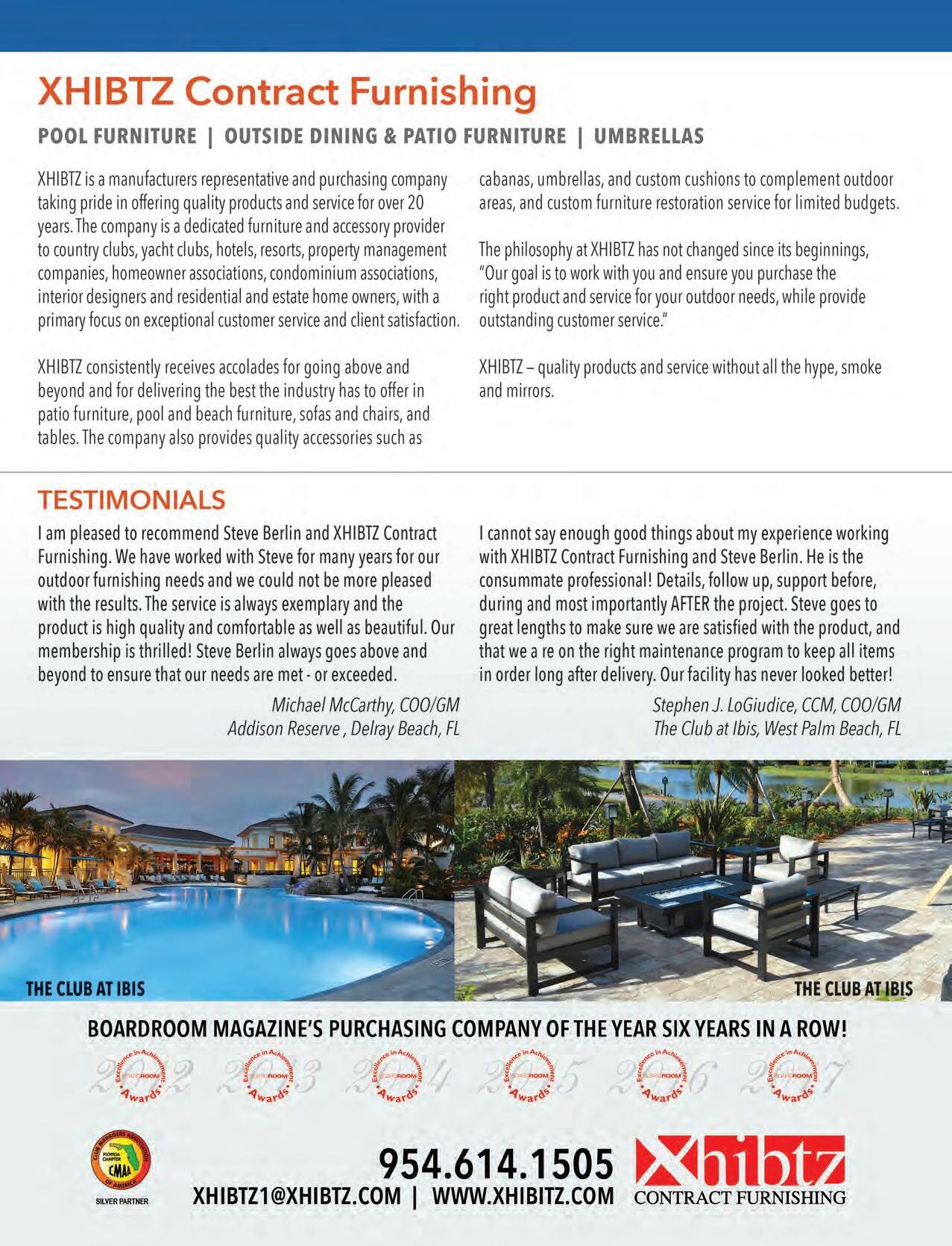

more pressing than implementing a new technology solution. From a member perspective, clubs are upholders of tradition. Introducing a new technological process before there is an appetite can feel heavy handed, understandably generating some resistance.
3) We believe that providing awareness of the technology that’s available is the best approach. By attending and participating at professional trade group conferences, writing for trade publications and meeting with clubs on an individual basis, we can best provide advice and answer questions as needed. When a club is ready, we will be there to help them determine how technology can be leveraged to make their club more successful.
ryan maione, preSiDent
1) Because of a variety of factors, what is considered technologically behind probably differs from club to club and region to region. In fact, many clubs have led the charge in adopting new technology, which has enhanced the member experience. For clubs that are behind, it could be fear of change, or, fear of non-acceptance of a new product or system within the membership’s eyes.
2) Club staff and committees have a continuously changing list of priorities and there’s a resistance to adding additional work to an already stressed schedule. In addition, some members are resistant to change or new trends. The time and effort required to convince members on how this new technology will benefit them can be a challenge, so some clubs choose to defer their resources toward amenity-based improvements.
3) Education, consulting, and information sharing. When the conversation turns to club technology, suppliers need to take an educative role to ensure clubs are aware of what is available, how to use it, and how it will benefit their membership. This can be accomplished through hosting webinars, speaking at industry events, and spending dedicated time with our clients. Club management professionals are unbelievably active in their professional associations and they consult with each other about what is working and not working at their respective clubs. This peer-to-peer information sharing is a great resource for clubs researching and solving similar challenges.
bill WaGner, club inDuStry aDviSor marK SchlaKe, vice preSiDent For proDuct StrateGy
1) A few years ago, technology at clubs was mostly about accounting and point of sale systems. These functions were under the purview of the controller/CFO. Technology and its impact progressed to other club functions but the gatekeeper for evaluating the technology has still been the controller, which has resulted in non-accounting products being given lower priority. Clubs therefore have been slow to embrace technology.
Clubs are slowly breaking this paradigm and relevant department heads are becoming key stakeholders in the technology decision and trying to adapt to the technological changes. However, with so many choices and new ways of doing things there is a bit of fear of “where do I start, am I making the right decision, or should I wait for the next new better thing” that is causing clubs to be behind in using the technology that’s available today.
2) There are two primary roadblocks that prevent clubs from using technology.
a. Fear of change- Clubs like any other institution get used to status quo and are fearful of how the technology will disrupt their daily routine, whether the staff will be able to cope with the change and whether it will create more work for them. New technology also comes with a list of specific issues like security breaches, member data being leaked and reaction of members to technology.
b. Cost is another roadblock that is always raised when new technology is discussed. It’s important for clubs to realize that with decreasing hardware and licensing costs, cost to members is just a few dollars a month. Additionally, well thoughtout and implemented technology in most areas decreases overall cost and improves member service in the long run.
3) Vendors have to build systems that work and are easy to learn and use in an ongoing fashion. The suppliers need to concentrate on the true benefits of integrated systems and how each system benefits the departments, the members, the management team and improves the effectiveness of the general manager and how he or she communicates with the board of directors.
John Finley, manaGinG partner
1) Clubs are slow to adopt technology for two reasons: First, demand for club membership was in its zenith when technology was being introduced to the industry and traditional club process did not demand proactive thinking. As a result, the adoption of tech in clubs was delayed. Second, the size of the industry relative to other hospitality segments is too small to attract the attention of the large companies in the tech space. Great hospitality technology is developed first and priced for the larger market segments.
2) Awareness and cost. Awareness of the available technology is limited to a handful of companies promoting tech in the club space.

Technology pricing in the hotel segment is significantly higher than clubs are accustomed to. Most of the club specific tech vendors are asked to provide a “complete solution” solution for a fraction of the price the larger developers are charging hotels. As a result, the club solutions are not as robust.
3) Continued education through CMAA and BoardRoom magazine to promote solutions that may not be traditionally offered to clubs. Attendance in non-club events like the HFTP conference and HITECH show is always an eye-opener for club managers.
TAI CLUB MANAGEMENT SYSTEMS
miKe talbot, principal
1) Education drives all. Traditionally, clubs have been slow adaptors of technology mainly because of a lack of understanding the capabilities. While that trend has reversed itself, we are seeing a growing trend for clubs to rely too much on technology to manage the club. Education has always been the key, not just knowledge of technology but how to manage that technology.
2) Knowledge of what technology can do and what technology should do is first. The second is when decisions are made by persons lacking that knowledge. You can put the best set of golf clubs money can buy in my hands but that will not put me on the tour. Too many managers or board members fail by believing technology will fix issues that they themselves cannot.
3) Three things: Vendors have to be a partner in technology with their customers. Vendors have to understand the clubs needs and the industry. Finally, those vendors that are overselling technology for the sake of the sale have to stop.
The answer to these questions is education. Unfortunately, there are too many scenarios where the student is incapable of understanding the lesson while ‘teachers’ have their own agenda. The solution is to partner with a vendor that understands the club’s needs, understands what technology can do and puts the club’s needs first. br

APCD believes that effective board leadership and governance requires an ongoing commitment to board development and to a healthy board/staff relationship. We work to effect positive change with club boards and their committees. APCD helps your club:
• Reduce micromanagement
• Minimize board member liability and nurture tax-exempt status
• Create a shared playbook
• Focuse on collaborative governance
Do you believe effective club governance is critical to your club’s long-term success?
Are you looking to reduce micromanagement in your boardroom?
Are you concerned about your club’s legal exposure?
Are you concerned one of your board members may violate privacy issues?
Contact APCD today! We can strengthen and support your board!
Gordon Welch: (918) 914-9050



“club management is notorious for operating in the weeds. We’re so busy getting through each day and serving our members in an increasingly complex world that we don’t have time – or don’t make time – to think big, push for development and dream outside the box.
“If you want your club to be transformed by technology, you have to be willing to commit the creative energy as well as the capital.”
That’s the opinion of Ron Banaszak, chief operating officer of The Fountaingrove Club in Santa, Rosa, CA, and it’s also likely the viewpoint shared by many more private club managers around the country.
And it’s likely the fact that board members, general managers and COOs, and staff members often are intimated by what they face.
“Some managers are unwilling to adopt technology for the simple fact that they are not familiar or comfortable with technology,” intoned Frank Cordeiro, chief operating officer/GM of Diablo Country Club in Danville, CA.
“It’s easier, or so it seems, to just avoid it and to continue doing things the same way. Like with a bad round of golf, there’s no shortage of excuses. It’s too expensive, I don’t want to compromise the personal touch, our club is traditional, the transition is timeconsuming, etc.
“Assessing the appropriate level and use of technology … is a complex endeavor. First, no two clubs are alike and thus it varies from club to club. If I were to generalize and simplify the assessment as to why clubs are behind in technology, I’d focus on two primary issues: 1) the management team’s tech acumen, or lack thereof, and, 2) the absence of quality, integrated, industry specific solutions (i.e. applications, tools, software) for clubs,” Cordeiro added.
“Most clubs in our niche industry, including the ‘tech friendly’ early adopters, are forced to take a fragmented approach to tech or settle for an integrated but less than complete and robust solution.
“In my view, if you want best-in-class solutions that meet the expectations of today’s tech savvy members, you are likely purchasing standalone solutions for the myriad functions now common in most clubs such as room reservation systems, online dining reservations, personalized apps, private consultation booking (i.e. personal training, lessons, massage), dashboards, banquet booking software, CRM, event specific P&L statements, just to name a few.




“This fragmented approach is less than desirable but, unfortunately, necessary if you want best-in-class applications and options for your members,” Cordeiro offered.
So why are general managers less than enthusiastic in pushing for change?
“GMs can do more to push for creativity,” Banaszak injected. “We tend to be budget-conscious and, instead of seeking out creative software solutions, we gravitate toward solutions that exist and work now. With more courage and creativity, our industry could be leading the charge in new technology.
“Controllers also contribute to the resistance. Controllers are often fearful of change, especially when they perceive it as relinquishing control. We all need to shift our mindsets to thinking about long-term benefits,” he added.
“Avoiding what you don’t know is part of the human condition,” Cordeiro shared. “If you’re not tech-savvy, you’re less likely to consider and implement modern applications and tech specific solutions in your club.
“Frankly, with our financial and performance metrics, both of which are common place in modern business, many managers don’t want the membership or the board to have the visibility inherent with these tools. It’s a defensive approach that much too often leads to angst, conflict and failure.”
Fact is today’s technology can help club members and the member experience.
“Advanced member tracking will allow us to serve our membership intelligently. If clubs use technology to recognize a member’s behavior (when they visit, what they order, where they prefer to sit, their favorite server, their favorite tee times), we can track that data and use it to predict needs and provide a highly customized member experience,” Banaszak commented.
“Additionally, technology lends convenience. With facial recognition and thumbprint technology, membership cards and keys become a thing of the past.”
Chief operating officer Banaszak is in a unique position because The Fountaingrove Club in Santa Rosa is undergoing a total rebuild after the destruction caused by California wildfires. This is expected to create opportunities for the club to be a technological leader.
“Advanced member tracking will allow us to serve our membership intelligently. If clubs use technology to recognize a member’s behavior (when they visit, what they order, where they prefer to sit, their favorite server, their favorite tee times), we can track that data and use it to predict needs and provide a highly customized member experience.
“Additionally, technology lends convenience. With facial recognition and thumbprint technology, membership cards and keys become a thing of the past,” Banaszak shared.
“I envision a club of the future in which a member walks in the door, flashes her FOB, and automatically, the club is ready for her. The bartender has a notification to prepare her favorite drink; the front desk sees her upcoming reservations, as well as a photo of her
family with her children’s names. Her favorite server is assigned to her table, and takes her order using a tablet. Everything is slick – free of keys, POS, paper, waste, confusion. And the member feels secure and special,“ Banaszak exclaimed.
“There was a time when people were afraid of how members would react to this technology –was it a bridge too far? Too modern? Did it encroach on privacy? For better or for worse, Smartphones and social media have shifted that paradigm. People are used to being monitored and understand that, if done elegantly, monitoring can result in a personalized, relevant experience. The same can be true at clubs.”
Still some clubs are mired in age-old technology.
“So, how do you think a member feels about their club when they drive up to a clunky landline phone on the 9th tee to order a hot dog and the busy attendant doesn’t answer promptly, or worse, the attendant answers but background noise and static prevents them from hearing the attendant?” Cordeiro queried.
“How many of the activities and services that you offer at your club require the member to actually call the club? Is that convenient? Are you open 24 hours a day? Keep in mind, the technology doesn’t replace the members’ option for a ➤
Some managers are unwilling to adopt technology for the simple fact that they are not familiar or comfortable with technology. It’s easier, or so it seems, to just avoid it and to continue doing things the same way. Like with a bad round of golf, there’s no shortage of excuses. It’s too expensive, I don’t want to compromise the personal touch, our club is traditional, the transition is time-consuming, etc. Assessing the appropriate level and use of technology … is a complex endeavor.
Frank Cordeiro, COO/GM
Diablo Country Club in Danville, CA



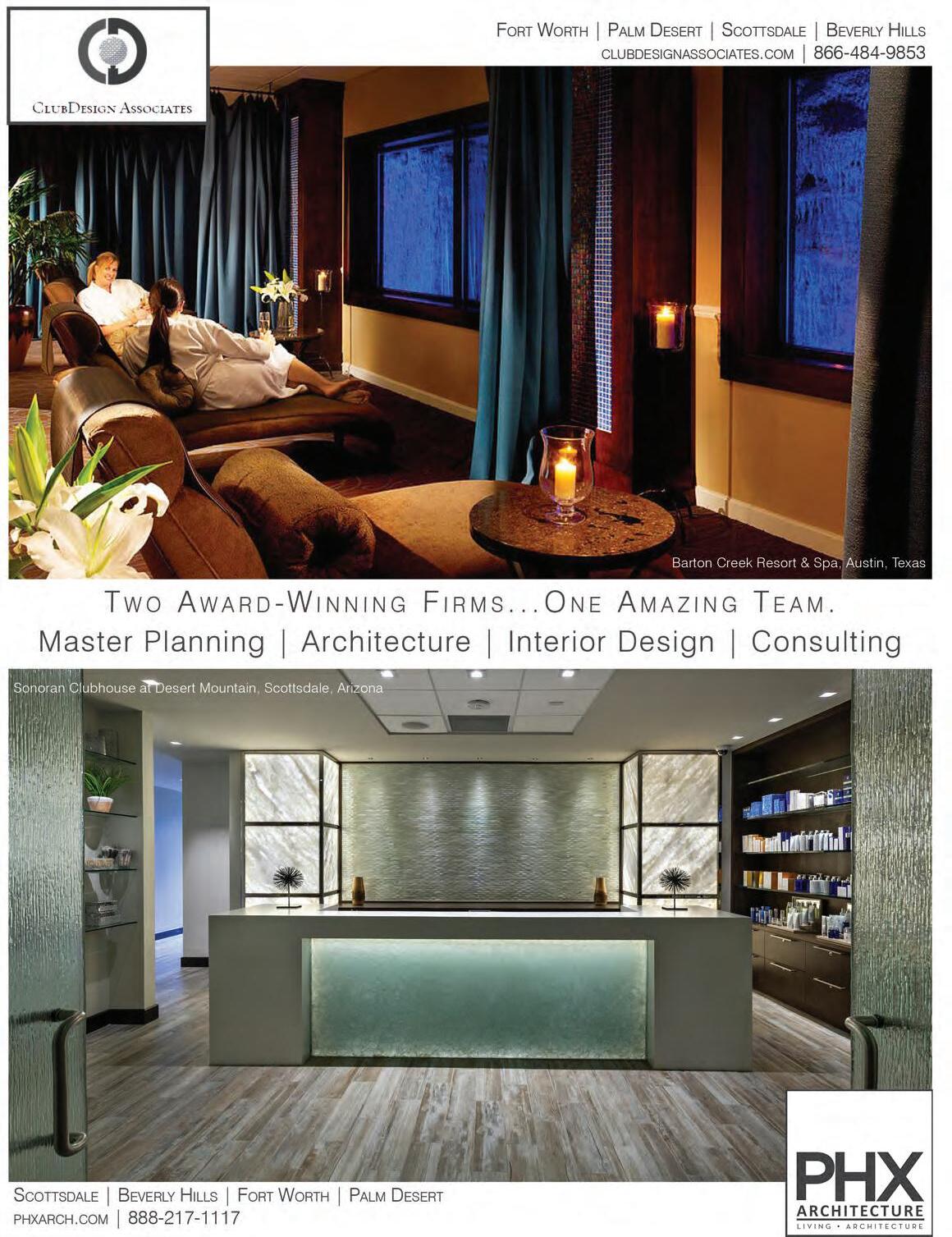

personal touch, it merely offers the convenience and puts the choice in the members’ hands as opposed to forcing them into a choice that isn’t convenient and/or preferred,” he added.
In Cordeiro’s opinion, the golf course is one area underappreciated for technological advance.
“Course maintenance equipment today is light years ahead of just a decade ago. Autonomous mowers, hybrids and electric mowers are no longer a thing of the past. Modern irrigation systems allow real-time soils analysis including salinity, temperature and moisture. This technology puts data and control at the professional’s fingertips and yields tremendous savings in water expense and provides better conditions for our members, all while saving a precious resource,” Cordeiro enthused.
“Aside from ‘conventional technology’, I’ve had the pleasure of pioneering a project with club leadership at Diablo Country Club, which will allow us to move from buying water to producing our own. We will be building an MBR (micro biological reactor) water recycling plant on our property. This is a one-of-a-kind privatepublic partnership with limitless positive implications for our environment and our industry,” he explained.
Banaszak suggests there are other applications clubs are not, but, likely should be using.
“Energy management software is one of the most essential and underutilized technologies,
especially in California. These systems monitor your property’s heating, air conditioning and electricity, adjusting every room based on use. Not only is this the environmentally right thing to do, it saves huge amounts of money.
A recent demonstration from Arloopa, an app that creates 3D holograms has also drawn Banaszak’s attention.
“Members place an Arloopa magnet on their fridge and, when a new message is available, they receive a text notification to wave their phone in front of the magnet.
There, a 3D hologram message appears from the club. You could use this to announce anything from dining specials to reservations to traffic notifications. That’s the kind of technology we need to be pushing for!
“I’m still looking for a truly sophisticated business intelligence software –something that pulls data from sales, revenue, labor and member satisfaction and crunches it into elegant reporting mechanisms. The club industry has developed iterations of this, but nothing is up to par. As an industry, we need to adopt this technology to survive,” Banaszak opined.
He also views communications as another ‘massive area of opportunity’ for clubs.
“Newsletters will always have their place in private clubs, and they should be digitally accessible, interactive and multimedia rich. Emails need to be target-marketed, mobile friendly, slick in design and easy to consume. Clubs need to communicate with their members across every platform – print, email, website, text and social media – acknowledging that each member prefers to receive their content in a different way,” he explained.
“You can’t take ‘no’ for an answer, when it comes to technology You have to push aside road blocks and fight for the capital to invest in innovation. You’ve got to tap into consultants from other industries, and advocate for the investment in your finance committee and board.
“The goal should always be member satisfaction and member retention. Every investment in technology should be made with an eye toward creating systems that allow you to better serve, understand and retain your members. Similarly, the technology should improve their experience, so they’re inspired to invite their family and friends to join,” Banaszak opined.
“Managers must be viewed as their club’s leader, and as leaders, the manager must be the go-to person for the board and for the team of professionals we serve and employ,” Cordeiro offered.
“To earn the trust and confidence of these stakeholders, we must embrace data and technology. Embracing technology doesn’t require a tech degree or extensive expertise, just the willingness to accept and leverage the power of technology and to lead the implementation of tools and applications that will improve your team and, ultimately, provide a better experience for your members.” BR



“Armen, after evaluating our options and several firms, we believed that KK&W provided us with the best set of skills, experience and industry contacts to present us, in a timely manner, a group of potential candidates for consideration of our GM position. You guided our Search Committee masterfully throughout the process. Your insights and guidance were invaluable to us through the candidate interviews and final selection process. Your communication kept us informed and made us all feel comfortable with the progress we were making at all steps of the process.”
Smith, Search Chairman Green Hills Country Club, Millbrae, CA
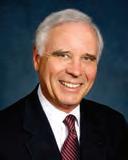


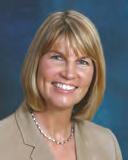
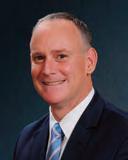



S PECIALIZINGIN G ENERAL M ANAGER /COO, D IRECTOROF G OLF, G OLF C OURSE S UPERINTENDENT, E XECUTIVE C HEF, R ACQUET S PORTS P ROFESSIONAL , C OMMUNITY A SSOCIATION M ANAGER , A SSISTANT G ENERAL M ANAGER , C LUBHOUSE M ANAGER /F OOD & B EVERAGE D IRECTORAND F ITNESS D IRECTORSEARCHES , ASWELLAS S TRATEGIC P LANNINGAND C ONSULTING S ERVICESFORPRIVATE , RESORTANDDEVELOPER - OWNEDPROPERTIES .

Register today to attend a truly remarkable “one of a kind” day of education, which continues to receive rave reviews from previous attendees. Visit www.cmaa.org and click on events. December 4th at Pinehurst Country Club – Denver, CO
What gets measured, gets managed!
That’s an oft-repeated line that’s very true for private clubs wanting to know just how effective they are in meeting the demands of their members.
And that’s the essence of ClubIQ®, an online software tool created by BoardRoom’s Distinguished Clubs to help clubs understand what their members want and need in today’s very competitive private club market.
It’s especially true for the Country Club of Rochester, NY, which has successfully adopted the innovative ClubIQ ® survey-polling system to better understand what their members want from their member experience
“We began using ClubIQ® in 2017 as a way to measure our club’s success, to identify opportunities for growth and as a way for us to identify membership value,” explained the club’s chief operating officer Michael Smith.
“It’s been a valuable tool in helping us grow our service program over the last year. By looking at the information provided daily by ClubIQ®, we can identify problem areas immediately, whereas before we would have a yearly survey that would give us outdated information for feedback that’s no longer relevant.”
The Country Club of Rochester also incorporated a ‘new’ service program…a structure of standards, through the private club industry consulting firm, Kopplin Kuebler & Wallace. It complements ClubIQ®
“Our service program is new to our club, but one that has brought a great deal of success in a short period of time,” offered the COO Smith.
“We began to develop our program a year ago after a realization that we wanted to be better as an organization. We were certainly doing a number of good things, but we saw the opportunity to be better and really felt it was important to create a set of standards for our service team to follow.
“We also wanted to be able to reward success, which is something our club had not done previously. The hardest part was taking our vison and putting it to paper,” explained Smith.
“With the help of Tom Wallace and Sam Lindsley (of KK&W), we have been able to accomplish this. Both Tom and Sam did an initial evaluation of our club to understand our needs, met with our senior managers, staff and members to get a feel for where our opportunities were and helped us developed a service plan based on our needs.
“The process has taken our team on an amazing journey over nine months with goals and objectives that we needed to accomplish during this time period. The program focuses on team on-boarding, leadership, and provides standard operating procedures for our team to follow,” Smith added.
“Our members want our club to succeed, and by utilizing ClubIQ® we have factual information that allows us to make the best decisions. We use the information in our staff meetings, club committee meetings and board meeting to gauge club value.”
The Country Club of Rochester uses ClubIQ® to track member experience in all club areas, but where it has benefitted the club most is in the clubhouse, especially with the club’s food and beverage department.
“This was an area where we would receive the most member feedback and an area we wanted to improve the most. When we first began using ClubIQ® our service scores were average. That’s not where we wanted to be,” Smith exclaimed.
“This allowed us to identify the need to change our service culture and dive deeply into the areas where we felt we could improve. Over the course of the next year our team meet on a regular basis to established service goals. We identified the need to recreate a better standard to onboard our service team members and place our best team members in the right places.
“As we began making these changes we saw rapid growth in our ClubIQ® scores. What was a consistent rating of seven for service a year ago, is now 8.5 to 9. Having ClubIQ® and using it on a regular basis has allowed us to be successful,” enthused Smith.
Using ClubIQ® also enables the club to make decisions about improvements and allocation of the club’s resources.



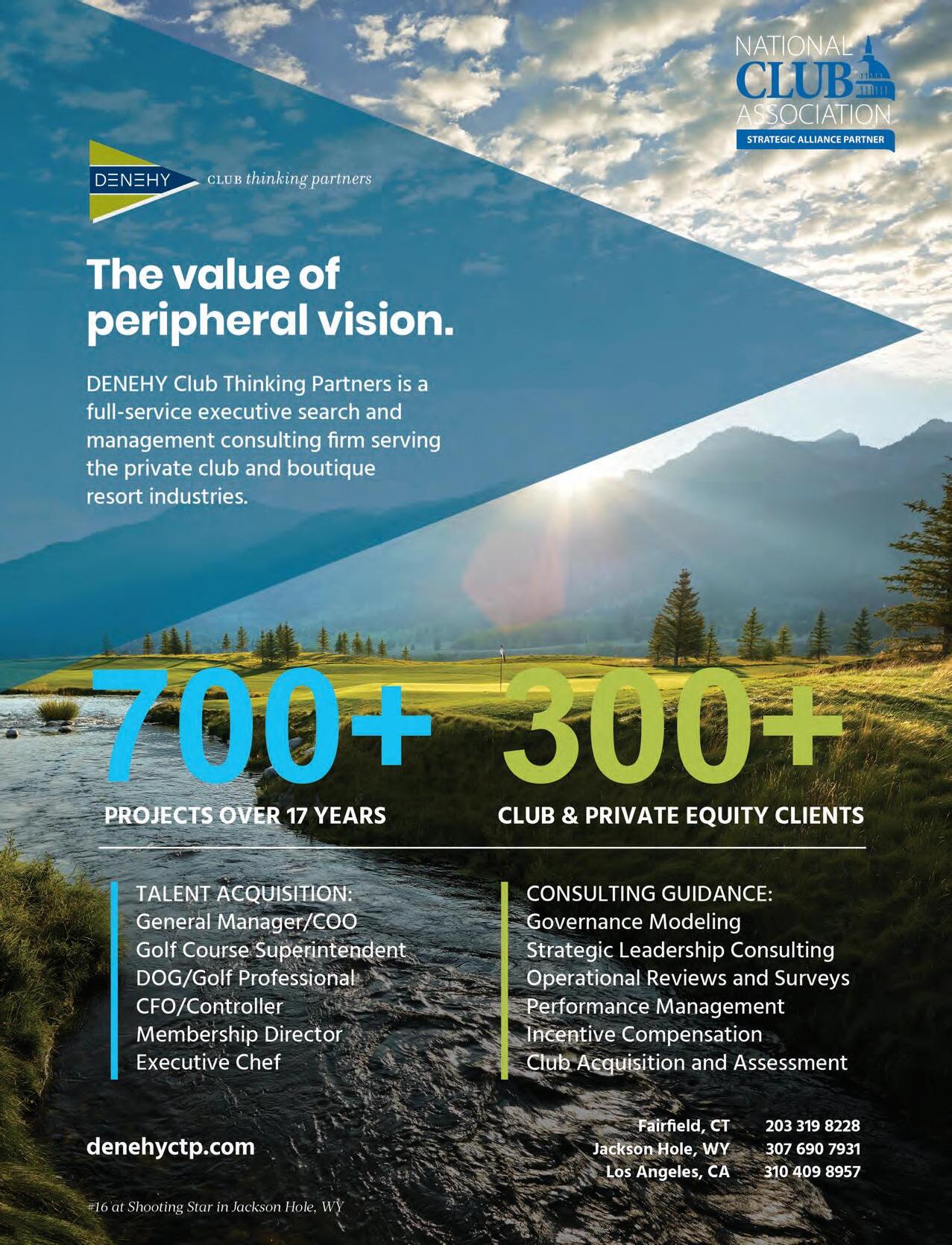
“It allowed us to take another look at what we were doing in all of our departments and brought our senior team and staff closer together. We also identified the need to invest more into our training programs, identified the need to do more with staff retention and helped us build a robust rewards program for our staff that goes above and beyond at The Country Club of Rochester,” Smith outlined.
“By developing our club’s service program and by using ClubIQ® as a tool to track progress, we have been able to reduce employee turnover by 75 percent.
“We have confident employees working in a positive environment that recognizes success. Our member experience scores have increased, which leads to more members using the club and bringing their guests, and
we’ve established a set of standards that we follow as a service team to provide the very best to our members and guests,” Smith explained.
ClubIQ® found its genesis in the methodology used by Boardroom’s Distinguished Clubs to extract, distill, and measure a club’s member experience through their onsite survey process and subsequent formulaic evaluations that determine Distinguished Club award status. An objective of Distinguished Clubs, of course, is to help vitalize and preserve the institution of private clubs by fostering a ceaseless drive to improve the experience private clubs provide to their members.
“Since 2012, we’ve been using our methodology to make the Distinguished Clubs award program completely (and uniquely) merit based.
“It’s one that evaluates a club according to the member experience that we extract, distill, and measure through our inperson, onsite surveys. In 2015, we then began to develop ClubIQ® so that club managers could leverage this same powerful methodology to measure member experience directly from their own members and on an ongoing basis throughout the year,” explained Keith Jarrett, president of BoardRoom’s Distinguished Club program. And that’s exactly what the Country Club of Rochester is doing every day.
ClubIQ® survey-polling software allows clubs to actively monitor their member experience and make timely improvements in response to member sentiment and requests.
It’s on-going with daily data collection throughout the year. It’s timely and relevant because it offers insight gained daily about recent member experiences, providing proactive insight.
ClubIQ® has helped private club general managers gain realtime insight about departments and what matters most to their members. Through a variety of powerful features, ClubIQ® presents managers with member experience ratings for each club department on a daily basis, and then provides the means to dive deeply into the data to quickly pinpoint anything that needs immediate attention, for example:
ClubIQ® daily intelligence report: A top-level summary report is automatically emailed to a club’s general manager every day, providing quick reference to important member responses collected each day and over various time periods.
Net promoter score® (NPS®): The established powerhouse customer loyalty metric based on the direct question: How likely are you to recommend our club to a friend or colleague?
Member experience index™ (MEI): An innovative, proprietary ClubIQ® metric that answers the question: How good are we at providing the best possible member experience, according to what most important to our members?
Average member satisfaction: Providing the unweighted raw average of your members’ responses, this metric is comparable to the what’s gathered from traditional annual surveys, but via ClubIQ® it’s provided on a daily basis throughout the entire year.
The ClubIQ® “Quad Chart”: Formally, it’s the “Experience versus Importance Quadrant Analysis Matrix”, but whatever you call it, the ClubIQ® Quad Chart is perhaps the most powerful feature of all, because it enables managers to quickly identify exactly where to focus efforts to improve the club’s member experience.
“ClubIQ® delivers incredibly timely and highly actionable insight into how a club’s members perceive and talk about their club - in near real-time. This enables club management to respond and make adjustments immediately, if not proactively, before things become entrenched,” Jarrett explained. Because private clubs are always seeking ways to better understand current member experience, perception and overall satisfaction, there’s always been a need to get more timely and more actionable member feedback in the hands of management. That’s the essence of ClubIQ®
Distinguished Clubs recently launched an even more powerful version of the ground-breaking system. ClubIQ®-Pro, an enhanced version of ClubIQ® is now available to clubs and offers even more features that are especially useful for larger clubs with multiple dining venues, multiple golf courses, or second locations, including:
• Modification of the wording of each/any survey-polling questions (within certain constraints – i.e., they must still adhere to the five “Qualities” that define Member Experience and be the same in number – typically five per department).
• Add multiple departments of same type (i.e. multiple dining areas, multiple golf courses, etc.).
• Add custom departments (i.e. Bocce ball, skeet shooting, etc.).
• Choosing to offer a “not-applicable” option for each survey-poll question pair.
• Choosing to allow members to submit comments at the end of the survey-poll.
“ClubIQ®-Pro is a step beyond, offering clubs more flexibility and even more insight and utility,” Jarrett added.
“ClubIQ® and ClubIQ®-Pro empowers clubs to manage better by providing timely, actionable information by - not surprisingly - ‘replacing emotion with facts.’” BR



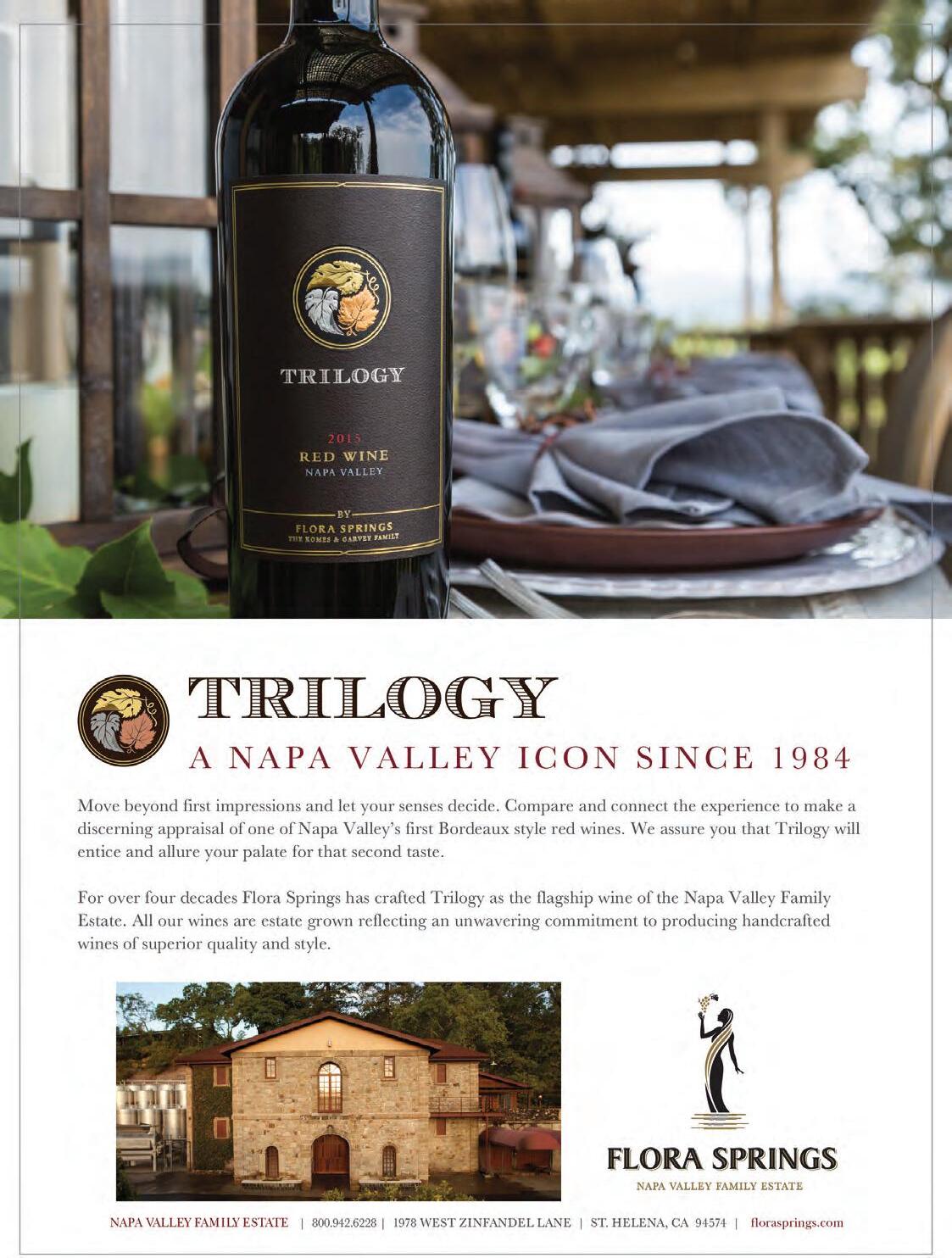
By Gordon Welch
Technology is on the low end of the curve in clubs and it generally has been for years … until now.
The Association of Private Club Directors (APCD) has launched the long-awaited BoardRoom Institute!
Board members as well as committee members now have a state-of-the-art training system, the only system of its kind, to help guide them in their duties as board members.
The platform is designed by Lightspeed VT, the most prominent training platform in the world, while the content is provided by trusted leaders and top content experts in the industry, through BoardRoom Institute
Together, we have developed the most effective and engaging web-based training ever. Our interactive, virtual training system provides the foundation for quickly creating and deploying a world-class club training experience like no other.
Most clubs currently have an annual board overview. By that I mean the GM/COO reviews a few years minutes and talks about club history with department heads. The clear majority do not discuss club governance, fiduciary responsibility, micromanaging, risk management or sexual harassment to name a few.
Today, boards must be informed and aware. Yes, many of your board members have been in corporate leadership roles but the private club is a different animal. The knowledge and skill sets are very different.
BoardRoom Institute provides over 50 videos that have been developed within the following seven areas: An introduction into Private Club Management; Private Club Governance; Committee Roles and Responsibilities; Private Club Finance; Management; Ingredients of Successful Club Boards and Strategic Planning / Long-Range Planning.
We have developed this effective and engaging training specifically for each director position and their role as a board member. It doesn’t end there. We believe your committee members need knowledge of their role, club governance and hierarchy of the club. The more training you can provide to your board and committees the better your operation, understanding, communication and member experience.
The process is easy – call our office at (949) 376-8889 or email gordon@apcd.com to schedule a demo. Once you’ve experienced the process and joined, our staff will need a listing of your board members, email and their position on the board, as well as any committee members you want to engage.
Again, each board position has a focused training. For example, the chair of finance will have different educational requirements from those of the pool committee chair or secretary. Each chair will have specific modules to review.
Once your board and committee members are registered in our system, the learning experience will begin. Users log-in to the system with their own unique credentials and your video modules will load for your review.
Once you have reviewed a video, a knowledge assessment will appear with three or four questions. If by chance you were distracted and missed a portion of the training and missed a correct answer you will be required to watch the video again.
One of our vendor partners has agreed that this training is so beneficial thast they will offer a 10 percent reduction in Officers & Directors (D&O) Insurance for your club if ALL board members complete their training. That can be a significant amount.
The education is trackable, and the club president can track everyone in their training. Some individuals may need some encouraging to complete the program.
BoardRoom Institute also includes a vault system that holds job descriptions, board assessments and much more. The Association and BoardRoom Institute is THE ONLY association representing the Board of Private Clubs.
APCD is your boards’ professional society to look toward for guidance and education. Call today for a demonstration and more information regarding APCD and BoardRoom Institute! BR
Gordon Welch is president of the Association of Private Club directors and can be reached via email: Gordon@APCD.com




By Donald N. Williams
Have you ever thought about the word “groups?”
Early on in my 40-plus years of serving the club industry, I came to understand that without groups, private clubs simply would not exist. By definition, a group is “two or more individuals that are connected to each other by social relationships. Groups tend to interact, influence each other and share a common identity.”
Groups are important not only because they offer social support, resources and a feeling of belonging, but because they supplement an individual’s self-concept. To a large extent, humans define themselves by the group memberships which form their social identity. The shared social identity within a group influences intergroup behavior – the way in which groups behave towards and perceive each other.
Once we have considered the real importance of groups within a private club, it may be easier to understand why some clubs succeed while others face dwindling membership and failure. After all, a private club is essentially one large group held together by an interwoven network of smaller groups. The golf groups, the tennis players, the members who never miss a party –all individual subsets that make up the whole. Often a club’s ability to retain a strong membership can be traced to the success of its group dynamics. In fact, the number one reason most people leave a private club is because something happened to their group, albeit golf, tennis or social. Someone resigned, moved or even died and the group began to splinter.
So what role does (or should) technology play in helping clubs and their members hold those groups together? The world has changed dramatically over the past several years, but never so much as we have seen in the past few years with regards to group communication and management through technology. First and foremost is how social media has impacted how groups manage themselves. Communication has left the world of verbal conversation and has become massively dependant on such platforms as Facebook, Twitter, Instagram, Snapchat…to name a few. The club industry even has its own communication App platforms such as Clubster and Go Club. In fact many clubs have developed their own proprietary Apps.
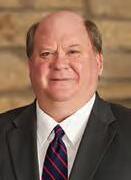
In this new environment, private club must work at using technology to help current and perspective members build and foster the entire group concept. Even though many of your members spend less time than ever at your club, they still want and need to be a part of a common identity, a part of a group, and feel connected to that group. If you hope to hang on to them as members, they must feel connected to their groups.
WHAT ROLE DOES (OR SHOULD) TECHNOLOGY PLAY IN HELPING CLUBS AND THEIR MEMBERS HOLD THOSE GROUPS TOGETHER? THE WORLD HAS CHANGED DRAMATICALLY OVER THE PAST SEVERAL YEARS, BUT NEVER SO MUCH AS WE HAVE SEEN IN THE PAST FEW YEARS WITH REGARDS TO GROUP COMMUNICATION AND MANAGEMENT THROUGH TECHNOLOGY...IN THIS NEW ENVIRONMENT, PRIVATE CLUB MUST WORK AT USING TECHNOLOGY TO HELP CURRENT AND PERSPECTIVE MEMBERS BUILD AND FOSTER THE ENTIRE GROUP CONCEPT.
Whether or not a club’s leaders feel ready to embrace group technology in their own lives, it is a reality – a whole new world – and a large majority of your members have already gone there. They are becoming more reliant every day on the new technologies that allow them to communicate, stay connected to their groups and manage their busy lives without verbal conversations. For that growing group of members, clubs will have to do whatever it takes to help them stay closer to their sub-groups and connected to the club, or risk losing them. Long ago there was a slogan for the telephone company that simply said Reach out and touch someone! Today, you should utilize every tool technology has to offer to “Reach out and digitally touch ALL of your groups of members!” BR
Donald N. Williams is the CEO of ClubTec. For more information, please contact him at 800-800-5506 or by email at dwilliams@clubtec.com. You can also visit our website – www.clubtec.com. .
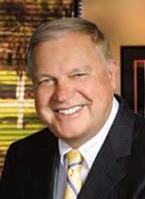
BOARDROOM TECHNOLOGY FEATURE | Northstar
By Bill Wagner, CCM
Shadow Wood Country Club, one of the premier country clubs in the country with 72 holes of golf, is located in Bonita Springs, FL. Shadow Wood has been a Northstar customer since 2012 about a year after the members purchased the club from the developer.
“My goal as a general manager is always to research and implement best practices in all areas of our operation to increase our team’s efficiency and most importantly, member satisfaction. Northstar is one of those resources that I can rely on to achieve both member and staff satisfaction. They are constantly bringing new ideas to the table to help us run the club better and we have embraced their innovative culture to ensure Shadow Wood is at the forefront of the newest club technology available.”
BRIAN BARTOLEC, GM/COO
Shadow Wood started with a few modules from Northstar like accounting, F&B and proshop. Northstar continued to create new and innovative products for the club industry and as Shadow Wood became more comfortable with the software the club eagerly adopted the new modules with added functionality from Northstar.
Today Shadow Wood has a world class website designed by Northstar in addition to ClubNow Mobile App, ClubView Staff Application and Grab ‘N Go to name a few.
“Since the implementation of the full Northstar suite in 2012, Shadow Wood Country Club has been able to operate much more efficiently while greatly enhancing the member experience from the point of making a reservation to paying the monthly member bill. The club has been able to operate much more efficiently allowing the back-office departments to do more with much less resources required.”
SOREN SPIERS, CFO
The membership at Shadow Wood has continued to grow steadily and the club will be adding to the alfresco dining experience by expanding their outside seating including a state-of-the-art dedicated kitchen.
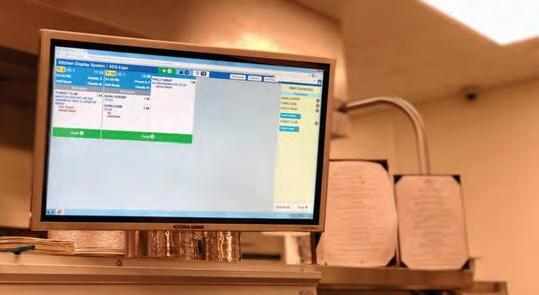
The club also installed the Tableside Tablet POS and the Kitchen Display System (KDS) from Northstar this year to better streamline their kitchen operations and improve the dining experience.
Shadow Wood is truly leading the way in the club industry by employing technology to increase staff productivity and enhance the member experience. BR
William “Bill” Wagner is the club industry advisor at Northstar. Bill, a former President of the Club Managers Association of America (CMAA) was previously the GM at Shadow Wood Country Club and Riviera Country Club. He can be reached via email at bill.wagner@globalnorthstar.com
“Shadow Wood launched a brand new website with Northstar in 2016. The public side has seen increased organic traffic, showcasing our club to prospective members in a great way. The private side has given our members an online resource to come to for club information, dining reservations, member directory, and statement viewing and paying. They love how simple it is to use and the Northstar mobile app has been a huge hit with our members!”
DANITA OSBORN, DIRECTOR OF MEMBERSHIP & MARKETING
“Shadow Wood recently upgraded to Northstar 6.0 and brought in both the tableside tablets for the dining room, and the KDS screens for the kitchen. Both systems have proven to be wonderful additions and have greatly sped up service, as well as accuracy during the order taking process.”
JOHN ST. JOHN, DIRECTOR OF FOOD & BEVERAGE
Figuratively speaking, Club Benchmarking was born in the boardroom of a private club. While sitting in a board meeting at his own club, company founder Ray Cronin came to a startling realization—his own club and others across the country were making critical decisions without access to accurate, reliable industry data to inform that process. While benchmarking and business intelligence tools were in common use in virtually every other industry, private clubs were still operating in the dark, overseeing multi-million-dollar enterprises without data to support their decisions.

Ray Cronin
While Club Benchmarking started out in 2009 with a technology focus, the company has grown and evolved over the last decade, fueled by direct interaction with boards and management teams and through continuous in-depth study of industry data. Today, Club Benchmarking is the nationally recognized leader in business intelligence tools and services for private clubs.
Significant advancements along the way include:
• Identification of a common business model for clubs known as the Financial Insight ModelTM and introduction of club key performance indicators with proven correlations to financial health
“TECHNOLOGY” IS DEFINED AS SCIENCE OR KNOWLEDGE PUT INTO PRACTICAL USE TO SOLVE PROBLEMS OR INVENT USEFUL TOOLS.
With nearly three decades of experience working in and leading high-tech companies, Cronin was determined to develop a tech-based solution that would promote and support data-driven leadership in the club industry. His goal was to consolidate vast amounts of standardized club industry data in a centralized location, analyze the data to identify meaningful patterns and correlations and develop a tool that would make it possible for individual clubs to understand their own financial model and benchmark their performance against industry norms.
The Financial & Operational Benchmarking platform was launched in April of 2009 as an online software tool available by subscription. Nearly a decade later, it is the only tool of its kind available in the club industry, and the database behind it is unmatched in scope or volume.
“I USE THE CLUB BENCHMARKING PLATFORM TO RUN REPORTS THAT SHOW MY BOARD AND COMMITTEES HOW CARMEL SITS IN THE WORLD OF CLUBS ON A WIDE RANGE OF MEASURES. I CAN SHOW THEM HOW WE COMPARE WITH CLUBS IN OUR AREA, OR ACROSS THE COUNTRY, OR RELATIVE TO SIMILAR SIZED CLUBS, OR TO CLUBS SOME MIGHT PERCEIVE AS BEING ‘BETTER’ THAN OURS. IT’S BEEN A VERY EFFECTIVE WAY TO TAKE ANECDOTAL INFORMATION OR PERCEPTION OUT OF THE EQUATION WHEN WE’RE MAKING DECISIONS.”
JOHN SCHULTZ, CCM, CCE GENERAL MANAGER, CARMEL COUNTRY CLUB, CHARLOTTE, NC
• Confirmation of significant variation in club outcomes based on the financial focus of board and management, i.e. very healthy clubs attend to, maintain and improve the health of the club’s balance sheet versus concentrating solely on the club’s income statement.
• Diagnosis of chronic and pervasive underfunding of capital reserves in the club industry. Club Benchmarking research shows two-thirds of all clubs have net worth (aka members’ equity) that is either flat or declining over time (20062018). Clubs that have invested consistently over the last 10 years are experiencing a corresponding increase in members equity over time.
• Ongoing development of tools and services designed to support data-driven leadership comprehensively, across all aspects of the board and management’s fiduciary responsibility to the members. Club Benchmarking Solutions are built on a foundation of data and research to deliver actionable insight for clubs. The Solutions menu includes:
> Financial and operational benchmarking platform
> Capital planning solutions – reserve studies and strategies modeling
> Advanced compensation and benefits benchmarking and workforce analysis
> Employee engagement analysis
> Membership surveys for motivation, satisfaction, value, attachment and loyalty
> Net worth and balance sheet analysis
> Board advisory services
> Strategic monthly dashboard BR
For more information, visit us online at www.clubbenchmarking.com























































































By Mike McCleary

clubsystems group has experienced long success in the private club technology industry by adhering to its belief in providing responsive and reliable support, extraordinary professional services, and product development that is responsive in the short-term, while providing vision for the long-term success of the clubs we serve. This philosophy is also similarly shared by other brands in the Jonas Club Software family.
A prime example of a club benefitting from this relationship is Beach Point Club, a premier club situated on Long Island Sound in Mamaroneck, NY. The club has partnered with clubsystems group (CSG) since the early days of DOS-based systems and microcomputers.
“We have long enjoyed our relationship with the staff at CSG. They have truly been our club’s partner in advancing technology from the start, along with exceptional service and support. Software is a necessary tool, but it’s the people behind the software that make a difference,” shares General Manager Randy Ruder, CCM, CCE, who has been associated with Beach Point Club since 1993.
Like other industry-leading clubs of today, Beach Point has utilized a wide variety of modules both internally and memberfacing over the years in service to their membership. After determining a need to expand their existing technology even further, they began to evaluate processes where newer technology would be of benefit to all stakeholders of the club.
“We were looking for a solution that would automate tedious tasks, permitting staff to focus on the bigger picture. We also wanted granular access to our vast database of information, giving us the data we needed to make better (and quicker) decisions” expresses Ruder.
As the club’s management team weighed their options, they came to realize that the best approach was to keep some key technology that they wished to retain with clubystems group, but also re-engineer some modules and expand to new modules available from other companies under the Jonas Club Software umbrella.
Logan Irons, CCM, the club’s director of member services and IT manager, explains how the member facing website remained intact while receiving modern upgrades. “We were able to keep our existing website and email marketing in place, while achieving a greater level of inte-
gration with our back office systems and interactive member-facing systems, including the mobile app.”
Once a decision was made to embrace some new modules, the teams at clubsystems group and Jonas Club worked in tandem with the staff at Beach Point to facilitate the transition smoothly and efficiently.
Data cleansing and standardization can be one of the tedious steps during a software transition process. Working together, the CSG and Jonas Club Software teams made it practically seamless. Trainers were familiar with both software systems and were prepared to troubleshoot when needed.
Irons explains, “The teams at CSG and Jonas worked seamlessly to guide us through the intricate process of cleaning and transitioning our data. The specialists they provided understood the unique nuances of Club data and were able to maintain the invaluable information that we’ve captured over decades of serving our members.”
When it came to automating some areas of operations with new modules, integration overall was an immediate benefit and helped bridge any gaps that existed with previous, sometimes manual, processes.
Assistant General Manager Sarah Kuhl, CCM, CS, describes the benefits of a more integrated platform, “Prior to the conversion, we were utilizing different systems for event bookings, menu/directive production, point of sale, banquet billing and member communications. So much time is saved now that the entire process is in one interface that all of our management team can access in real time.”
Beach Point Club has been able to keep pace with technology, utilizing systems with a depth of features that only years of club industry experience can provide. By looking for additional software from within the Jonas Club Software family, Randy and the team at Beach Point have been able to maintain the cherished relationships and level of service that they have always enjoyed with clubsystems group, while at the same time working with staff at Jonas Club Software.
Ruder elates “Our entire team could not be happier with the product. The transition was well thought-out, the training was personal and the ongoing support has been flawless. The regular updates and ongoing enhancement continue to increase the product value and our satisfaction.” BR
A veteran of the club technology industry, Mike McCleary, vice-president, sales & services, clubsystems group, brings a noteworthy tenure of expertise to his role as csg’s VP of sales & services. Since 1980 with Diamond Management Systems, Mike has lent his experience, professionalism, and accountability to an array of positions, including systems integrator and trainer, support manager, product development manager and account manager. While these experiences are surely diverse, all have provided an outlet allowing Mike to do what he is most passionate about: interacting with a wide array of clients and staff in a variety of settings.
clubsystems group, www.clubsys.com, is a leading provider of innovative club management software, offering products such as accounting, membership management, food & beverage, catering, tee time management, point-of-sale, and various online services. It is our mission to become the world’s premier software provider to the club management industry by providing superior software support and product enhancements for life.

By Bill Schwartz

The latest version of the FOOD-TRAK System now includes an embedded business intelligence (BI) platform. Gartner defines the term business intelligence as a tool that “enables access to and analysis of information to improve and optimize decisions and performance.”
While most F&B systems produce reports and even rankings that can be analyzed to better understand the foodservice department’s operation, this new capability provides a way to visualize and interactively drill down from a company or profit center level all the way to source documents.
The FOOD-TRAK System now provides this type of interactive, ranked graphical view into key areas like inventory, sales, spend and even transfers. For example, clients can see a 3-D pie chart showing total purchases by each profit center, select the profit center they want to analyze more closely and see a bar chart showing the items purchased by that profit center ranked by dollars spent on each item. By selecting a specific item, they can see a list of all invoices containing the item, and by selecting an invoice see the actual invoice itself!
This capability to analyze spend, inventory, menu sales and transfers provides clients a unique way to see the key aspects of their F&B operation in real time, without digging through pages of reports, spreadsheets and source documents. Clients are provided with a series of choices with which they can define the exact scope of the analysis. These options provide for user-defined date ranges, business units to include, items to include, and a variety of other options specific to the type of analysis involved. Once the scope has been defined, a graph is created which provides a high level summary of the data, showing 10 pie slices ranked by value. Graphs can even be displayed in a variety of styles—based on user preference! The detail drill-down starts from there.
Business Intelligence tools represent the next evolutionary step in software development. Unfortunately, most clubs have not invested in food and beverage management software in the first place. They have invested in club management systems, tee time reservation systems, web sites and other technologies, but seem reticent to invest in software to help manage what amounts in many cases to be 30 percent of their revenue.
We have noticed an uptick in purchasing-related programs, including those provided by distributors, purchasing groups and even procure-to-pay software, however these systems fall short of integrated food and beverage management. They tend to be narrowly focused and typically not interfaced with other club systems, causing extra effort or limited savings opportunity. A number of our club clients have tried these approaches – some of whom had the FOOD-TRAK System first – and returned to FOOD-TRAK after realizing the shortcomings and additional labor associated with piecemeal approaches.
With the addition of BI capabilities, the FOOD-TRAK System not only eliminates all double entry by integrating with club POS and accounting system, catering systems and vendor ordering systems, it also provides interactive real-time analysis of critical aspects of the food and beverage operation. Clubs report savings of up to 10 percent of F&B sales, easily paying for the software investment. In addition, the integrated nature of the system creates standardized process flows, allowing for easier training of staff as they come and go. Even F&B directors and chefs can quickly move into position without having to reinvent practices and procedures.
Not only will chefs, F&B directors, controllers, general managers and board members find the operation easier to manage, they will also find their ability enhanced by the real time analysis work they can do with the system. Visualizing issues and trends as they happen results in near-term solutions not possible with the old practice of waiting for the monthly P&L. Perhaps the time has come to acquire some serious business intelligence! BR

The newest addition to the award-winning FOOD-TRAK System’s mobility platforms.
With the FOOD-TRAK Mobile App (FMA) for Android or Apple devices, our clients eliminate printing, filling out and entering data from paper forms. Collect data where it lives, or look up information from wherever you are. Mobility equals efficiency! FMA Features Include:
3 Take Inventory
Use your device’s built-in camera to scan barcodes, saving time and improving accuracy for all types of data collection. Print routing slips, invoice reconciliation reports and recipe right from the device to your network printers.
Join the leaders in the club industry who use the FOOD-TRAK System to manage and control their F&B costs and reduce or eliminate subsidies. Easily affordable and suitable for clubs of all sizes.
So leave your desk, hold the phone and call your FOOD-TRAK Account Manager at 800-553-2438 for more information.



By Jim Fedigan
Anyone can create a product when the product is the starting point. The challenge with this methodology is that you’ll then need to find a market where the product is viable, or convince an existing market that it’s something they actually need.
To truly develop products and services needed by a market, they need to be driven by that market. This is the philosophy that we have always stood by, and we make every effort to ensure that our future isn’t driven by fads, but by the genuine anticipated needs of the club industry.
We believe in direct feedback from our more than 2,300 clients. In 2017, our product managers received over 1,300 ideas directly from our software users. Add feedback from online forums, annual user group conferences, client surveys, and one-on-one conversations at industry events, and our team receives thousands of great ideas every year.
Detailed feedback can be both a blessing and a curse, as many organizations tend to get stuck in the minutia and begin to overlook long term vision. Keeping up to date with where the industry is headed and how we at Jonas Club Software can meet those future needs, drove our decision in 2006 to create our annual executive steering committee meeting.
The executive steering committee is comprised of industry professionals, with new faces being rotated into the mix annually. Committee members join us from clubs across the United States, and from as far away as the U.K., South Africa and Dubai, coming together to help us craft a vision for the future of club management technology.
New to the group in 2017 was Christina Toups, CCM, CCE and general manager of Ridglea Country Club in Fort Worth, TX. Christina is a long time Jonas Club Software client, and was a little unsure of what to expect from the event when she arrived. “I was a little bit uncertain of what the two days may include,” said Christina. “Walking into a two-day thinktank to talk about the future of the club business is a lofty ambition, but the ideas presented by the Jonas Management Team, as well as the input from other participants was inspiring and eye opening. By the end of the meeting, I was very happy to have been able to take part in this process that I think makes Jonas truly unique.”
The executive steering committee has had a strong impact on the ever evolving technology roadmap here at Jonas Club Software, having helped hone the vision behind many innovative products that have been, and are soon to be, released to the club industry. These include:

• An automated member survey platform based on NPS theory and providing clubs with immediate feedback on member/staff interactions at the club. The first of its kind made available to the club industry.
METRICSFIRST
• The first online platform available to the club industry which connects multiple club data sources and organizes them together in one management dashboard.
BROWSER BASED POINT-OF-SALE
• A complete, integrated and totally browser based version of our regular point-ofsale allowing staff to take orders wherever an internet connection is available.
ONLINE ORDERING
• Giving members the ability to easily order from their mobile devices, and staff the ability to easily create custom mobile ready menus.
CRM WITH MICROSOFT OUTLOOK ACTIVITY PANEL
• A robust CRM system with an integrated side panel in Microsoft Outlook which helps users organize emails and documents, then attach them directly to members & prospects. Users can even coordinate meetings and reminders either from the CRM or Outlook.
• Built to track the coming and going of members either manually, or with integrations to input devices such as card readers, biometric scanners, and beacons.
Joe Mendez, CCM and GM/COO of Germantown Cricket Club in Philadelphia, PA, who is a multiple time participant at the executive steering committee summed up his thoughts on the annual event. “It is a wonderful opportunity being able to contribute so directly to the future of technology in our business. I find it a greatly rewarding experience to partner with a company which actively seeks such direct feedback from those of us who face the challenges of the business on a daily basis.”
Truly effective software is created through a union between technological proficiency and knowledge of the market that it serves. At Jonas Club Software, club industry leaders are invaluable in providing insights on what we can improve and by helping us anticipate what their business will require in the future. BR
Jim Fedigan, president of Jonas Club Software, grew up in Pittsburgh, Pennsylvania and graduated from Clarion University with a degree in Accounting. In 2009, after 10-plus years working with technology companies in the Philadelphia area, Jim accepted the role of COO at Jonas Club Software and soon after relocated with his family to Toronto. Jim was promoted to president of Jonas Club Software in 2011. Throughout his career, Jim has held a number of leadership positions within technology companies including customer service, product development, and IT. These varied roles have led Jim to believe in a people focused business philosophy that can be broken down into one simple concept: Every day, we as an organization improve, help others achieve success, and have fun. Jim is an avid golfer, lifelong Steelers fan, and spends much of his spare time coaching his daughters increasing number of sports teams.
Jonas Club Software, www.jonasclub.com, is the leading provider of technology solutions to the club industry, with over 2,300 clubs having selected the company as their partner. With applications ranging from Accounting to Spa Management, Court & Class Booking, Dining Reservations and Mobile Apps, Jonas Club Software is the standout choice for clubs driven to offer exceptional member experiences.

By Ryan Maione

There are many marketing tactics that can help your club build awareness and drive your membership goals along with an abundance of tools available today. If you’re looking to grow your club through new memberships and special event bookings, then the club’s efforts need to be focused on how you are attracting your ideal members as well as the most effective way to convert them into contacts ensuring you are capturing the highest quality leads possible.
Here are a few tools to assist your team in lead generation and follow-up; taking your prospects through the pipeline of becoming a member.
A landing page is a standalone web page specifically designed with the sole purpose of having a site visitor perform a deliberate action. This often includes requesting a membership packet, scheduling a club tour, downloading an ebook, etc. Offering useful information in return for the visitor providing you with their contact info will dramatically increase the leads you capture. Landing pages, forms, and calls-to-action all work together to help gather information and carry people through the buyer’s journey.
How do visitors get here? Optimize your landing pages, paid search campaigns, and, most importantly, provide engaging content.
1. Optimize your HTML with image alt tags, keyword-focused anchor text, page meta titles and descriptions, and page copy that focuses on topics and phrases that will help your audience find you in their searches.
2. Pay for top-of-mind real estate on channels such as Google, Facebook, or LinkedIn to be seen by customers the moment they search for relevant information about joining a club or hosting an event. Paid search provides immediate and consistent traffic to your content, in-depth targeting options (demographics, interests, location, age, etc.), and excellent metrics to track and analyze your ad performance.
3. Provide educational/informative material utilizing social media and blog posts that offer a benefit to the prospective member or event host through thought leadership or by solving a problem for your audience.
A great example of how a club can see success in following these tactics was with Plymouth Country Club’s fall membership promotion. The club utilized social media and blog posts promoting reasons to join as a fall member. These, plus paid search efforts, directed prospects to an optimized landing page and enticed visitors to supply their contact information in order to download the fall membership fact sheet. Eighteen social media posts, three blog posts, paid search, and one landing page with a content offer resulted in 2,094 landing page visits.
Once your audience finds you online, there are many ways to interact with your prospects such as phone calls, emails, social media, chat platforms and more. But as I’m sure you’ve noticed, it can be difficult to manage these discussions and the information you’ve gathered.
A CRM system lets you easily see all of the information and interactions you have with prospects throughout the sales process. Different CRM applications will have different features and functionality, but a strong system will be able to organize customer data in a centralized location, automate tasks for follow-up and re-engagement communications, manage leads through the various sales stages, and have strong reporting functionality.
Referring back to Plymouth Country Club’s fall membership example, from the 2,094 landing page visits, 63 visitors converted into leads. The club’s sales team nurtured those 63 leads captured by the marketing efforts and, through automated CRM follow-ups with additional informative content and invitations to visit the club, they signed 33 new fall members. This was almost a 50 percent increase over the previous year’s 17 new fall members when offering the exact same promotion before using these marketing tactics and tools.
Before you dive in and start building out a marketing campaign using the tactics above you should evaluate where you are today. What are you trying to achieve? What tools do you currently use? How are you currently performing? After you have a better idea of where you stand, look at where some of these tools can fill in the gaps and help you turn your prospects into members and event hosts. BR
Ryan Maione, president, MembersFirst Inc., has been responsible for MembersFirst’s overall growth, profitability, and strategic vision since April 2016. He has been with MembersFirst for over 12 years, leading and inspiring deeply talented creative teams to deliver interactive design projects that move users on both an emotional and actionable level. His experience is supported by an in-depth, hands-on knowledge of the structure, systems, and processes necessary to produce frictionless implementations on time and on budget.
MembersFirst, www.membersfirst.com, is the industry leading, multi-award winning website agency for private clubs. Empowering clubs to create stronger relationships with their members and prospects, MembersFirst delivers unparalleled design, implementation, support and marketing services to uncompromising clubs.

Imperial Golf Club in Naples FL, implemented ClubPay in January 2017, and since making the switch, Thomas Smith, chief business officer at Imperial GC says, “They live up to their reputation. Our implementation representative went above and beyond to get us what we needed, and was a steady presence as we went through it all.”
Imperial Golf Club is a premier, private club and like many organizations found more was needed from their outsourced payroll system, and the previous provider could not meet the club specific system requirements.
“Having a company that knows the club industry, and cares about what we need as an industry is great!” states Thomas Smith. “As a former software vendor for the industry, I know how important implementation is, and this was one of the easier implementations I’ve been through.”
Imperial GC implemented ClubPay’s web-based, integrated Payroll/HR solution with custom interface to
Jonas General Ledger, and the ClubTime labor management system, which enables real-time, bi-directional integration to ClubPay’s Payroll/HR system, including accrual information.
“From timekeeping to the actual processing, it is an easier process for our staff,” says Smith. “The online insurance sign-up, and Jonas General Ledger update are big differences from our previous setup. Generating reports, and managing time-off benefits are all much easier to use.”
“I have known about ClubPay for years, and always heard wonderful things about the company,” says Smith. “Having finally made the switch, I can honestly say they live up to their reputation. I love the knowledge and support they have for the club industry.”
ClubPay takes ownership of data conversion, and uses a one-on-one training process with a dedicated implementation consultant. After the initial learning process, clients then have direct access to live support, and often work with someone who knows them on a first name basis.
“The fact that there is someone available to do the payroll if needed, is a huge plus,” reports Smith.
ClubPay attributes its three percent attrition rate as a direct result of the knowledgeable people on their service team, who care for each client’s success. BR
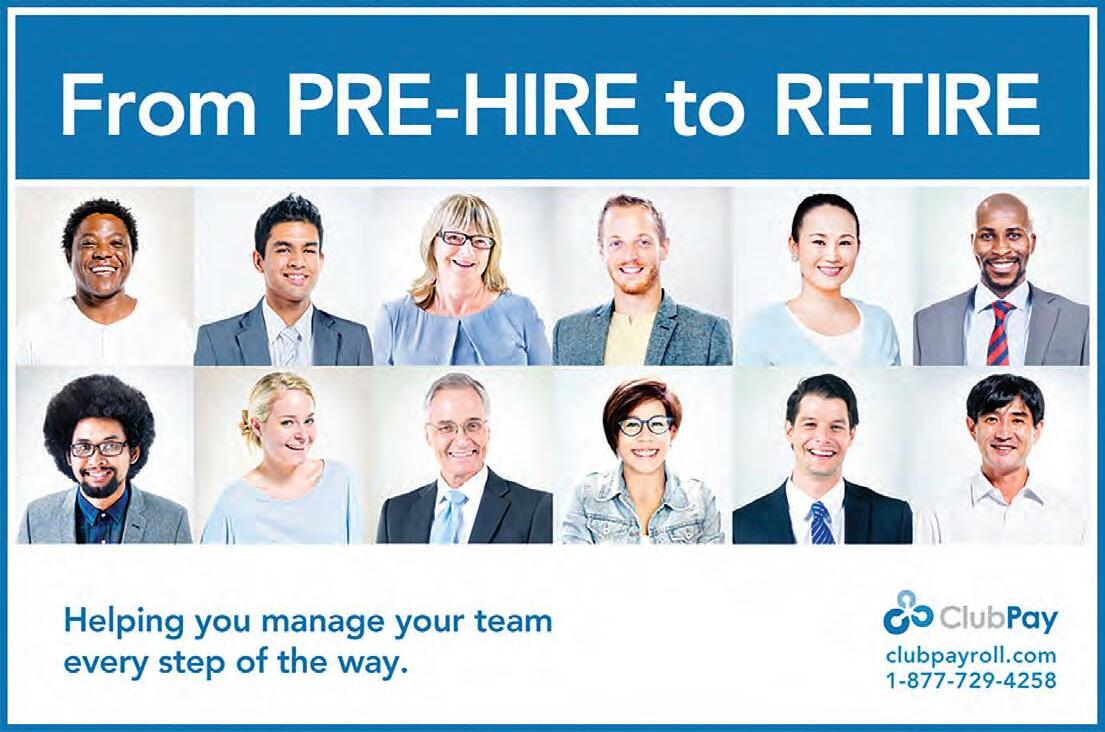
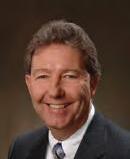
IBOARDROOM DESIGN FEATURE | Paisano Performance by
John Finley CCM
t seems that everyone is talking about employee engagement and rightfully so. A recent Gallup poll of employees nationwide found that nearly half, 49 percent, were disengaged and only one-third were actively engaged. This is significant given that engaged employees work happier, work smarter and produce the best results – 143 percent better according to that same Gallup poll. If this poll is a reflection of your team, 51 percent of your staff is looking for a new job! Yes, employee engagement is central to the success of every business and worth talking about!
At its root, employee engagement requires providing and receiving good feedback on a regular basis! Engaged employees are a byproduct of engaged managers that get in touch and stay in touch with their people. They schedule one-on-one communication with each team member. They focus their communication on the club’s service mission. Most importantly, the communication is two-way to encourage the professional growth of their people. Great employee engagement begins with effective communication.
If engagement is your goal and communication is the challenge, technology can help!
Performance management software like Performance++ streamlines the process and ensures consistent, goal focused, communication for your whole team.
With the help of Performance ++:
• You determine the feedback you want to convey and the feedback schedule that works for your team.
• Automated email reminders keep everyone on track.
• Performance notations reinforce good behavior and correct behavior that requires immediate attention.
• Each session is coupled with goal setting to produce targeted results.
• The internet-based system is flexible enough to work with your schedule!
We know that employee engagement is key to delivering on the service promise your members expect. Paisano Performance Partners can help you develop consistent and meaningful feedback to improve engagement and enhance performance at your club. BR
John Finley CCM, Paisano Performance Partners Jfinley@paisanoperformance.com (214) 794-5913
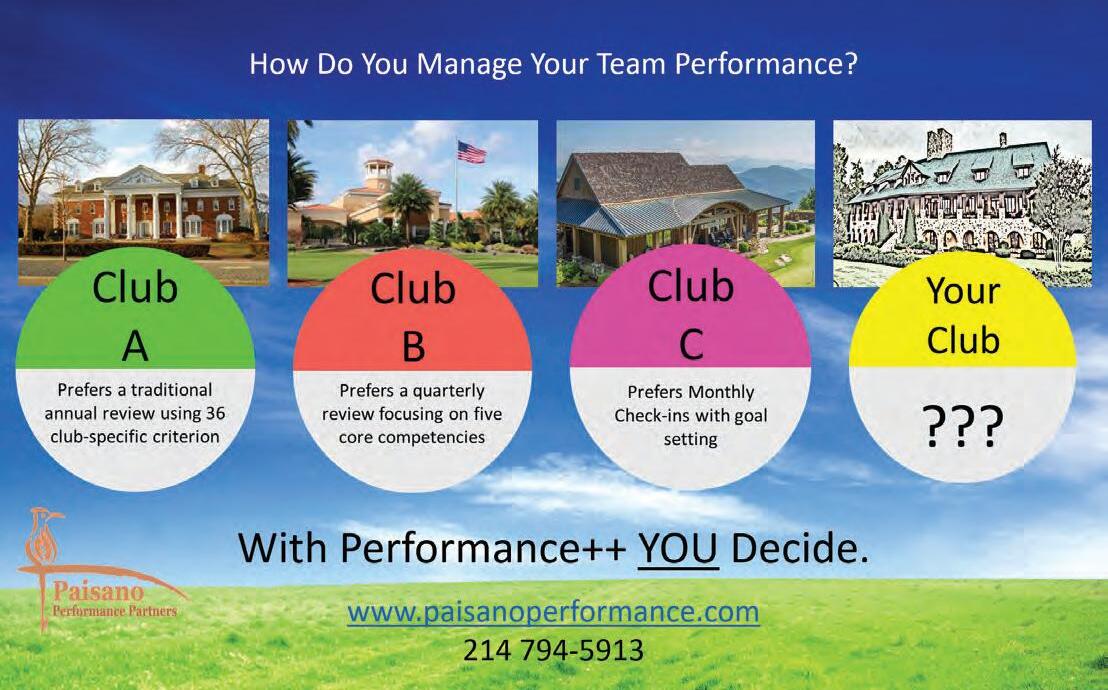
Your club’s accountant may work behind the scenes, but their needs were top of mind when EZLinks designed the new Financial Report Designer in the EZSUITE Club Management System. Many platforms have cumbersome reporting tools or require downloading data into spreadsheets, making it difficult to get a clear view on the business. EZSUITE removes this step and allows users to easily create custom income statements, balance sheets or other financial statements from within the software. This saves hours of work and gives you incredible visibility into your business. Gary Cohen, chief executive officer, EZLinks remarked, “EZSUITE Club Management is trusted to power operations at many of the nation’s top clubs. As clubs’ board members change, it’s important to have a club management platform that can adapt, too. BR
“INTUITIVE AND EFFICIENT, THIS WAS DESIGNED WITH THE CONTROLLER IN MIND.”
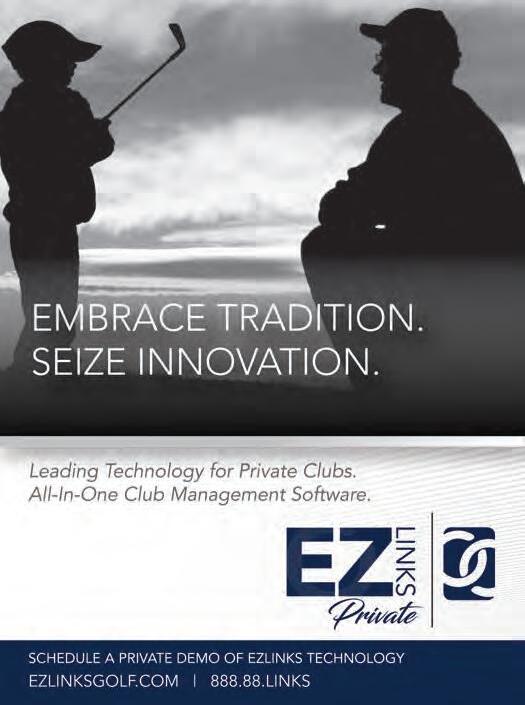
It seems that everyone is wrapped up in technology. Where to get it, what to do with it. I have witnessed clubs rush to adapt technology as a solution to problems that they cannot define and expect technology to be the miracle cure. I have to ask, do we really understand technology? Do we grasp the proper role of technology and what we should expect from it?
We need the apps and business intelligence so we can manage and direct the club’s future, every vendor in the industry provides this. Technology is much more than what many realize; technology also is the ability for the system to adapt as the needs of the club evolve or a specific need arises. Two of our clients held tournaments recently, The Ally Challenge at Warwick Hills in Grand Blanc, MI and The Tour Championship at East Lake. Both highly successful events in part due to the ability of the TAI Club Management system to change from a traditional club system to a tournament system at the flip of a switch. Warwick Hills hosted a function on the evening prior to the event. The following morning, the point of sale stations were moved to locations servicing the general public and menus changed from table/tab service to fast service. Like a symphony moving from one genre to another, technology flowed to serve the needs of the Ally Challenge! Technology by itself has limited purpose. Technology with knowledge is an awesome combination. TAI’s competitors sell technology as a means to a sale. TAI, the Last of the True Club Vendors, uses technology with our knowledge and experience to further the goals of our clients. BR
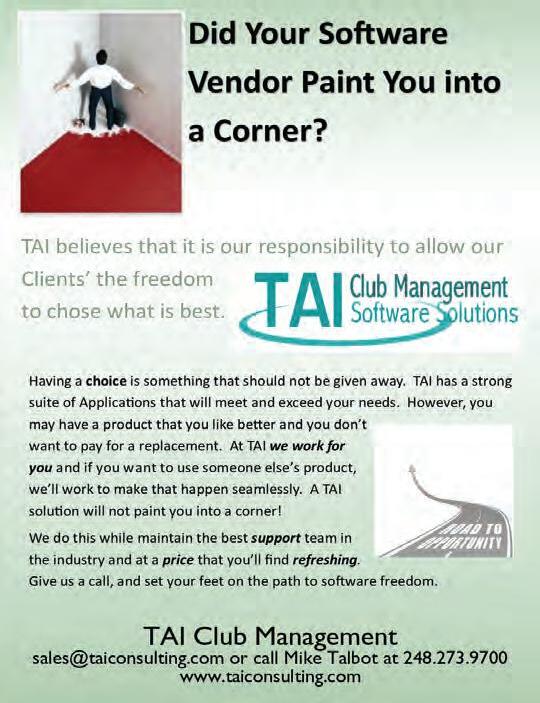
cost. We can expect that many employees will have strong objections to their “personal” data being collected, stored and analyzed. There will probably also be concerns about management being able to track their movements, location, and biometrics.
But like any new technology, eventually it gets integrated into our routines and it just becomes part of our daily lives.
I remember when my husband thought a smart phone was stupid until he found out that he could download apps that would show him the layout, yardage and slope rating of virtually every golf course. That was the moment that the benefits out-weighted any reluctance. It will probably be the same for WT.
For all clubs, decisions about adopting any new technology will be based, in part, by cost. Here again, as WT becomes more common and accepted, costs will come down. All we need to do is look at flat screen TVs to see that truism in action.
But cost also has a human dimension called human capital . Dr. Chris Brauer, director of innovation at the Institute of Management Studies rightly points out that, “Wearable tech will offer the critical missing piece of the big data puzzle that is data about human capital...[it] will provide a rejuvenated form of ‘management’ science, optimizing workplace productivities and performance through everyday integration of these devices and sensors into the workplace.” I agree.
So move over, Dick Tracy. Here comes the club industry!
Your bottom line will thank you! BR
Communicating all your benefits and happenings with your members is an important part of demonstrating the value of membership. As clubs work to expand their communication efforts, the workload can also expand. Maintaining multiple communication platforms puts stress on your people and their efforts. A customizable digital signage system can help reduce that workload and enhance your existing efforts.
Digital signage pulls your information together for display within your club. Social media, weather, news, sports, calendars, videos, event flyers and website information can be displayed in a centralized format that engages members and promotes your other communication efforts. Content may be set for automatically updating or easily scheduled in advance, reducing and/or stretching the workload with little management.
A well-planned digital signage strategy will offer you multiple options for displaying and managing content to grow with your club. Look for a system that allows you to pull together content from existing formats.
Get a demo of your new system to make sure it is easy to manage and schedule items. And future-proof yourself by getting a system that won’t leave you in the cold if you change your website provider, add on features or want to move to touchscreen elements. A well-designed digital signage platform will reduce workload, eliminate printing costs, improve communication and provide years of service. BR
To learn more about connecting your club visit www.signera.net or call 1-877-998-7446.


MICHAEL CRANDAL, CNG
The letters after our author’s name Michael Crandal, CNG stand for: Certified Nice Guy. Self-certified, by the way. But, a nice guy nonetheless. Michael provides meaningful interim GM/COO services and employee development programs. He lives in the Buckhead area of Atlanta, GA. www.linkedin.com/in/michaelcrandal or (760) 464-6103.
In a highly automated business world, there is an understandable tendency on converting data into ratios…key performance indicator (KPIs) variance reports with a few graphs and charts thrown in. The focus is on process.
Having the right standard operating procedures (aka: process) is important. But – having the right people in the right places is mandatory in operating a healthy private club.
There are basically two groups of people: Members and staff.
Near the end of an orchestrated interview process for the GM/COO position at a truly great private club, one board member went off script and injected something like this:
“I think all of us at this table are completely comfortable with your ability to work closely with our members. But, I want to know how you treat the employees? How do you interact and get along with them?”
The candidate answered:
“With the greatest of respect, the question suggests that someone might treat and interact with people differently based upon their position at the club, or life in general. That person is not me. At this table are officers of the club and a search committee representing a cross-section of your entire membership.
How have we treated and interacted with each other all throughout this entire interview process? I’ll be bold in offering that you’ve seen forthrightness, honesty and industry expertise laced with appropriate moments of shared laughter and smiles. Well, that is exactly how I treat and interact with every member of the staff I am honored to work with and serve alongside. I treat every person with the same consistent approach.”
The club president smiled and said he didn’t know how he felt about being treated as a pot washer. The candidate smiled and said, “Well – I suppose the pot washer may not be used to being treated like a club president either … but, everyone will quickly get used to it.”
The point of my sharing this true story it is to convey the importance of focusing on people rather than overemphasizing process.
We can take the most detailed and meticulously prepared SOP book, complete with table of contents and departmentally color-coded indexed tabs, bound in leather and gold stamped with your club’s logo on the front. Next, this beautiful piece of work is placed on the desk in the GM/COO’s office, another on the boardroom table and also place a copy in the employee lounge.
Guess what? Without the right people in all the right places it means nothing. Nothing.
It all comes down to real people … members and staff that combine to bring life to a club.
Approved candidates for membership go far beyond just making sure checks will clear. A vibrant club needs vibrant members who take pride in being a part of something special and appreciate all the people that make it so.
Club employees are not simply hired. But rather handpicked and selected. They, too sense that they are indeed part of something special and take pride in professionally treating and interacting with a deserving membership … and, each other!
Private club operations that generate consistent remarkable member experiences is a byproduct of focusing on the people involved. When it comes to club operations, it starts with the GM/COO and goes up, down, around and throughout.
Every club is unique with no silver bullet where one size fits all. But, as a general guideline, I am convinced that private clubs are an honorable calling for both being a member as well as being employed. Private clubs offer the highest and very best opportunity to continually bring out the greatest quality of people and highest level of service available.
Yes, I have a great professional passion for the industry and enjoy seeing clubs doing things ‘right.’ But, even a greater personal affection for the people that bring it to life –members and staff.
It’s like a balancing act, alright. A mix of two groups of people. Not layered one on top of the other. But, instead, a perfect circle ...
If you do it right. Yes, it is a balancing act. BR
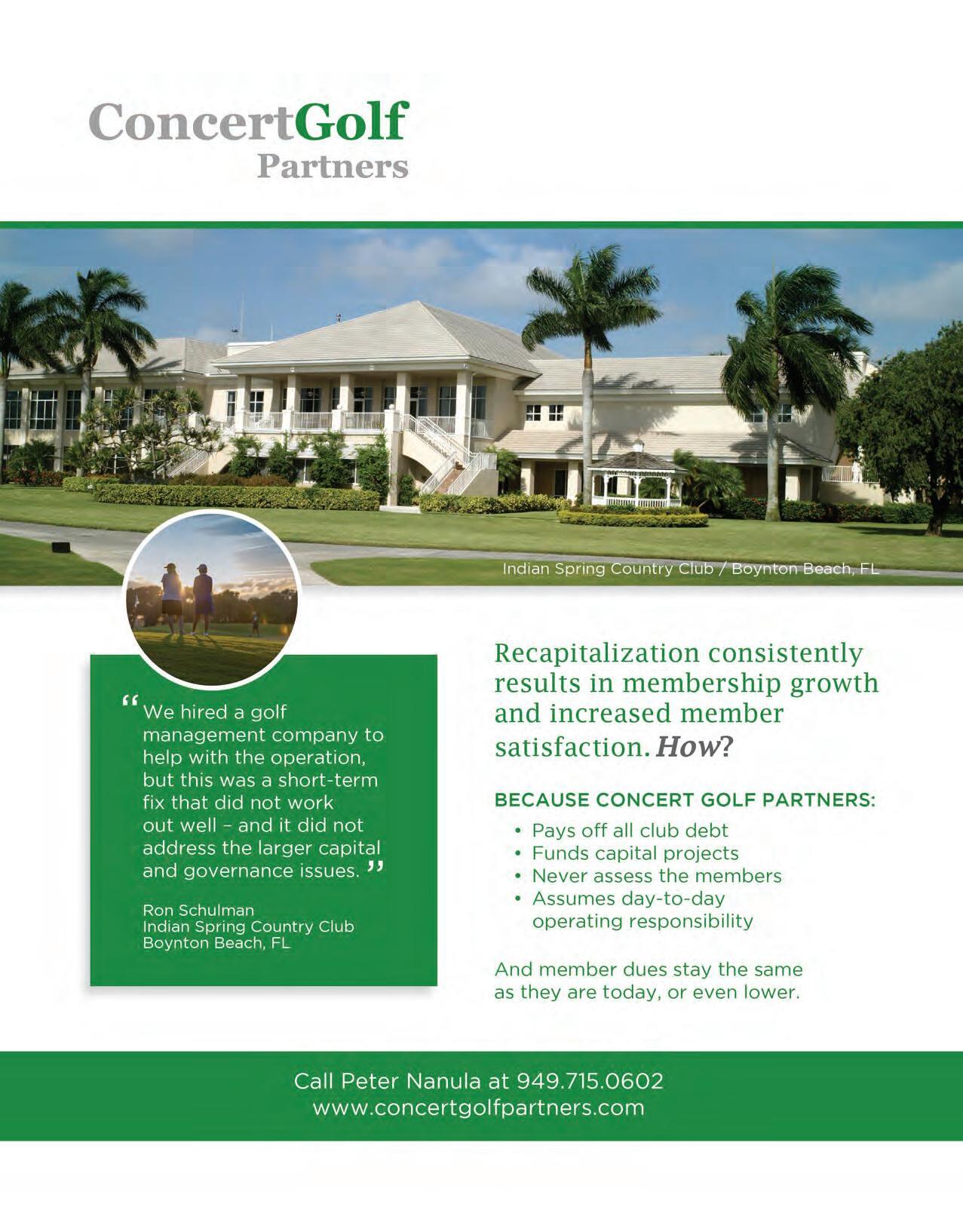
By Heather Arias de Cordoba, Associate Editor, BoardRoom magazine
BoardRoom magazine annually recognizes the world’s top private club presidents, captains and chairs as Private Club Presidents of the Year, for their outstanding work, their understanding of the industry, and role and responsibilities of the club’s board of directors. In this continuing series, BoardRoom introduces four of the top 21 presidents for 2017.
Private club board presidents play a huge role in professional operations of their clubs as a volunteer working diligently with their board of directors and general managers, striving for well informed, but not emotional decisions.
This recognition by BoardRoom magazine has attracted board president nominations from clubs and other nominators around the world.
These outstanding presidents exemplify the focus on the leadership responsibilities, the accountability and the management of the board providing a healthy respect for the club’s macro management. They are cognizant of the importance of working, effectively and efficiently, with their volunteer boards and the dedication required from everyone with whom they work.
Key elements of a “good” board include commitment, competence, diversity, collective decision making, openness, transparency, effective communication with the management and the membership, fiscal responsibility, development and establishment of the clubs’ mission, vision and policy direction, especially through establishment of a strategic plan.
A successful board president draws upon the expertise of other board members, the club’s institutional memory and stewardship of the club’s resources. As well the board president provides new board members and future board presidents with information they need to perform effectively as board members.
Congratulations to these outstanding private club board presidents.


FRANK MADDALENA, PRESIDENT | BOCA GROVE
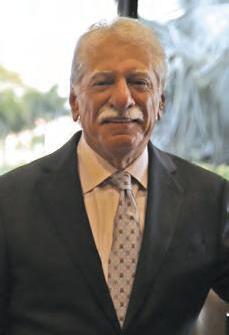

Frank Maddalena has served as the president of Boca Grove Golf and Tennis Club’s board of directors during a time of transition and renewal.
He has excelled by committing to the continued development and implementation of the club’s strategic plan, overseeing the construction of the first phase of a major capital improvement plan and reorganizing the management structure through retention and recruitment of key personnel, including general manager/chief operating officer.
The strategic planning committee, tasked with developing a long-range plan, recommended a rebranding of the club and capital improvement for the clubhouse, tennis facility and the fitness and aquatic center with the objective of attracting a younger membership. And it certainly has had an impact on the member experience.
“Enhancement and ownership of the member experience has been the most critical focus for our team during the renaissance,” said Michael Gibson, newly hired COO/general manager of Boca Grove.
“The excitement of the membership and support they have given in the first few months of rolling out new club facilities has totally changed the attitudes of our membership. The Sports Bar was the cherry on the top. Having a casual place to have great food while enjoying the camaraderie has reestablished a much-needed sense of community.”
The entire team at Boca Grove has embraced the excitement and this is the key to improving the member experience. Adapting the work environment to ensure all department heads are working from the same “playbook” while team strengths and weaknesses are being assessed has been another key focus during this initial phase.
As a result, a cohesive management team is emerging that will move this sense of community outside the club walls.
“Developing new programs will encourage younger memberships, increase property values and move the club’s reputation to greater heights both locally in Boca Raton and Palm Beach county, but, more importantly, on a national level.
“This will attract exciting new prospects, such as PGA golf and USTA tennis tournaments, along with award winning non-profit and charitable events, that will keep the club flourishing long into the future, protecting the membership experience at Boca Grove,” added GM Gibson.
“President Maddalena is a ‘roll up your sleeves’ and get-it-done type of leader whose team approach has earned him a great amount of respect from our membership and staff.”
Maddalena, when the club faced a vacancy in its GM-COO position, appointed a search committee while also using his professional experience along with his passion, enthusiasm, leadership and dedication to guide the club during the search for a general manager.
President Maddalena has been receptive of GM/COO concept of governance, and as well, all board members are required to attend board orientations – sharing the roles and responsibilities of all parties. The new board, through the leadership of the GM, also has been diligent in recent months clarifying roles of key participants in the governance process. This has also led to a review of current club bylaws, board policies and team operating procedures.
“By increasing the board’s continuity, we are acting as stewards of the club, creating a structure with flexibility that preserves the culture and community of Boca Grove while improving the efficiency and overall operation through the identification and implementation of best practices,” enthused President Maddalena.
“We have found the perfect leader to embark on this new journey and next phase in Michael Gibson.” BR

ENTRY AND DEADLINE
Visit BoardRoommagazine.com/presidents.html for the criteria and application form. Entries must be submitted no later than Friday, November 9, 2018. For further information contact John Fornaro (949) 376-8889 ext. 1 or johnf@apcd.com



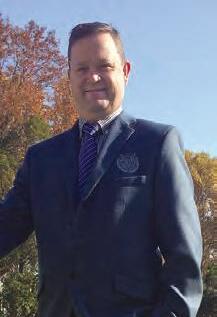
With a vision of a fresh modern club, some tough decisions and tenacity, Ian Murdoch, vice-chair at the time, and Rick Hogben, the previous chair of Bryanston Country Club forged a turn-around strategy with a friendly and inviting attitude that has appealed to a broader membership base.
And in the past three years, board chairman Murdoch has maintained a strong communication among board members and the club’s broader membership ensuring high levels of member satisfaction.
“The club has reached record membership levels despite tough economic conditions, and our on-going success is bucking all trends,” related Paul Leishman, Bryanston’s general manager.
A board self-evaluation at the end of the second year of chairman Murdoch’s term looked at the board relationship amongst self and with management team and came back with very strong ratings - overall satisfaction 78 percent and specifically:

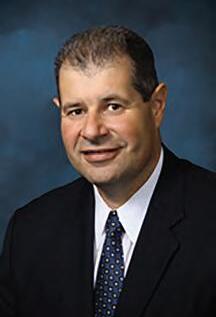

• The chairman leading committee effectively at 90 percent
• Relationship with committee and chair at 86 percent
In a member survey completed by 40 percent of the club’s 3,050 members, overall member satisfaction was rated at 86 percent with 91 percent rating for “members are kept up to date and aware of club issues.”
“Ian is a man of the people,” exclaimed GM Leishman. “From his initial years on the board as finance chair through to his current role he has been incredibly good at connecting with the members in a very friendly, sincere and transparent way. He is always available to listen but can make the tough decisions when necessary.”
Bryanston’s strategic plan is revisited each year to ensure the club remains on track. “It has certainly been a hallmark of our continued success to have a clear direction. The management team now presents the strategic plan and our annual goals to the board for approval,” added Leishman.
“Chairman Ian, with board input, approves my performance contract annually with key goals and deliverables according to our strategy and I then set the performance contracts for my management team in order to achieve our goals,” Leishman shared. “These objective goals currently include targets for financial performance, member satisfaction, membership transformation and capital expenditure projects.”
Last year Bryanston hosted a major national amateur event and the CEO of Golf RSA , Grant Hepburn, summed up the club as follows …”Congratulations on creating a club that oozes success and hospitality and goes out of its way to make visitors feel welcome. In many ways, Bryanston is a microcosm of what GolfRSA should be striving for. It encourages family participation, is forward thinking, engages with its customer base and thinks out of the box – yet doesn’t forget the traditions and values of the great game of golf.”
“Ian has been humbled by this recognition,” expressed general manager Leishman. “He has such a passion for the club and has never sought any attention for the efforts that he has made. When addressing members he always stresses ‘your club’ getting members to understand that it is truly their club. The board members have been unanimous in their praise of Ian and how much he has deserved this recognition.” BR

“Michael Neglia is the perfect president at the perfect time.
“It’s a defining time,” explained Charlie Dimpfl, Upper Montclair Country Club’s general manager and COO. “During his tenure, he has guided the club through the completion of a major golf course renovation, oversaw the transition of management – all while being a constant pillar of support for staff during the time of change.”
President Neglia is now working through the second phase of the club’s master plan that includes an $8.5 renovation to expand and renovate the existing clubhouse, and to install a new short game facility.
“He commands the respects of the UMCC staff, peers and fellow members with his thoughtful and consistent ideas that benefit the membership as a whole.”
President Neglia’s focus has always been on improving the member experience as well as helping the club evolve. Enhanced amenities, including the new short game facility, overhauled wine club program, and new indoor
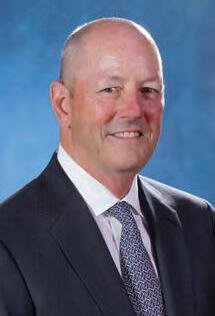
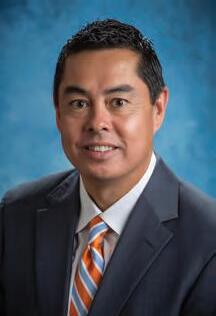
President Jack Peat exemplified his dedication to The Club at Morningside as he recently navigated the club through one of the most challenging and emotional times in the its history.
After losing its director of golf, David Hunter in 2015, the club was shocked by the sudden and unexpected death of Cheryl Harris, the wife of the club’s general manager Greg Harris.
“Becoming an instant single father of a seven-year old son and four-year old daughter, there was no way I was able to assume my role of general manager had it not been for the unwavering support of Jack Peat along with the rest of the Morningside family,” explained GM Harris.
“President Peat made is clear that at The Club at Morningside family comes first and I would be not only free, but expected to fill my role as father first and foremost while still operating the club, regardless of how my schedule changed… and regardless of the extra strain it would put on him a president.

“I can honestly say I would not be managing the club today if not for President Peat and his predecessor Dick Catlin who was president when my wife passed away,” Harris added.
President Peat is a leader by example, always demonstrating what it is to be a true steward of the club. “He always puts the club, fellow members and employees first and reminds all that it is everyone’s responsibility to make sure the club better now and in the future,” GM Harris related.
And The Club at Morningside gets it. The board leaves management of daily operations 100 percent in the hands of Harris and his staff. Micromanagement is dead!
The board supports management or replaces management, but does not micromanage staff in any way, shape or form. Incoming board and committee members go through a detailed orientation process and this is stressed during the orientation.
The board sets policy and procedure, sets goals each season from the club’s strategic plan and updates the strategic plan as needed, and is also working with a detailed capital improvement plan.
“President Peat is every general manager’s dream president,” added Harris. After spending the earlier years of his career in the hotel business, Peat accepted the position of chief operating officer of Eldorado Country Club in Indian Wells, CA where he remained for 18 years. After his time at Eldorado, Jack was recruited as vice president/CEO for Castle Pines Golf Club in Denver. In 2004, Jack retired from the club business.
Jack and his wife, Zan, joined Morningside in 2000 and have been residents since 2006. They split their time between the desert and their home in Carmel, CA where they are members of The Santa Lucia Preserve and Monterey Peninsula Country Club. Jack is an avid golfer and Zan is a passionate horsewoman.
“I owe many thanks to Jack Peat for helping us get our lives and my career back on track,” expressed GM Harris. “President Peat is a consummate leader and model member in every sense of the word. He is also a role model to me and many other managers in the club business.” BR

and outdoor dining. The improvements have expanded the club’s offerings to encourage usage and to add comfort for the club’s 600 members, while continuing to provide championship-level course conditions.
The level of approachability for the membership to share ideas, requests or critiques to not only himself, but the management team and board of trustees has broadened under President Neglia’s leadership.
“Keeping abreast of private club trends and aligning that with listening to what our membership wants has contributed to additional sold out member-guest tournaments added to the calendar, expanded menu options providing an overall member experience that is second to none,” GM Dimpfl explained.
President Neglia has empowered the club’s leadership by giving them the ability to do their jobs on a daily basis without inference from the board or membership. The club has embraced a
COO model that provides more autonomy and decision-making power to the leadership team at UMCC.
“When called upon, UMCC’s board works closely with the club’s leadership and wholly supports the team for the overall betterment of the club,” added GM Dimpfl.
“President Neglia’s approach has allowed us to implement strategies and processes that will ensure the longevity of the club and improve on our services so that current and future members can Share in the Tradition.”
President Neglia lives in Northern Bergen County, NJ with his wife Christine, their two daughters and a son. He joined Upper Montclair Country Club, alongside his father Joe, in 2003 and is the third-generation president of Neglia Engineering Associates located in Lyndhurst, NJ. BR



Gordon Welch is the president of the Association of Private Club Directors (APCD), the only association representing the club’s board. He can be reached at gordon@apcd.com or by calling (949) 376-8889.
This is a time of conscious preparation. Fall is approaching, and many clubs are preparing budgets and planning for a new season. This is also the perfect time for the board to examine their performance.
Contrary to popular belief, many clubs do not have performance reviews of any kind. Are you at one of these clubs? So, this is my experience: The board president comes into the GM/COO’s office, gives them a wink and says, “you’re doing a great job.” That’s the GM’s performance review. For many the “review period” is a time of anxiety.
Likewise, the outgoing president is approaching a lameduck situation. School has started and usage in some clubs has dropped off a bit. Some however, are preparing for your busy season. This “lull” in your business is the perfect time to approach your board members and discuss their performance for the past year.
If your club already has a board performance review you are one of the few that has stepped up to assure your board is following the right path.
The purpose of the annual board self-evaluation offered by the Association of Private Club Directors (APCD) is to increase each director’s awareness of their own level of performance. It’s kind of a “gut-check” and each of your directors will have a different “feeling” regarding their own performance after their review.
It’s not necessary to share your personal information unless the board president asks the board to do so. In some cases, the GM/COO or board president will take the evaluations and tabulate the results for an overall assessment score.
It is always a good idea to keep things simple and time appropriate, so let’s look at the following five simple questions:
The first question is regarding your commitment to the club. This is the basis of your directorship. Are you committed to fulfilling your role? Do you take time to properly review the meeting information packet before the meeting or are you looking over the packet as you walk in?
Are the board meetings a high priority for you? Are you on time or are you the member that walks in late and wants to be “brought up to speed?” Most clubs have one of these board members. Are you focused on the meetings or
are you distracted and looking at your phone or have other business interruptions?
Do you understand your role as a board member?
This question is vague but let me clarify it. When the board makes a decision, do you support that decision? Does the board speak as “one?” Do you also respect confidential information, or do you discuss private information outside the boardroom? Are you willing to express your own views outside the boardroom and do you respect the views of others? Do you respect the meeting and those speaking, or do you have sidebar conversations during the meeting?
Decision making: Do you strive to have enough necessary information before making decisions? Are you willing to make appropriate risk-taking decisions for the future of the club? Is your viewpoint given due consideration during the process? Most importantly, are your decisions based on the best interest of your club and its future?
Each member must also evaluate their personal characteristics. Do you follow through on your commitments? Are you tactful in your relationships with other board members? Are you sensitive to other board members feelings and concerns? And, is your participation as a board member important to you?
Finally, what are your goals for improving your own performance as a board member over the next 12 months? This is a time to renew your commitment to the board, your GM/COO and the future of your club.
Here’s the bottom line: Your club is only as good as the member experience provided. The strategy for creating that experience comes from collaborative governance; from the relationship of the board, GM/COO and senior staff.
Take a moment to evaluate your own performance. Are you willing to make important decisions for your club? Are you willing to commit the time necessary to provide your staff with the leadership they need to deliver the member experience you and your club expect? BR
For more information on board evaluations and training please call APCD at (918) 914-9050 or visit us at apcd.com.

EXECUTIVE committee
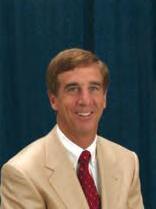
RICHARD MCPHAIL
Richard McPhail, CCM, is a founding partner of Club Revenue Solutions, LLC, a private club consulting firm. He can be reached at (239) 223-2741 or DickMcPhail@aol.com. For more information visit the company’s website at clubrevenuesolutions.com.
Private country clubs, historically, were often places where usually more affluent individuals could socialize, entertain and mingle with those of similar financial prosperity and common sporting and social interests.
Memberships, often by invitation only, were commonly passed down from generation to generation. The clubs located mainly outside of the larger cities provided a relaxed suburban setting – a “home away from home.”
Club staffs were often long-tenured, providing the personal recognition and service preferences that by club members and their families expected. This atmosphere also provided a “pride in belonging” reputational cachet – a basis for the club’s ongoing success.
This historically successful vision remains evident at the most successful clubs, which usually share the common attribute of having many employees with long tenures and minimal turnover – a “best practice” of successful clubs. Many of the most successful clubs today do not have the finest or the newest facilities, but they do have the best private club experience and atmosphere.
This exceptional atmosphere is most commonly desired by members of private clubs. However, there is often a failure in achieving this goal in the less successful clubs for simple reasons.
Many clubs often do not budget sufficiently for employee compensation and benefits to attract and, more importantly, keep the best staffing to meet their expectations. This applies to both salaried and hourly employees and usually justified by board and management preferences for a variety of hardscape agenda, capital and budgetary reasons, which conflict with the need to provide “people-planning” in the private club experience.
Clubs need to pay more attention to the contradictions in their vision, history and member expectations and see that country club compensation is often far less than what competing public businesses offer. This failure to address the compensation fairness issue to attract and retain the “best of the best” can create a dangerous downward trend in the longterm success of any private club.
For example, bartenders, waitstaff, hosts and kitchen staff can often earn far more in public restaurants (aka “cash houses”) where average shift check volumes and the tip shares are much larger. Yet the personal service level at country clubs is expected to be much higher, including formal and five-star personal experience.
Granted, there is always pressure on the perceived “net loss” of the club food and beverage department in the budget, but as has been clearly demonstrated by industry consultants many times, food and beverage is an amenity supplemented by club dues.
Golf maintenance staff wages are often less than what is offered as a starting “minimum hourly wage” by many of today’s non-club employers.
There needs to be a recognition of the turnover “costs” to the club. It takes a large amount of time to replace and train new employees on the job requirements of the golf course and grounds, and when you consider the low wages often paid, why would an employee continually work so hard when less challenging and less strenuous jobs often pay more and are now so readily available?
Doesn’t it make sense to pay more to attract and retain an enthusiastic, high morale staff with loyalty as well as pride in their club’s respect for their work? Shouldn’t the club want to pay their staff members in every full time position a true living wage?
“Salaried” management and support staff members are another example of those who are often expected to work significant amounts of overtime and often holidays as well, without appropriate adjustment to their salary.
Clubs that value an “appreciative” approach to pay and benefits generally attract and retain the “best of the best.” Higher compensation and other incentives to reduce turnover and develop experienced employees should be very high on the club agenda. But unfortunately, country clubs often have become training grounds for staff to gain experience and move on to more profitable employment.
We understand that members do want value and do expect their club to be prudently managed financially. Communicate your budget reasoning effectively to the membership and to your employees. Your members will continue to remain members only if they feel “pride in belonging.” Frequent employee turnover is in direct conflict with the core values of a successful private club. BR
DR. RONALD F. CICHY
Dr. Ronald F. Cichy, O.M., is professor, The School of Hospitality Business, Michigan State University.

Sometimes it feels that the air has gone out of the tires, the engine is out of gas, and the ship is stuck on a reef.
Hospitality business executives have remarked that people do not have the initiative they once had. That led us to ask private club general managers and chief operating officers and other club leaders these questions:
• How is initiative defined?
• What is the level of initiative when it comes to career?
• What is the level of initiative when it comes to personal life and relationships?
Earlier this year, we asked 41 participants in Club Management Association of America Business Management Institute III these three questions, and examined the results to identify themes and describe the ranking (based on the frequency of each comment). Here are the themes listed in priority:
1. Initiative begins with self = self – motivation, self – awareness, self-starter, self-driven, and self-discipline
2. Initiative is doing what needs to be done without being told
3. Initiative is drive and action resulting in focus, engagement and achievement
4. Initiative is going above and beyond
5. Initiative is establishing and achieving goals
Next, we took the initiative to categorize to spell I.N.I.T.I.A.T.I.V.E.
• Initiative is Individual, that is it all starts with self. It is self – Imagination and self – Ingenuity, driven by self – awareness and self – motivation.
• No other person can give you initiative.
• In all actions, one with Initiative does the right thing. As Yoda said to Luke Skywalker in The Empire Strikes Back: “Do. Or do not. There is no try.”
• Always decide to act Above and beyond what is expected. Recognize something that needs to be Addressed and Address it. A positive Attitude looks for opportunities in the present. Positive Attitudes are built on curiosity and creativity.
The right thing is to step up and take ownership. In other words, Taking charge without being told. No need to Tell one with initiative to do something.
They know. They start the wave for others to engage.
In some cases, Initiative is working through present conditions in support of the Idea to power through long days using proven solutions. Other times, it is new Ideas and new solutions that Increase the desired outcomes, the key results.
Very clearly – Initiative is doing on your own, focusing, engaging, and acting to establish and achieve goals. The goals have Vitality to engage others to move closer toward the Vision.
Energy and drive are the first steps to achieving. Enthusiasm toward skills applied proactively yields results far greater than reactive approaches. Proactive people have the Energy to lead because of initiative.
Here are some questions that remain:
• Where does initiative come from?
• What are the similarities and differences when comparing initiative in a career and initiative in personal life and relationships?
•Is initiative more learned or inherent?
• Do people with initiative tend to be attracted to working with others who also have initiative?
• What roles does initiative play in attracting and retaining members?
• Do volunteers of the club’s committees and/or board of directors have more initiative than other member – owners?
•So some members purposefully not practice initiative when it comes to their private clubs because, in part, they want a break from initiative which they are expected to demonstrate in their careers every minute of each day?
These pilot study participants said “YES” 9.35 /10 to career initiative and “YES” 8.51/10 when it comes to personal life and relationships initiative.
The participants’ average age was 37.7 years with a range of 25 to 57; a median of 38 years; and bi-modal –33 and 35.
One reason for asking the participants’ ages is that we intend to compare these results with a study of iGENs (born first after 1995) who are currently college students. That will prompt at least one additional question:
• Are there different responses from different generations, specifically iGENs in college and private club GMs and COOs?
Initiative. What does it mean? How is it used by the club’s leaders?
Take the initiative to find out. BR
committee

LARRY HIRSH
Larry Hirsh, CRE, MAI, SGA, FRICS is the president of Golf Property Analysts (www.golfprop.com), a leading golf and club property consulting, appraisal and brokerage firm based in Philadelphia. He blogs on variety of club and appraisal issues at http://blog.golfprop.com
People have a variety of reasons for joining a private golf or country club. Usually, the primary reasons revolve around sports and social activities or as an escape from the hustle and bustle of their daily lives.
The typical private club mission statement might look like this: (ABC) Country Club has a proud heritage and tradition as a private, family-oriented country club. We are committed to providing exceptional service, outstanding golf, recreation and social experiences in a friendly and welcoming environment for all Members and their guests.
Because of the cost, it stands to reason that those who join clubs are typically busy folks who value their “downtime” and seek a no-hassle environment in which to enjoy their favorite activities, like golf, tennis, swimming or other sports typically associated with private clubs.
quires that shorts only be worn with socks no higher than the ankle.
A little music on the golf course? Typically, a no-no. Cell phones, considered by many as a safety enhancement and often the key to the chain unlocking golfers from their desks, are banned from many clubs, even to the point of requiring they be left in the car.
If you take away a cell phone from an inconsiderate person, they’ll find another way to be annoying. I presume the gentleman who passed out on the practice tee last week
Those (few) member-owned clubs which are thriving sometimes feel as though they are “bulletproof” and immune to the financial distress of their not so fortunate colleagues. Not true. For clubs, the future is now. If the next generation decides (and many have) that private clubs are no longer part of their lifestyle, even some of the most prestigious and successful clubs will struggle. It can and does happen. The question is: Has your club’s mission evolved with the times?
Accordingly, most member-owned clubs’ leadership employ or contract for professionals who can manage the day-to-day operations of the club and much like the old Greyhound Bus advertisements say, “Leave the driving to us.”
Unfortunately, at many member-owned clubs club leaders find it personally and individually appealing and satisfying to dive into the daily minutiae of operations, especially that of establishing, implementing and enforcing club rules and policies.
Club leaders (who often stay on too long) can (and should) leave most of these tasks to their professionals, and in the process enjoy the club they so dearly love, avoiding the uncomfortable and unpleasant experiences with their fellow members that often result.
Sometimes, through their unbridled enthusiasm to improve the club, leaders establish rules that create solutions to non-existent problems and serve only to fabricate an atmosphere that makes some members uncomfortable. For instance, many clubs have dress codes that prohibit jeans or the wearing of cargo shorts or pants and most require collared shirts on men.
Often, there are rules restricting the length of one’s shorts and requirements that hats always be worn bill forward. I even know of two clubs that until recently didn’t allow shorts of any type and one of them now re-
at my club (true story) appreciated that someone had a cell phone and called 911.
At some (very prestigious) clubs, members walk around looking over their shoulders wondering if they’ve violated a new rule they didn’t know about. The question all this raises is this: Once the club atmosphere becomes so restrictive, does that contradict the club’s stated mission?
Those of us fortunate enough to play golf on the typically better designed and maintained private courses more often than not accept these restrictions as a cost of access. I’ve observed however, that this same atmosphere created by well-meaning board members simply seeking to enhance the club’s level of prestige and intrinsic value in membership often results in micromanagement. Sometimes, members join a club to have family occasions, entertain guests or have
large affairs, maybe for business. Members often take great pride in their club and want to “show it off.”
It’s not uncommon for boards overzealous about establishing rules and policies to make it difficult for these members to actually use the club for their intended purpose. In many cases these rules and policies actually prevent members from using the club for the reasons they joined.
In many cases, rules are established, which accommodate the (comparatively) few members for whom the club is the center of their social and recreational life. These are NOT typically the members providing the margin for financial success of the club.
Clubs need to pay more attention to that guy willing to pay dues, who plays eight times per year and never spends his minimum. If he becomes unhappy and it becomes difficult for him to use the club, membership declines.
Shouldn’t the club’s key staff (golf pro, superintendent, GM) be able to quickly and efficiently accommodate members’ special requests, especially when there’s little or no impact to other club members? Isn’t joining a club about making one’s life more simple? Should the board or committee really be involved in these day-to-day decisions?
The purpose of this discussion is to address decline in golf participation and club membership. Those of us in our 50s and 60s have become used to private club environ-
ments sometimes described as “stuffy.” While we may be accepting of it, the statistics of declining participation and club membership and the preponderance of club and golf course closures and private clubs inviting daily-fee play is a clear result of changing perceptions about private clubs.
Younger generations not only desire but demand more casual, less oppressive and more ethnically diverse and gender-neutral environments. For future success, golf’s culture must evolve with society as a whole.
It seems as though the private club investor community understands these issues. ClubCorp, Troon, Kemper and other major management companies have reinvented many of their clubs in a much more family-friendly, limited-rules and diverse manner. Of course, many of the clubs they operate had experienced distress and reinvention was essential, and they have a motive of financial profit.
Those (few) member-owned clubs which are thriving sometimes feel as though they are “bulletproof” and immune to the financial distress of their not so fortunate colleagues. Not true. For clubs, the future is now.
If the next generation decides (and many have) that private clubs are no longer part of their lifestyle, even some of the most prestigious and successful clubs will struggle. It can and does happen. The question is: Has your club’s mission evolved with the times? BR


MACDONALD NIVEN
MacDonald Niven, MA, MCM, CCE is with Niven Research and can be reached at (510)439-8522 or via mail: mac@niven.cc.
“Chris… Bill, Sue and I have been looking into your food operations and want you to make some changes. We want you to set goals of 15-minutes for food prep time for lunch and 30-minutes for dinner. We think that you should use the “expo” model with two runners Friday – Sunday evenings. They will be dressed in chef whites. Give us the nightly times via the prep tickets. This should help you to get your kitchen operation in line, get us more members dining, and improve your profits.”
Manager Chris immediately was taken aback and some interesting thoughts ran through the manager’s mind – none of them positive in nature.
As defined by Merriam-Webster, micromanagement means to manage especially with excessive control or attention to details.
In their Harvard Business Review article, Why Is Micromanagement So Infectious?, Niko Canner and Ethan Bernstein add that micromanagement happens when the manager (in this case, the club president) dictates the tasks and directs the work to be done.
Frequently, the micromanager requires unnecessary or overly detailed reports with constant feedback on details, often-times slowing the decision process in an effort to retain control, or the appearance of control.
The micromanager will simply usurp the work and dictate the final action. As stated in the Harvard Business Review article by Muriel Wilkins, ”Absolutely no one likes to be micromanaged. It’s frustrating, demoralizing, and demotivating.” And, yet, this scenario, or something akin, happens often in club management, even within clubs operating under the CEO or COO concept. What gives?
From a poll of 217 CMAA club managers offering their thoughts on micromanagement, we distilled a definition to be: When a club leader (board member, committee member, or influential member) involves themselves, or desires to be involved, in the day-to-day decision making required to effectively and efficiently operate the club by attempting to direct, influence, or otherwise coerce a decision. Additionally, when a president or board authority countermands an operational decision made by the responsible staff person.
Of the survey respondents, 94 percent reported that they have been subjected to micromanagement by club leaders and 29 percent report micromanagement as a significant problem.
Club leaders tend to be very successful individuals, highly competent and expert about every aspect of their business. It is natural for a level of transference to occur (transference is the belief that your success in one
profession naturally carries to another) giving directors the confidence to pursue club leadership.
However, of 52 presidents responding to a survey, 83 percent were not confident that they could operate the club on a daily basis. Once they assume their roles, sometimes that confidence lessens as they realize that the role is different from both their expectations and previous experience.
Not only do directors feel the regular business pressures to succeed, they have an immutable peer pressure to succeed in the eye of their friends – this pressure may be new and is exceptionally impactful, thereby increasing the level of insecurity that the club leader feels.
According to Richard White, PhD, “People who micromanage generally do so because they feel unsure and self-doubting.” In general, micromanagement stems from the internal emotional issues of insecurity or doubts about competence. There can also be external elements such as culture, performance pressure, and managerial instability. Sometimes people micromanage because it is a low level of management, easily accomplished and enables the micromanager to feel useful or valuable, or at least maintain the appearance of value. A significant cause of micromanagement is the person’s perception or fear that they, themselves, lack the competence or creativity for the position. It appears that managers recognize this sense of insecurity. In the survey of 217 club managers, 75 percent of the respondents reported that club manager success has a great deal to do with the ability to coordinate club leaders’ insecurities. In other words, managers and club leaders must realize the different sort of pressure placed on club leaders and because of that pres-
sure, that those leaders may feel insecure and their decision making may be driven by emotion rather than best business practices.
Causes of insecurity may come from a variety of sources. In the club business, the problem of double bind can be a significant contributor to insecurity followed by micromanagement (double bind is when a person receives conflicting messages and a positive response to one becomes a negative to the other).
This can occur under the “group-think” dynamic, where information from the staff conflicts with the information being shared amongst the membership and club leaders. For example: the president and manager may have an agreement that marketing on Facebook will damage the club’s brand.
After a round of golf, the president is with his group and there is talk about marketing the club and how well another local club has done with Facebook: increased guest fees, brought more business into that club, etc. The information actually gathered by the member was anecdotal and incorrect.
Are you micromanaging because the goals and objectives are not being met by the manager? Are you micromanaging because it is your natural style? Are you micromanaging because you are unsure of your role?
As a manager it is critically important that you determine the reasons behind your club leaders’ micromanaging. As one survey respondent stated, “I think that the longer you’re at a club, the less micromanagement provided you are still an effective leader. I think that it goes two-ways: the new person will experience some micromanagement, and the ineffective long-tenured manager will see a lot, in the interests of “we want to keep him/her, but he/she is ineffective, so we’ll help.”
The problem with this is that sooner or later, the help will cease, and a change will be made. Managers must realize –genuinely – the cause of the micromanagement.
If the issue pertains to lack of goal and objective fulfillment, are the goals clearly established; are they attainable and realistic; is the manager simply incapable? Answering these questions will lead to resolution.
Club management is about managing the needs of the club business and all that entails. It is also about managing the leaders’ needs, which requires good communication amongst the leaders and manager. The only way to gain someone’s perspective is to ask them about it. It’s all about communication.
The president now experiences the double bind effectthe manager and president’s friends are pitching different solutions. It is natural for the leaders to rely on social capital and agree with the erroneous information of their friends, thereby causing doubts about staff’s competence or lessening the confidence of the leader in their own competence- a vicious cycle that can lead to further micromanagement.
However, there are legitimate instances when micromanagement is appropriate: 1) The strategy of the club is not working; 2) a new endeavor is starting; 3) there is a new leader; 4) the manager fails to execute and deliver results on an initiative; 5) there are serious complaints or errors, and 6) goals and objectives are not met, and results are poor.
Understanding the origins of micromanagement will go a long way to mitigating its impact. Most often micromanagement leads to the problems previously outlined by Muriel Wilkins – “Absolutely no one likes to be micromanaged…” Micromanagement causes major staff disengagement, promotes dysfunctional and hostile work environment, eliminates trust, and stifles opportunities for learning and development of interpersonal skills. As a director, recognizing that you are micromanaging is incredibly important.
If micromanaging is the leaders’ natural style then the manager must, as many a tenured manager has said, “Weather the bad president.” The chances of changing the characteristics of a successful president are very slim, so the manager will need to weather the storm.
If you recognize that the micromanagement is the result of the leaders being unsure of the role, then strong communication can be the antidote. A manager who recognizes the leaders’ struggles and steps up the information flow will yield solid results.
A key to limiting destructive micromanagement is to have clearly defined roles and responsibilities with a vision on constraints, and effective oversight. Creating the environment of trust will allow the leaders to focus on the elements in which they do have confidence: strategy and policy.
Club management is about managing the needs of the club business and all that entails. It is also about managing the leaders’ needs, which requires good communication amongst the leaders and manager. The only way to gain someone’s perspective is to ask them about it. It’s all about communication. BR

PETER NANULA
Peter J. Nanula is chairman of Concert Golf Partners, an owner, operator and all-cash buyer of private golf and country clubs. CGP specializes in recapitalizing member-owned clubs carrying too much debt, converting them to non-equity status, and maintaining the clubs as fully private. www.concertgolfpartners.com | (949) 715-0602 | pnanula@concertcapital.com.
Private clubs are blessed and cursed with their real estate holdings. It’s a rare enterprise that controls 150 acres or more of prime land in affluent markets.
While we eat, sleep and play golf, this real estate just goes on increasing in value.
Many clubs sell off some their property (or try to) for short-term cash to the detriment of their golf course(s). Others borrow heavily against this land value and then struggle to pay down their debt. Boards must be wise stewards of the club’s real estate holdings, and there is some emerging wisdom.
Lesson one: Never borrow more than 50 percent of a club’s annual revenues, just because your local bank can justify a larger loan based on the underlying land value. Why? Because the only way the bank can get its bigger loan amount back in a default situation is to foreclose and then sell the entire property to a real estate developer or homebuilder.
Oops, there goes our golf course. If you borrow within the club’s ability to pay back the loan from continued operations as a private club, the odds are good that you will never lose your golf course or club.
Lesson two: Selling nine or 18 holes for much-needed cash, is actually more difficult than it sounds. Philmont Country Club in Philadelphia tried going from 36 to 18 holes for nearly five years, while spending lots of money the club didn’t have, and the board still ended up without any cash for their South Course land.
Developers and homebuilders like their land wrapped with a pretty bow around it, and it can cost $1 million or more for lawyers, engineers, soil experts and others to get the land ready for sale. Most clubs’ breakeven budgets do not allow for this level of spending.
Philmont CC got re-traded numerous times by homebuilders, and the town approvals were difficult and expensive to obtain. In addition, the board found it a challenge to get timely consensus around the hundreds of small decisions that needed to be made along the way. In the end, the club got the money for its real estate by partnering with a professional club hospitality firm and letting the real estate professionals do the work for them.
Lesson three: Eliminating the mandatory membership requirement at your golf club community can lead to astounding increases in home prices. So why do many clubs require mandatory memberships?
It’s because many club leaders believe that requiring everyone in the community to pay a fee for the club amenity is fair and supports the club financially. However, 20-40 percent of these residents typically don’t use the club. Many will not pay their club bill and some residents will even sue the club.
At Fountains Country Club in Lake Worth, Florida, the board eliminated the club’s debt and the controversial mandatory membership requirement, as part of a unique deal. Home prices inside the gates shot up by 50-100 percent, and realtors quickly sold out of all inventory. Now they only take all-cash home buyers. Also, all 24 resident lawsuits against the club are now gone.
Before Fountains CC struck a deal, members maintained a 54-hole club in a master planned residential community with 1,700 homes.
Real estate developers took advantage of the fact that new members frequently rotated on and off the board, as well as these members’ lack of real estate expertise. The developers began to lower their original price and demand new terms and wait for new club elections to strike a deal with a more friendly board.
Meanwhile, the club was struggling with its debt burden and aging membership. Paying big bills for lawyers and engineers became unsustainable. So the board moved in a different direction – received the money to pay off their debt and fund the club’s capital improvements by joining with an experienced and well-capitalized partner who will spend the next few years working through the real estate entitlement process.
Club boards have learned that their land is valuable, but the right strategy and the right partners are crucial to properly use that land for the benefit of the club and its members. BR



FRANK VAIN
Frank Vain is president of McMahon Group, a private club survey, strategic and long range planning consulting firm based in St. Louis, Missouri. He can be reached at fvain@mcmahongroup.com
Many private clubs continue to struggle with technology issues. The challenge lies in drawing lines between “good tech” and “bad tech.”
This lack of clarity results in confusion on the part of members and a failure to employ tools that could make the club more efficient. Rules for when and where the use of electronic devices is acceptable are often unclear or, if known, widely violated. Clubs also continue to underfund their technology budgets, if there is one at all, resulting in missed opportunities.
As always, planning for success starts at the top. To move a club into the future, the board must first spend time establishing clear policies for member and staff use of technology. Once established, it is important to enforce the adopted rules and dedicate resources to implementation. Without this roadmap, or should we say global positioning system, you’ll never know where you’ll end up.
From accounting, to human resources to communication, there are myriad ways a club can be more effective in serving their members and keeping them informed of what’s happening.
Ultimately, broader trends are going to drive big changes in the level of technology deployed on the service side of the business. For example, the State of California is in the process of increasing the minimum hourly wage by $1 per hour, per year, until it reaches $15 an hour in 2021. That’s a 36 percent increase in four years.
Private clubs have a conservative bent that makes them slow adopters to innovation. They also have a lot of pulls and tugs on the capital budget, which limits new investment. At some point, those engraved plaques on the clubhouse door that say,
“No Cellphones” will go the way of the ones that used to say, “No Spikes” and the member experience will be a mostly wired one.
As to policies, there’s a difference between things that propel your mission and those that undercut it. A club wouldn’t be very social if everyone was sitting around the bar and dining room with their nose stuck in their electronic device. On the other hand, it’ll be viewed as a band of Luddites by NexGen members if it doesn’t have realistic policies for devices or make use of the latest tools to promote community and engagement, say through better communication or event registrations.
Management should jump start the planning process by introducing the board to policies that are working at other clubs. This should also include insights on the tech tools that are available and recommendations for how the club should go about incorporating the ones that suit the club’s culture.
On the policy front, there is universal agreement that no one wants to hear anyone having a phone conversation in the middle of a dining room. On the other hand, it is also untenable to eliminate all the phone booths in the clubhouse and then tell people they can’t make a call. Develop designated areas for communicating and then strongly enforce violations.
On the operational side, while many people expect big changes will come in the form of member-facing technology, the real action is currently in back-of-the-house systems. This makes sense since the staff will gladly use tools that make their job easier and more effective and this approach lacks the politics to be found on the member side of the discussion.
Inflation is on the rise, but not at that rate. This should ultimately lead to tech playing a role in the member interface, like iPads on tables and kiosk ordering. We’re not there yet, however, so it is best to make progress on the easy stuff now.
Private clubs have a conservative bent that makes them slow adopters to innovation. They also have a lot of pulls and tugs on the capital budget, which limits new investment.
At some point, those engraved plaques on the clubhouse door that say, “No Cellphones” will go the way of the ones that used to say, “No Spikes” and the member experience will be a mostly wired one. How slow or fast that happens is up to each club. Thoughtful discussions and planning are the place to start your journey to the future. BR



By Meghan Thibault, BoardRoom editorial staff

In an industry that sees quite a bit of moving around, Robert “Bobby” Crifasi is an anomaly.
He’s worked in exactly one private club across a career that has spanned three decades. For 26 of those years, he’s served as the general manager of the New Orleans Country Club, in New Orleans, Louisiana.
Trained as a CPA, Crifasi’s relationship with the club began when he served as their external auditor and quickly morphed into a role as the club’s CFO in 1988. He then served as the clubhouse manager, and finally, he settled into his current role as the club’s general manager in 1992.
Crifasi became a member of the Club Managers Association of America (CMAA) in 1991 and has served on many national committees. Crifasi, first elected to CMAA’s board of directors in 2013 also served as vice president before being elected CMAA president earlier this year.
A graduate of Louisiana State University, Crifasi couldn’t be happier with how his career has un-
folded. A NOLA native, he claims that New Orleans is the only place he and his wife have ever wanted to live. It’s a common refrain for those who hail from the birthplace of jazz, with its distinctive and vibrant blend of cultures, music, food and nightlife. We spoke to Crifasi about his goals to help the private club industry throughout this year as CMAA President. These are the major items that have been on Bobby Crifasi’s to-do list this year:
• Continue the organization’s leadership with CMAA National/Chapter alignment efforts and the completion of a chapter affiliations agreement
• Integration of CSFA, the Club Spa and Fitness Association, as a subsidiary of CMAA
• Launch of CMAA’s BMI Sports and Recreation program
• Complete the creation and implementation of the CMAA Fellows program
• Continue to improve on the CMAA conference experience and education to members
• Continue to grow the CMAA’s Club Resource Center as an added benefit of CMAA membership
• Continue the financial success of the association
So what initiatives has Crifasi and the CMAA undertaken this year to help work towards these goals?
“We’ve done a lot of work towards national – chapter alignment to ensure we are working off the same script,” Crifasi said. “To that end, we have had a number of meetings with our chapter leaders to discuss our chapter affiliation agreement – we are on our third version that has been edited to incorporate their comments and recommendations.
“We feel very comfortable we have heard from all chapter leaders to receive their input and we have adjusted our document to include their terrific comments.”
While Crifasi described this alignment process as “needed and necessary”, it has taken considerable time and effort this year. “I am very happy where we are with this, but it has taken a collaborative effort with our staff, our task force, chapter leaders and our board,” he pointed out.
The chapter affiliation agreement clarifies the relationship between CMAA national and each chapter and defines minimal operations designed to ensure consistency and health among all chapters. It also grants CMAA the ability to enforce its rules and policies to protect the CMAA brand and ensure that all chapters provide consistent, high quality service to all CMAA members.
In referring to the development of the Club Spa and Fitness Association (CSFA), Crifasi shared, “Our CMAA board voted unanimously at our sum-

mer meeting to incorporate CSFA as a subsidiary of CMAA, with oversight from our CMAA executive staff.
“This is a natural fit for us with our expanded role as the Club Management Association of America versus the Club Managers Association of America. The growth of spa and fitness amenities in our clubs has been increasing over the last 10 years and this makes a lot of sense for us,” he maintained.
Numerous meetings have helped to integrate the CSFA into the operations of the CMAA. Other efforts this summer have included the implementation of a new association management software system, which naturally posed minor transitional challenges.
While golf has long been a focus of the CMAA’s BMI program, the organization has been working on the launch of a broader sports and recreation program that includes education in all other sports. “Our outstanding education department has been working on this BMI – Sports program for a while now – and we will roll out our initial class in January 2019 in Scottsdale, Arizona,” Crifasi added.
The CMAA Fellow Program, designed to recognize career contributions of CMAA members, has also been a focus this year. “Our CMAA Fellows task force has been busy all year in developing the requirements and criteria of a CMAA Fellow. We are now ready to honor individuals who have made significant contributions to the betterment of the club management field throughout their career. Our first class of Fellows will be announced at our World Conference in Nashville in February,” Crifasi shared.
“World Conference is a big part of our year and we have worked hard throughout this year to ensure that our experience in Nashville in 2019 will be an outstanding one. Our education and keynote speakers were high on our agenda to ensure we were bringing great value to our members,” Crifasi explained.
“Our staff and committees have put a great deal of effort into ensuring we will have a terrific conference. Again this year, we will have approximately 70 breakout education sessions, as well as an over-the-top networking event with an obvious Nashville theme,” he continued.
The Club Resource Center continues to grow, Crifasi pointed out, with CMAA efforts to add key information useful to association managers and about topics like operations and compensation. “We feel this is a major growth area that we can expand on as an additional benefit of our CMAA membership,” Crifasi contends.
Finally, Crifasi addressed the CMAA’s fiscal responsibility under his leadership. “Our finances have not been better in the last 20 years and we continue to work on ways to improve on this success. We discuss our budget often and are extremely conscious about improving our balance sheet. Our
staff has excelled in this area under the leadership of our CEO Jeff Morgan.”
We asked Crifasi about the future of the private club industry and the major issues clubs will likely face over the next few years, as well as how the CMAA can help to meet those challenges.
“The major issues continue to evolve around our core mission, which is to provide meaningful and up to date education and professional development to our members. Will the core competencies change? We think they will, and it is up to CMAA to stay on the forefront in providing this education,” Crifasi asserted.
To meet the needs of the changing workplace, CMAA education staff will be doing competency reviews every three to five years to stay ahead of this and make necessary curriculum changes. As some examples, the CMAA is currently working on adding educational resources in the areas of construction and renovation management, human resources, accounting and finance.
In addition, Crifasi pointed to an effort to bring Student Chapter and Mid-Management Conferences in-house and partnering with chapters to deliver this education. “We continue to expand our educational offerings to meet our membership demand,” he said.
A second major issue facing clubs and managers centers on club governance - a critical component in a manager’s success. Crifasi offered, “We have developed and presented oneday education sessions on club governance around the country. We will continue with these programs and make them available to highlight the value of CMAA and our educated managers to club presidents and boards.”
“Club employment is another issue we are addressing as our CMAA members have told us that one of their biggest issues is finding and retaining skilled employees,” Crifasi added. In response, the CMAA has conducted and released research on hourly employees and Millennials. “We continue to look for new ways to assist our managers in this area,” noted Crifasi.
With additional issues like IT, cyber security and social media on everyone’s mind, Crifasi announced the launch of a new CMAA Communications Summit in 2019, to provide information and education to members in these important areas.
In addition to his demonstrated commitment to the CMAA as a board member and more recently, as president, Crifasi has also focused on service outside of the CMAA throughout his career.
He serves on the advisory boards of the University of New Orleans School of Hotel, Restaurant and Tourism, and the University of New Orleans College of Business. He is also a member of the American Institute of Certified Public Accountants and the Louisiana State Society of CPAs. BR
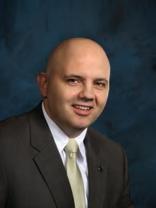
Boris Gradina, CCM, CCE, is general manager of Maryland Golf and Country Club, Bel Air, MD. He can be reached via email: bgradina@marylandgcc.org
What is the biggest true asset of a private club? Is it a golf course, a clubhouse, or loyal members that spends hundreds of thousands of dollars during their lifetime?
Many professionals in the industry strongly believe, and rightfully so, that a club’s biggest and most valuable asset is its employees, and there’s sound data to support this belief. It is fairly common that 40 to 50 percent of any operating budget goes toward salaries and benefits, uniforms, meals, etc. In many cases, we are talking about several millions of dollars every year. That’s a lot of money.
bers (though this all greatly helps) unless they pay attention to their staff members in the same manner they pay attention to their members. Both constituencies need to be looked after.
For clubs that still struggle at this moment, concentrating on their staff members that may just be the missing link to reverse their downward spiral direction.
A superb level of service is fundamental to the success of any hospitality establishment, especially private clubs. To achieve a superb level of service, all training, SOPs and manuals are useless unless high employee retention is
Nowadays, many clubs in the United States are run like multimillion-dollar corporations. There are strategic plans, master plans and action plans in place to direct clubs. Perhaps the most important plan – the HR plan – should be an integral part of all these plans. Employees, like everything else, need to be invested in. Clubs that understand this and take care of their biggest asset, their staff members, will most certainly be well cared for in return.
So, why is the employee turnover rate in the private club industry still above 75 percent?
Because the majority of members do not join private clubs to get average service and facilities, the majority of clubs should not compare themselves with the industry average but with the establishments well known for superb luxury and customer service, for example, The Ritz Carlton.
Service and amenities provided by The Ritz, or similar establishments, should be benchmarked for the majority of private clubs. Perhaps the main reason for its outstanding service is its employee turnover rate: about 20 percent annually, according to the latest data.
Low employee turnover relates directly to great service, which in turn translates into high customer satisfaction and high profitability. This is nothing new – it is common knowledge – so why do many private clubs across the country still struggle with this concept?
Clubs that want to be “truly” successful cannot achieve that purely because of great professional management, good governance, location, stature, and number of mem-
achieved. To do this, clubs first should examine how they recruit and interview potential candidates.
Finding the right talent to be successful in hospitality is very difficult. With the unemployment rate plummeting below four percent it is not getting any easier.
“Hospitality is almost impossible to teach. It’s all about hiring the right people,” a famous quote by Danny Meyer, gives clear guidelines on what to look for during the hiring process. Just because someone needs or wants a job at a club does not necessarily mean they should get it.
Every club employee, even the grounds crew and the office staff who will have limited direct contact with members and guest on daily basis, should have a hospitality heart. This means a true enjoyment in providing unparalleled service and exceptional experiences to members and their guests.
Without a hospitality heart, one cannot be successful in private club industry, regardless of the position. Being mediocre or simply average in an industry that requires excellence by its very nature simply will not cut it.
To bring service to a superior level is a monumental task and cannot be done by one person only. It takes teamwork, and many pieces of the puzzle must fall in the right places.
Employee retention starts on the first day of work, and one of the most crucial and often neglected pieces of the puzzle is proper orientation and onboarding. Orientation is an event and onboarding is a process.
Training is a part of onboarding. It is hard to believe there are many professionals in the industry who still have difficulty distinguishing the two. The latest HR Pulse Survey by McMahon Group ranks employee orientation as the number one benefit of having an HR department at private club, yet 55 percent of clubs do not.
This increases to 75 percent for clubs with less than 500 full members. So, the majority of clubs transfer one of the most important pieces of employee retention – new hire orientation – to the general manager, controller, or department head, people who already have a full plate of daily duties.
Wages and benefits are the second part of the puzzle. Only true professionals can provide truly superb service and they cost money. According to the U.S. Department of Labor, the national living wage in 2017 was $15.84 an hour; in some metropolitan areas it goes up to $20.32 an hour. Perhaps clubs should audit their wages to see whether they are even close to these numbers. If wages are far off, and often they truly are, then it may be why services fail to
meet their members’ expectations.
Even if a club is in financial trouble, management, the finance committees, and board should think twice, and think hard, before reducing staff levels, wages and benefits to meet budgets. It should be the last resort, and it always should be considered a temporary, short-term solution, rather than a new standard. You always get what your pay for.
The sense of belonging is the final piece of the puzzle. Members consider their clubs to be a home away from home. How many staff members feel the same? Do they truly understand the mission and purpose of their club? Do they take care of the club and its assets like they own it? Do they feel that the club is part of their lives too, or just a paycheck?
If the staff members do not feel a sense of belonging, then the service will likely suffer, and so will the club. The sense of belonging for employees is the easiest to achieve if the other pieces of the puzzle are in place.
Nowadays, many clubs in the United States are run like multimillion-dollar corporations. There are strategic plans, master plans and action plans in place to direct clubs. Perhaps the most important plan – the HR plan – should be an integral part of all these plans.
Employees, like everything else, need to be invested in. Clubs that understand this and take care of their biggest asset, their staff members, will most certainly be well cared for in return. BR

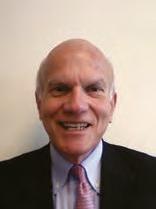
DAVID W. LACEY
David W. Lacey is a two-term member of the board of governors at Philadelphia Cricket Club. You can reach David via email: dlacey@hirshorn.com or at his office in Philadelphia by calling (215) 298-0047.
Business excellence is too often the management rhetoric at a private club. Our goal is to define what a private club is striving to achieve for its members and their satisfaction. I rely on an equation, which moves business excellence from rhetoric to specific actions by the general manager and the hospitality team.
This equation, proposed by the organization consultant, John Spence, is specific and leads to concrete actions by the club. The equation is: T + C + ECF x DE = BE
This equation means and connects to member satisfaction in these ways:
T = Talent. Staff your club with professionals who are passionate about the private club sector. They want to serve with distinction.
C = Culture. The club has these five cultural features of: 1) Direction as measured by clear, vivid and shared goals; 2)Competence – we are very good at what we do; 3) Mutual accountability – all team members expect each other to deliver at 100 percent; 4) Communication – clear and direct throughout the club, and 5) Confidence – our club has a sustained record of doing the best for our members and we are well known in our community for that outcome.
ECF = Extreme customer focus. Absolutely nothing interferes with doing our best work for the member. ECF is repeated with significant and small actions that benefit members and becomes the dominant rhythm of the club.
DE = Disciplined execution. DE is a single-minded focus connected to creating a memorable, satisfying experience for the member. With DE in place, members have frequent WOW experiences at the club. Also, DE is a multiplier in the equation and accelerates the achievement of BE, business excellence.
BE = Business excellence. BE is a characteristic of High performing teams.
To gauge member satisfaction, I recommend that the BE equation be used in this way:
Talent. What are our sources of new hires? How often do members compliment team members?
Culture. What are we doing to implement the five cultural features of BE?
ECF. Do members praise us for our customer focus? What are we as a team doing to position members as our number one customer?
DE. How often do members compliment our staff for WOW experiences?
The pervasive referring to T, C, ECF and DE by club management tells the team that we are serious about achieving BE at our private club. Persistence and repetition inevitably lead to BE but achieving BE may be long and hard. However, it is worth the effort!
Gallup – the polling organization – has surveyed effective teams across market sectors and globally and discovered that six characteristics define the term, High Performing Teams in Pursuit of Business Excellence. This pattern of characteristics emerged:
1. Direction – inspires achievement.
2. Measurable goals – set, monitored and achieved on a sustained basis.
3. Competence – we are “A” players, knowing how best to deliver for our customers or members.
4. Communication – open, frequent and transparent.
5. Mutual accountability – held to a high standard of execution with no subsidy for non-performance.
6. Discipline – a single-minded focus to deliver on time, on budget, and at a high standard for our members, our customers.
Business excellence and high performance by the club’s team lead to pride in what we do and how we work together. Both BE and high performing teams inevitably result in a high retention ratio for staff. Why? It is very simple: Winning (doing your best for members) is a retention magnet for talent BR
PAMELA RADCLIFF
Pamela Radcliffe is the HR Director and executive assistant a Countryside Golf & Country Club in Naples, FL. She can be reached at pradcliff@csgcc.net.
“Every organization is perfectly designed to get the results it’s getting.” ~ David P. Hanna
It’s a true and powerful statement. Most clubs these days have been focusing on design by way of renovations and rebuilds. But did you know you can “design” your culture as well?
Culture happens. Culture will happen without you knowing it unless you deliberately design your culture to be the environment you want.
Recently at a food and beverage leadership training seminar, more than one GM noted dissatisfaction with their internal club culture.
• Does kitchen staff walk on eggshells because of a passionate chef?
• Does employee gossip sap energy that otherwise should be directed positively toward members?
• Do employees cite communication as one of the greatest areas for improvement?
These are all elements of your club’s culture, and if you’re like most, you see room for improvement in one or more of those areas. So, how do you tackle the issues and close the gap?
It’s rare to find a club these days without a well-defined mission, vision and values. If you haven’t established these cornerstones to your organization, this is a must-do. However, many clubs have not intentionally set about the task of designing their internal culture. So it would come as quite a shock for staff to be acting one way on Monday, and suddenly, be scolded for acting that same way on Tuesday if the rules had changed.
The most effective culture change comes when those on the front lines have an active voice in creating it.
Step one: Empower a cross-functional team with representation from administration, F&B, kitchen, golf, wellness, etc. The team’s task is to create “expected behaviors and language.” There are many ways to do this, but the team can simply begin by brainstorming the answers to the following:
• How do we want to “be” with each other? Most people will want to jump to words like: teamwork, respect, coop-

eration, collaboration, etc. That may be fine, but what do they mean? Don’t assume people know the definition. • Once behaviors are listed, they must be defined. For example, what does “teamwork” look like in action? You may even wish to define acceptable levels of teamwork:
If truly empowered, what this team says, goes! (Those not ready for full empowerment might reserve the right for department head or the GM to have the final say on the agreed upon behaviors and language.)
Step two: Establish a rewards system to reinforce the behaviors and language
It’s going to be important to positively reinforce the newly established wanted behaviors and language. How will you do this? Maybe you already have a system in place such as “catching people doing the right thing” and giving them an on-the-spot reward. Good for you! You’re already ahead of the curve!
Step three – Communicate!
Here comes the fun part! Now that you have your new expected behaviors and language, it’s time to roll them out to the entire staff. What’s the best way to do this? Through the same cross-functional team that put it together: peer-to-peer?
You can rollout the “program” face-to-face as part of your Seasonal staff motivation session. Perhaps you make business-sized reference cards listing the behaviors and language, or at minimum, use your employee newsletter to communicate program details. Best practice: Do all three.
Beware of traps. None of this will work unless it is equally expected, monitored and consequences delivered across the entire organization. As leaders, GMs and department heads must be the role models.
Culture isn’t built in a day. Be patient.
These three easy steps are merely the stepping off point for your club to be deliberate about creating its culture. It won’t be perfect. You may have to tweak things along the way. People will make mistakes, but kind reminders about the new behaviors and language will go much farther than punishments. BR

Rosie Slocum, MCMP is director of membership, BallenIsles Country Club, Palm Beach Gardens Florida | www.ballenisles.org | www.facebook.com/ballenislescountryclub https://twitter.com/ballenislescc
“Money can’t buy love, but it can buy happiness – as long as it’s spent on someone else.”
- Michael I. Norton
Many clubs form their own individual not-for-profit, charitable foundation as they realize the meaningful difference their members can have in making charitable contributions.
These foundations can also serve as a powerful social activity, which unites club members through the common goal of providing financial aid for civic and tax-exempt organizations in their own communities.
Philanthropy through innovation has evolved into one of the leading ideals in the club industry. Members have discovered a way to give back to individuals and organizations whose mission is to service the needy for those less fortunate through a “grant” process.
There are organizations in every community that rely on gift-giving to achieve their purpose whether in the form of monetary contributions or donating time. Many people are in need of food, clothing, housing and medical assistance just to name a few. Some organizations require new equipment or repairs to their own facilities in order to continue or expand their work.
It begins by recruiting and forming a core group of members who volunteer to form and grow a charitable foundation organization over time through a word-of-mouth process within the club. The core group is responsible for a reach out program to other like-minded members interested in giving back.
Club staff also plays an important role to assist in volunteering in helping with recipient events, internal finance, clerical help and overall support of foundation goals and objectives.
The development in forming a charitable foundation is highly tasked with creating relationships with the goal of recruiting volunteer club members willing to give their free time to work in various areas. There are certain skills required of individuals that will help with different responsibilities such as recruitment, governance, finance, grant review, event planning and communications.
The standards of a charitable foundation are to teach and educate club members through the mission and vision of the organization and not simply solicit donations. Members be-
come inspired and enthralled in the idea of giving through their passion and excitement once ideals are understood.
Charity organizers create events that are attended by grant recipients who convey what their individual organizations do to help people in the community. These events are then offered complimentary to the membership. Through the education process, members by design begin to sponsor and fund the foundation to support the efforts of helping others.
The grants method is arranged with precise consideration. The selection process allows different civic and taxexempt organizations to apply with a “letter of intent”, which contains their individual requests for funding. A grants committee vets each request by visiting the organization to learn what they do and how much of the donation actually goes back to the community.
The grants committee then meets to review the requests and decides on which organizations are to receive funding. The idea is to try and fund all requests but to also consider those organizations where the community will receive the highest percentage of the donation. Some familiar organizations may include Habitat for Humanity and Feed the Hungry.
Once the recipients have been notified, a major grants reception is planned. Club organizers, recipients and the membership are invited to witness the grant-giving while learning about each recipient organization through their own stories. It’s an opportunity to see first-hand where funding will be used and experience the emotion of giving that brings the community and recipient organizations together.
The club can also benefit through media and public relations attention. Capturing event coverage in the news on television, newspaper, internet and social media portrays the generosity of Club members.
The work of a foundation is a year-round effort. There is always something to be done in order to keep growing and educating club members.
Take advantage of the enrichment provided by giving back and form a charitable foundation at your club. A venture that keeps giving from the heart! BR
This article was inspired by the continued charitable giving of the “BallenIsles Charities Foundation”
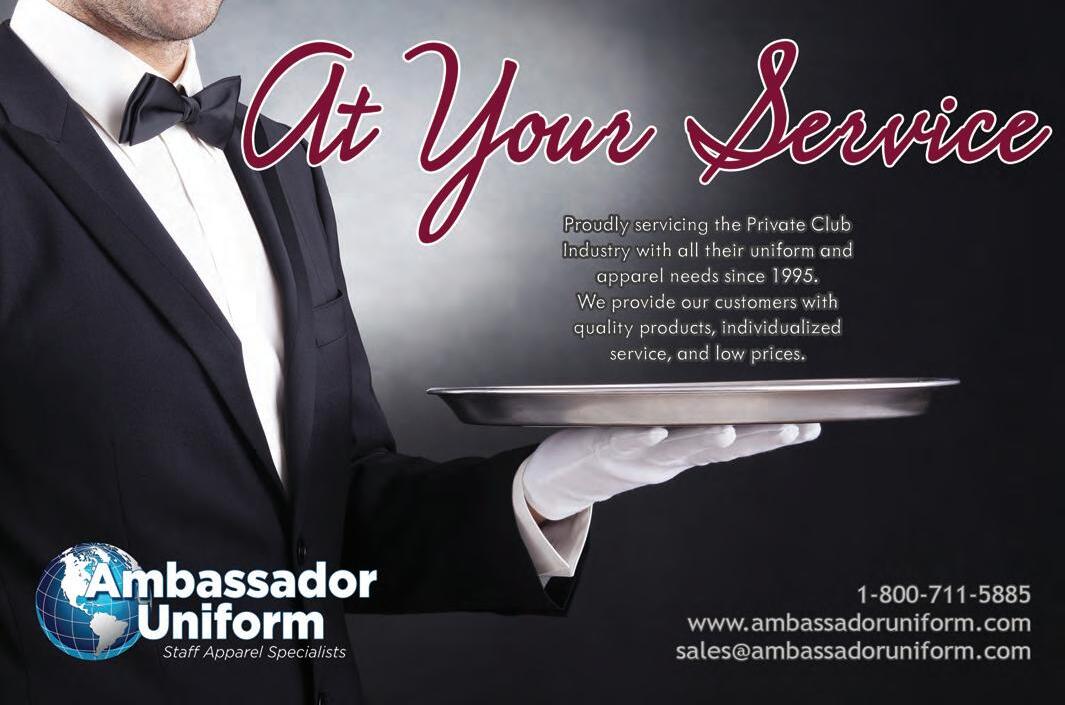


Melissa Low is the senior director, communications & advocacy, for the Club Management Association of America. For the latest information on these and other issues affecting the club industry, please visit CMAA’s Legislative Report blog at www.cmaa.org/legislative.aspx.
It’s an election year, and Congress has been working through its traditional summer recess to push forward with its annual budget responsibilities.
Here’s a brief look at the current status of the issues affecting the club industry, and what to watch:
The Current Status of WOTUS: On June 29, the Environmental Protection Agency and the Department of the Army issued a supplemental notice of proposed rulemaking to the July 2017 proposed action to repeal the 2015 definition of waters of the United States (WOTUS). In this supplemental notice, the EPA and Army seek to clarify that they are proposing to permanently repeal the 2015 Rule in its entirety.
claims that the rule exceeded the scope of Clean Water Act coverage and that it violated the Administrative Procedures Act in the changes between the proposed and the final versions of the rule.
Meanwhile the House of Representatives approved a spending package that included the Energy-Water appropriations bill, which contained language effectively repealing the 2015 WOTUS rule.
Additional H-2B Visas Issued and Exhausted: On Friday, May 25, the Department of Homeland Security (DHS) announced the availability of 15,000 additional H-2B visas for FY2018. In the announcement, Secretary of Homeland Security Kirstjen M. Nielsen indicated that the visas would
In the FY2018 spending package – HR 1625, the Consolidated Appropriations Act passed in late March, Congress authorized the DHS to adjust the annual limit of 66,000 visas. Before this move, the H-2B visa cap was met on February 28, 2018. Within a matter of days – on June 6, the 15,000 additional H-2B visas were exhausted. The volume of petitions received exceeded the available visas and prompted DHS to use a lottery system to select the qualifying requests.
The agency stated, “We are making it clear that we are proposing to permanently and completely repeal the 2015 WOTUS rule and keep the pre-2015 regulatory framework in place as we work on a new, improved WOTUS definition.”
The supplemental notice also provides the opportunity for additional public comments, given this clarification.
The EPA and the Army are working through a two-step process to repeal and replace the 2015 WOTUS rule, following the directive of the February 2017 Presidential Executive Order. Earlier this year, the EPA and Army finalized a rule which delayed the applicability date of the 2015 rule for two years to February 2020.
Friday, June 8, was a big day for the WOTUS rule with major developments in the Courts and in Congress. A US District Court judge in the Southern District of Georgia granted a preliminary injunction against the rule to a coalition of 11 states led by Georgia, and singled out the states’
be available the following week and outlined an additional requirement for eligible petitioners, a supplemental attestation on Form ETA 9142-B-CAA-2.
In the FY2018 spending package – HR 1625, the Consolidated Appropriations Act passed in late March, Congress authorized the DHS to adjust the annual limit of 66,000 visas. Before this move, the H-2B visa cap was met on February 28, 2018.
Within a matter of days – on June 6, the 15,000 additional H-2B visas were exhausted. The volume of petitions received exceeded the available visas and prompted DHS to use a lottery system to select the qualifying requests.
Unless Congress acts, there are no further visas available until October 1, 2018. The impact of this shortage has been felt on the many industries that rely on these visas for additional summer employees. BR
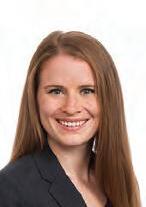
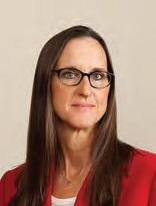
Some questions to ask:
What PII are you collecting?
What are you telling members when you collect this information about the purpose of the collection?
What PII are you storing?
Where are you storing it – hard copies, in the cloud, specific applications, etc.?
Who has access to what PII?
Why do they have access (for example, an employee requires certain PII to perform a specific job function)?
Can you audit who accessed PII and how PII has been used or disclosed?
Do you monitor access, use and sharing of PII?
Do you change an employee’s access to PII when his or her job changes occur?
Do you regularly train employees on their / the Club’s obligation to protect PII?
Do you terminate employees who violate PII policies?
Some Elements of a PII policy
Assessment to determine vulnerabilities and how you can mitigate risk.
Employee training, assessments and monitoring.
Detect and protect system failures.
Policies about storing and accessing records off premises.
Discipline for employees for violations of your policies and procedures. Due diligence of third parties who have access to PII (i.e. IT outsourcing).
Restrict physical access to records.
Monitoring and auditing for unauthorized or suspicious access.
Software updates are done promptly.
Review your policies annually and when material change to operations impacts security.
Website issues: review / clean up:
Consider how you are collecting data, what data is being collected, and how it will be used.
Consider how PII is disclosed and maintained.
Are your terms and conditions posted (what you collect and how you use it)?
How are you tracking visitors to the website (i.e., cookies)?
Do you have a button for members to accept cookies policy (GDPR requires this and it is becoming the industry standard)?
Consider online paying procedures (who processes the payments and what / how PII is protected).
All 50 states now have some form of law protecting personally identifiable information, (PII) and the new European Parliament on General Data Protection Regulation (GDPR) will also impact clubs that collect and store information of EU citizens.
Therefore, each club should pause and consider what information it collects and stores, where its members (and possibly their guests) reside and what state and other laws might impact or constrain these activities.
Our privacy practice group is advising clients to comply with the most strict state laws for two reasons: (1) Many states are moving toward adopting stricter laws over time, and (2) many state laws apply to their “residents” even when they are out of town (i.e. a Massachusetts resident spends two winter months in Arizona and is a member of a club there).
In other words, if you live in a state that currently has less developed laws in this area, you might still be obligated to comply with the stiffer laws of another jurisdiction, depending on the make-up of your membership and guests.
Some of the legal requirements may not impact a specific club (for example, if you do not collect data from your members when they view your website), but some laws certainly will apply and the club could face a number of challenges if it were to experience a breach. Also, your members likely expect that the club to which they belong takes their privacy seriously. That is, good privacy practices means better customer service.
To get started, the club can ask itself the questions set forth in the sidebar with this article. Determine what information you are collecting, how you use it and how you safeguard it. Evaluating this set of issues dovetails with considering your vulnerability to a cyber breach (PII can be jeopardized without a cyber breach), but a cyber breach is one aspect of the potential risk and this is an opportunity to kill two birds with one stone.
Once you know the “what” of your PII, you should obtain the evaluations needed and put policies in place to be sure you are legally compliant and that you are keeping your members safe. BR
Robyn Nordin Stowell is a partner in the law firm of Sherman & Howard L.L.C. in Scottsdale, Arizona. Robyn may be reached at (480) 624-2736 or by email at rstowell@shermanhoward.com. Jessica Belle is an associate and may be reached at (303) 299-8388 or jbelle@shermanhoward.com


Lynne LaFond DeLuca is the executive director of the Association of Club Catering Professionals and named the Gary Player Educator of the Year for 2016 by Boardroom magazine. You can reach Lynne at Lynne@TheACCP.com, or visit the website www.TheACCP.com. Twitter.com/ClubCateringPro | Facebook.com/Association of ClubCateringProfessionals
It was only a matter of time!
Virtual reality is everywhere and now it has arrived in a very exciting way in the $200 billion global event planning world.
New technology is continually changing and improving the way we do business and that rings true in booking, planning and executing both member and private events. Long gone are the days of “the big red book” as most event planning veterans remember the way we tracked events – hand written in pencil (NEVER pen!) in that gigantic spiral bound book.
Then catering software arrived, which provided a way to create BEOs (banquet event orders), reports and contracts; websites and email were a game changer (remember when we didn’t even have websites or email?); room diagram software, video marketing and iPad marketing tools.


Now it continues to improve. New technology will continue to evolve and it is our jobs to keep up.
So, do we need it?
Let’s start with the purpose of hosting events in our clubs. Simple answer, member and guest experience. We want to provide our members and their guests a place to host their most treasured life’s moments, whether it be personal, social events or important corporate events. And every event has one thing in common – there are no do-overs, no second chances to get it right. You have one chance to create the perfect event.
Therefore, allowing ourselves every ounce of updated technology to help create and better that overall experience is worth every penny invested to get it right. The cost of not getting it right is far too great.
So along comes virtual reality (VR), spearheaded in the event planning space by a company called AllSeated. It is revolutionizing the way that we work with members, market our clubs and visualize design. The impact of VR on the event planning industry is expected to be huge!
VR makes it possible for clubs, venues and professional event planners to greatly enhance their member and guest overall experience. With VRenabled venues and laser-accurate scaled floorplans, planners can bring an event to life in a way 2-D storyboards or online 360-degree video tours cannot.
By wearing a pair of virtual reality goggles, it allows your member or event host to “walkthough” your event space or club from any remote location. They could be thousands of miles away! Also, think of the membership applications, giving a site tour to a potential member!
VR allows venues and planners to design every detail of an event, including furniture choices, table linens and tabletop, dance floors, color themes, unique touches and more. The tool also serves as a differentiator to win and close business through pre-event visualization.
This type of technology can also include seating charts, the ability to track RSVPs and menu choices, timeline creation, task lists for vendors, and offers guest mobile check-in.
Using a VR headset, event hosts can access event layout and design, invite collaborators and become fully-immersed in every detail as if they were physically in the event space.
This “gamification” of event planning makes the process more time and cost-effective for planners and makes planning simpler, more flexible, and enjoyable for the event host.
In the past, virtual reality was only seen in movies, games and our imagination. However, today you are able to purchase of pair of virtual reality goggles from platforms such as Apple or Android, easily download an app to access your project or event, and then see an entire venue as if you were there, standing in the room.
Imagine being at a tradeshow with the ability to transport your potential event host right into your ballroom so that they can see and “walk down” the stunning staircase as they enter their reception and experience the stunning chandeliers that hang from the ceiling.
You didn’t even have to schedule a site visit, which can mean booking right on the spot rather than simply taking their information for later contact and consultation.
As with any new technology, we must be prepared in order to maximize the experience. We must evaluate our need, our team’s ability to adapt to new products and the return on investment. Adding VR to your sales process will require just the small investment of the goggles. Oculus, for example, is set to sell for goggles for $200. VR also has a minimal learning curve, meaning less time needed for training.
Keep in mind that although our member and event hosts want the latest in technology and ease of planning, they also want the human touch behind the technology. Never lose sight of that, because that’s what our clubs are all about – human connection and experiences. BR
AllSeated drives product innovation, customer support and simplification of event planning to help deliver the world’s finest event experiences. AllSeated has transformed the event industry to an alldigital platform where the entire ecosystem – venues, caterers, planners and vendors – can come together to delight and collaborate with their clients and hosts. This helps our community grow their businesses using AllSeatedVR, offering 3D floorplans to scale, virtual reality walkthroughs, tools such as guest lists, seating charts, timelines, mobile check-in and more. Headquartered in San Francisco, AllSeated can be found at www.allseated.com.


BRUCE R. WILLIAMS
Bruce R. Williams, CGCS is international marketing manager for Grigg Bros./Brandt and a past president of GCSAA. He can be reached at: brucewms1@hotmail.com
Technology is limitless because of the manner in which golf courses are maintained is on a fast pace.
The fact is, golf course operations have seen more advances in the last decade than it has in the three decades previous, and the next decade will also see significant advances.
Twenty years ago we were working with entry level computers and GPS wasn’t even a term used in golf course maintenance. Technology has brought on various new products and processes that have changed the way we do business.
So what has driven the need to incorporate technology into maintenance operations? The industry has always been focused on improvement and providing better golfing conditions. Superintendents have been ingenious about getting the most out of their budgets and manpower that they have available.
Some may remember the time when many able-bodied men were off to World War II or there was a lack of fuel to run equipment
More recently, with the economic collapse, and slashed budgets significantly, superintendents have been challenged to do more with less. Reduced staffing and elevating the minimum wage have created challenges, which may reduce staffing levels even further.
Golf course irrigation is improving with the advent of automatic systems, variable speed pumps, usage of recycled water, better nozzles and distribution and of course computerized systems for managing the precious water resource.
Golf course equipment 50 years ago was very simple and most of the staff members could fix and repair most items used on the course. Mower blades were sharpened one reel at a time. Now we have added hydraulic drive, electronics, computers and such to a lot of today’s equipment, which is more reliable. However, golf courses also require well trained equipment technicians to keep the fleet operating properly.
At a recent trade show, I saw a miniaturized helicopter used for spraying fairways, spraying that is now aligned with GPS to prevent overlaps and misses. Estimated return on investment for purchasing such GPS sprayers is just a few years.
Robotic mowers are here and while they do not operate without some assistance they do provide a saving on labor because workers can take on other tasks, like raking bunkers, changing cups, fixing ball marks, etc., while the mowers operate as a robot.
Office work also kept the superintendent away from being on the golf course. Human resources issues, payroll, scheduling, files, etc. were a burden and the reason many superintendents worked 14-hour days. Much of that work now is done with a variety of software programs and
automated time clocks linked with the front office. Recordkeeping for reporting to governmental agencies improves every year. Regulations increase but software is keeping pace with the additional requirements.
Scheduling of staff, formerly done on a chalk board, had to be changed several times per day. Now all of that is done on a big screen TV with several very good programs that also allow for recording tasks with man-hours and for better analysis and tracking of the actual expenses for maintenance.
The take home message for general managers and board members is this: It’s important for golf courses to use the latest technology in their operations. When replacing equipment look at what items can make your golf courses better, work more efficiently and make good business sense. Golf is a very competitive market, and it is highly likely that your competition is upgrading what they have year after year.
In 1995 I requested the purchase of a computer at my club. The response? “What would I ever use a computer for?” That was archaic thinking. Upon arriving at a new job in 1997 I asked where the fax machine was located (and who has a fax machine today?) and was told that there was one at the clubhouse I could use. Since it was normal to send and receive several faxes a day I calculated the cost of my time to drive back and forth to the clubhouse to process faxes. Needless to say, the expenditure was worthwhile.
Each and every golf course needs to take a good look at how technology can help the product improve but also operate more efficiently in the competitive marketplace. BR
BILL NAUROTH
Bill Nauroth is president/agronomist with Golf Maintenance Solutions. He can be contacted at office (480) 595-2699 or cell (602) 363-3242 or at: www.golfmsolutions.com.
Will be giving a seminar at upcoming 2019 GIS with David Downing on “Technology to Manage Irrigation & Inputs”

When we hear “new technology”, we often immediately think of the latest electronic gadget or piece of equipment that is supposed to help us save a little more time and or money.
As the golf course maintenance industry continues to change, it’s important for the superintendent to evolve with it. New technologies that are helping superintendents become more efficient need the superintendents to embrace the changes. This is especially true with some of the new technology for managing/scheduling labor and communication in general is available. Some of these include…
• Smart boards for job boards that integrate smart phones or tablets with television monitors (Smart TVs) to quickly schedule and update on the fly and allow access for staff by their phone also
• Employee payroll apps such as “U-attend” that allow you not only to quickly check staff hours through your phone or tablet, but also track staff’s hours on projects, capitals, etc.
• Streamlined training programs such as McCord Golf Safety that help provide valuable training tools for our employees via the internet
• Online meetings through sources like “Go To Meeting” that help share valuable information through computers or tablets in real time
• These online services such as Skype are also valuable for conducting “face to face” interviews anywhere in the world
• “FaceTime” (Apple) or “Video Call” (Google) offer instant eyes to confirm or lend support to situation on the golf course leading to better decisions
• Group text messaging for staff or management for communicating critical information quickly
• Use of Smart TVs to show slideshow of pictures of the course to help staff understand areas of attention or job well done throughout the day
We talk a lot about labor and how the workforce in general continues to evolve. It’s becoming more and more challenging for golf courses because a younger labor force is motivated differently and not as used to personal communication.
These workers are used to getting their information, instantly and electronically, through a variety of devices. This is especially challenging for golf course superintendents used to more traditional methods of managing. But these tools help the superintendent accomplish communi-
cation efficiently and effectively.
We recognize this and are working with clubs to help train superintendents and employees on how to continue to be on the cutting edge of our industry. We work together with the superintendent and employees in both group and one-on-one training to integrate technology and methods that suit their property. Our years of experience as superintendents allow us to help break down those barriers for a superintendent and make sense of those new technologies.
Using new concepts for human resource management is just as important as using the most up-to-date computer for irrigation or the most effective cutting units on turf grass.
With a work force that continues to rapidly change in golf course maintenance, we need to take advantage of new technology that helps manage our valuable labor resources. BR
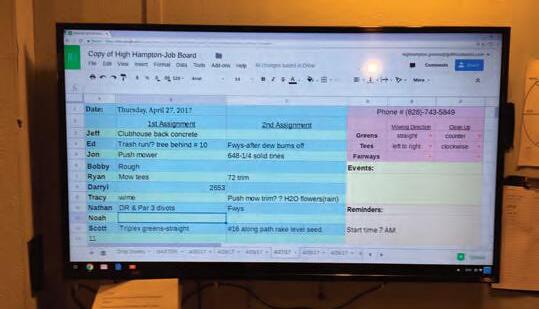

CLUB FACTS & FIGURES

KEVIN F. REILLY
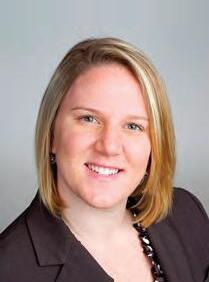
As the club industry continues to evolve between private memberowned and public clubs, the majority remain member-owned, focusing on the member’s experience rather than on public consumption.
However, board of directors or governors of clubs are trying to fund operations without raising members’ dues while trying increase club use by non-members through offering non-traditional activities. But non-member revenue is not the cure-all as non-member use does not provide the needed revenue and may negatively impact club usage of the club by paying members.
It’s proven difficult to convince boards of this reality and as a result, many clubs are expanding the amount of nontraditional activity in which it engages and non-member income is approaching or exceeding the limits established by the Internal Revenue Service for tax-exempt clubs.
Although the limitations can be exceeded occasionally, the rule is in place to ensure “substantially all” club activities are for the “pleasure recreations and other nonprofitable purposes.” Receiving more than the IRS stipulated income can cause an examination or even termination of a club’s tax-exempt status.
Contented membership: One of the main reasons clubs are successful is because, like other non-profits, the members come together under a mission. While a club’s mission is for members to socialize, golf, play tennis, etc., use by non-members can cause undue tension among those who are dues-paying members. The club must always consider if the non-member activities by non-members are negatively impacting or inconveniencing the paid members.
The number one priority of a member-owned club should be to always keep the paying members happy. Too
Privacy is very important and goes beyond who you allow to enter the club. Privacy can impact operations, the application of certain federal laws and how the club is viewed in the community. States or municipalities with public accommodation laws, as well as the federal government, may be more willing to treat your organization as a “private” club if it is taxexempt and limits the usage of its facilities by the general public.
According to the 2018 issue of Clubs in Town and Country, which is published by PBMares, LLP, 90 percent of clubs self-reported non-member income. As tempting as extra cash might sound, there are several factors affecting the true cost of non-member activity that must be evaluated.
15/35 rule: Gross receipts derived from the public using the club is the most observed consideration taken by management when considering non-member revenues. Per IRS guidance, a 501(c)(7) a social club may receive up to 35 percent of its gross receipts from non-member sources, including investment income. No more than 15 percent of gross receipts may be derived from non-member use of club facilities and services.
much non-member activity runs the risk of membership questioning why they joined a private club in the first place to pay for the upkeep of facilities for the use of others.
Indirect costs: Clubs must consider all costs, including wear and tear on the facilities before permitting non-member activity. For example, banquets are generally one of the more profitable non-member activities but may impact the physical environment the most. In addition to the physical toll non-member activities can have on a club, there are also indirect administrative costs to consider as well.
1. How much time is your banquets manager spending with a non-member event that is better spent elsewhere?
2. How much are housekeeping costs for a room block from a non-member event?
If the aggregate of all costs exceeds the income, clubs need to really consider the benefit of public consumption. After considering all the true costs of non-member activity, clubs should also consider some of the benefits that may outweigh the costs.
• Excess capacity – Operating any business involves some aspect of sunk costs regardless of activity level. It may be offsetting those sunk costs with non-member revenue is better than having excess capacity. Clubs should measure the excess capacities and put to use what provides the best possible outcome.
• Employee engagement - An “engaged employee” is one who is fully absorbed by and enthusiastic about their work and takes positive action to further the organization’s reputation and interests. Non-member income can supplement not only cash flow but can also help stimulate and motivate employees to keep them engaged.
• Clubhouse lifestyle – Clubhouse usage and grounds activities increases member energy and excitement. A lively clubhouse stimulates spending.
• Future members – Advertising for private club membership is almost completely word of mouth. Non-member events have the added bonus of becoming the newest
member. It is common for clubs that are sensitive to outside influence to vet the membership of another club and permit their members to use their club as well. This can provide increased revenue with a minimum amount of interruption. While reciprocity is appreciated and respected, guests are still non-members and therefore their activity is still considered as non-member income. Many city clubs run into this problem since the hotel room rental are almost exclusively from reciprocal arrangements.
One final issue is privacy. Privacy is very important and goes beyond who you allow to enter the club. Privacy can impact operations, the application of certain federal laws and how the club is viewed in the community.
States or municipalities with public accommodation laws, as well as the federal government, may be more willing to treat your organization as a “private” club if it is tax-exempt and limits the usage of its facilities by the general public. Private clubs should be operate for the benefit of its members. BR
Kevin F. Reilly, an attorney and CPA, has been involved in the hospitality area and clubs in particular for more than 30 years. He is a partner in the firm of PBMares, LLP. Mary F. Dolan, CPA is an assurance manager at PBMares, LLP in the hospitality niche. Both Kevin and Mary may be reached at their Fairfax, VA office by calling (703) 385-8809, or email kreilly@pbmares.com and mdolan@pbmares.com.

plights and insights

NaNcy M. LeVeNbURG
Nancy Levenburg, Ph.D., is a professor in the Seidman College of Business at Grand Valley State University in Grand Rapids, Michigan. She is the president of Edgewater Consulting, and is a member of Spring Lake Country Club in Spring Lake, Michigan. For more information, contact her at: levenbun@gvsu.edu or (616) 331-7475.
The university that I work for (Grand Valley State University in Michigan) has an Office of Disability Support Resources. The office’s mission is “to provide support services and accommodations that enhance the environment for persons with disabilities and to help educate the university community on disability issues.”
It provides assistance and resources with respect to alternate format textbooks (for those with print disabilities), alternate testing, assistive technologies, note-taking assistance, tutoring, a van transportation service for those with mobile disabilities, and more.
Grand Valley State University’s philosophy is:
Grand Valley State University (GVSU) is committed to providing access to programs and facilities for all students, faculty and staff. GVSU promotes the inclusion of individuals with disabilities as part of our commitment to creating a diverse, intercultural community. It is the policy of GVSU to comply with the Americans with Disabilities Act as amended by the ADA Amendment Act (2008), Section 504 of the Rehabilitation Act of 1973, and other applicable federal and state laws that prohibit discrimination on the basis of disability. GVSU will provide reasonable accommodations to qualified individuals with disabilities upon request.
Grand Valley State University, of course, is a public institution – of nearly 22,000 undergraduate students and over 3,100 graduate students. It also must comply with Title II of the ADA act, since all publicly-funded colleges and universities must provide equal access to postsecondary education for students with disabilities. (Title III of the act covers privately-funded schools.)
So, the Club Tax Newsletter has raised some very interesting ADA issues lately about the implications associated with revenue derived from a private club’s non-members and non-member organizations.
For example, the newsletter, published by Mitchel Stump – a CPA and consultant to the private club industry – has raised the question, “Does allowing a ‘non-member’ organization to use your golf course expose your club to being a ‘Public Accommodation’? If your club is open to the ‘General Public,’ even if ‘sponsored by a member,’ does your golf
course need to be ADA compliant in areas utilized by ‘nonmembers’?” For example, bathrooms? Lavatories? Drinking fountains? Fire alarms and warning systems? Golf cars?
The issue is important. According to a report published by the Club Management Association of America (CMAA), “… the club industry has always been a leader in accommodating people with disabilities whenever possible. With the average age of club members continuing to rise, an increasing number of clubs are finding that many of the accommodations used to aid people with disabilities are also used by elderly members.
Any attempts to make your facilities accessible to disabled members, guests and employees contribute to promoting the image of the private club industry as hospitality at its finest. Furthermore, treating people with disabilities in a dignified and respectful manner is simply the right thing to do.” (available at: https://www.cmaa.org/uploadedfiles/member/legislative/ada.pdf).
According to Stump, if a golf facility is a “Public Accommodation”, it may need to have a handicapped-accessible golf car available for the disabled, as well as ADA-compliant restrooms on the course. In fact, “the total golf experience should be ADA compliant.”
Don’t mistakenly assume that because yours is a private club, it is immune to ADA requirements. The CMAA states, “only private clubs that are open to only members and their guests, do not regularly hold public events and are tax-exempt under the Internal Revenue Service’s 501(c)(7) code are exempt from ADA regulations. In addition, any club, no matter what its status, can be subject to litigation over the issue of exemption, whether or not the club ultimately prevails on that issue.”
So, has your club considered what it means to be ADA compliant… what changes it may need to make? If so, has it budgeted sufficiently for providing appropriate accommodations… or potential legal fees if challenged? BR
LISa caRROLL
Lisa Carroll is a search executive and consultant with Kopplin Kuebler & Wallace, LLC, a consulting firm providing executive search, strategic planning and data analysis services to the private club industry. She specializes in executive chef searches. Lisa can be contacted at (561) 596-1123 and at lisa@kkandw.com.
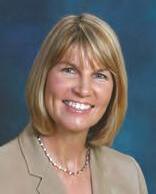
In the candidate position profiles written for our searches, we often state that we are looking for people with a “the answer is ‘yes,’ what is the question” mindset. While we’re looking for people who have an inherent focus on serving in a hospitality role, we are not looking for “yes” men and women.
In fact, sometimes we’re hired to replace a leader who said “yes” to everyone and, in so doing, led their team astray by chasing and implementing every member suggestion. These managers have no true compass. They end up frustrating their team and, ultimately, their members. We see this behavior particularly in newer GMs who do not realize that always saying “yes” often results in promises they cannot keep and their teams running in circles. Saying “yes” to one member may displease many more members.
So how do new GMs combat this tendency to say “yes” to all member requests? Here are five tips for getting to a positive outcome without actually saying yes:
1.Do your research before giving an answer. Say something like, “That is a great suggestion. Let me do some research and follow up with you on that.” Then follow through with your promise and provide an informed and thoughtful, data-driven explanation. Making decisions based on facts and data are more impactful (and better) than making decisions based on anecdotal opinions.
2.Check with your team members to get their input. This gives them an opportunity to synergize and perhaps come up with an even better suggestion. This action also promotes staff buy-in and provides the feeling that the GM “has their back.” If members do not want the chef to take items off the menu when they add new menu items, talk with the chef to get their feedback. Having too many menu items makes it harder for the team. It slows down ticket times, increases modifications, raises inventory levels and increases food costs. Talk with the chef and then explain to the member why the club can’t continue to grow the size of the menu. Instead, on the
bottom of the menu state, “If you have the time and we have the ingredients, we will make it for you.”
3.Always convey what can be done and not what cannot be done when communicating with a member. Perhaps the outcome is not exactly what the member is articulating but it is a compromise that doesn’t sound like “no.” For example, a member may say: “We just got back from Morocco and had the most amazing experience. We should have a Moroccan-themed night at the club and offer Moroccan food. I think it will be very well attended.” The GM could say, “That’s an interesting idea. Why don’t we offer a Moroccan special and see how well that is received” or “we are planning an International Night in the near future; let’s add a Moroccan dish to that buffet.”
4.When all else fails, use a committee as the scapegoat. For example, a member might say: “Our greens need to roll faster; they are way too slow.” The GM can respond by stating: “Let me present your comment to the green committee.” Present the comment to the committee and then provide thoughtful, informative feedback to the member about why the greens are currently at that speed.
5.Put a strategic plan in place. Clubs with active strategic plans do not let arbitrary opinions run the ship off course – no matter who is managing or governing the club.
Consider Aesop’s fable about the miller, his son and the donkey. When we try to please everybody, we can often end up pleasing nobody. BR

By Teri Finan

“curiosity” is defined by Oxford as “a strong desire to know or to learn something.” Professor albert einstein claimed the characteristic as a key to his success, saying: “I have no special talents. I am only passionately curious.”
And that in a nutshell describes boardRoom’s 2018 Gary Player educator of the year, Ray Cronin, best known for three defining characteristics; passion, curiosity and a relentless drive to help clubs succeed.
With a BS in Electrical Engineering from Worcester Polytechnic Institute and an MBA from Harvard Business School, Cronin was nearly three decades into a successful career in the high-tech world when his curiosity took him down an unexpected path. Nearly 10 years later, his trademark passion and intense drive continue to fuel a journey that has transformed the club industry.
“As member of a club near my home in Massachusetts, I eventually joined the board of directors,” Cronin recalls. “Watching important decisions being made in the boardroom with no analysis or supporting data was eye opening, and at that point a lightbulb went on.”
He started investigating and came to the realization that clubs all over the country were in the same position; making decisions in a vacuum because accurate, reliable data was simply not available. “I was determined to bring facts and data to the table and to find a way to make such information available to all clubs.”
Cronin contacted a former colleague, Russ Conde and together they set out to develop a solution. The pair launched Club Benchmarking in early 2009.
“Club Benchmarking was founded on the belief that when club leaders elevate fact over opinion, the result is healthier clubs, more empowered general managers and boards that are properly equipped to focus on strategic issues,” Cronin explained. “The concept was literally born in the boardroom of a private club, in response to a clear and urgent need for facts to guide the decision-making process.”
When Cronin and Conde started Club Benchmarking, use of business intelligence and benchmarking were common practice in other industries, but the concepts were foreign to the fragmented, cottage industry of member-owned private clubs. From the beginning, the pair knew a strong commitment to education would be the key to industry adoption of a data-driven leadership model and to achieving their goal of shifting dialogue in club boardrooms from tactical to strategic and opinion to fact.
Over the last decade, Ray Cronin has become a recognized subject matter expert and trusted advisor to clubs across the country. He travels thousands of miles every month to provide education for national industry associations and their local chapters, and to serve as a champion for the managers and boards of individual clubs.
Since the company’s founding, he has personally provided onsite advisory services to more than 350 clubs. A dedicated advocate for responsible club governance and strategic, data-driven club leadership, Cronin’s intense travel schedule reflects his deep commitment to educating the industry and helping clubs succeed.
Mark Bado, general manager of Myers Park Country Club in Charlotte, NC and 2018 CMAA National Secretary Treasurer, has been a champion of excellence in club industry education throughout his career. Bado holds the CCE and MCM certifications and has served on CMAA education committees at both chapter and national levels.
He offers this summary of Cronin’s role in the industry and his reputation as an educator: “Ray’s personal experience as a board and committee member and president at his own club, and his years of in-depth study into best practices of club finances and governance, have made him the go-to source for best financial practices and benchmarking information in the private club industry.”
Reflecting on the honor of being recognized with the BoardRoom award, Cronin is simply grateful: “I am driven by curiosity and passion, and motivated to learn as much as possible about what drives success in the club industry. I thank God for the opportunity to continue to learn and to share what I’ve learned in a way that makes a difference for the industry and the people who serve in it.” BR
Teri Finan is director of communications, Club Benchmarking. She can be reached at (617) 830-2570, Ext. 110 or via email: tfinan@clubbenchmarking.com
DaVe DOheRTy
Dave Doherty is president/CEO and founder of the International Sports Turf Research Center, Inc. (ISTRC) and holds three patents regarding the testing of sand and soil basedgreens. He can be reached at (913) 706-6635 or via e-mail: daveistrc@hotmail.com Web page: www.istrc.com
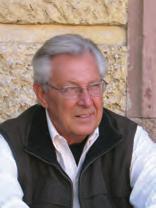
This article was first published 10 years ago in the BoardRoom and is being repeated because of the need to know about the physical, chemical and biological properties of our soil. Water testing is needed today, as much as any time in our history.
The skyrocketing cost of materials we use on our golf courses is higher than at any time in our industry’s history.
At the time that budgets were put together during the second half of 2007, no one could have foreseen the almost 100 percent rise in cost of petroleum products. This resulted in the cost of the golf course chemicals being raised accordingly. Some of the more affluent courses have been able to raise their budgets accordingly but they are the more fortunate ones with a sympathetic board or owner and the funds to do so.
The normal reaction to these skyrocketing costs has been to cut expenses somewhere. Most courses have reduced their staff and are taking a closer look at the products they are using. Some courses have even gone so far
as to eliminate money they have budgeted for soil and chemistry analysis, as well as reduced the amount of fertilizer and other chemical products which would normally be applied over the course of a year.
Most courses have also reduced irrigation to save on water cost. Although these actions result in the short-term savings, the consequences of some of these cutbacks can be devasting long term.
Over the last 10 years we have learned that by knowing the physical, chemical and biological conditions in our courses, we can use that knowledge to apply the correct amount and type of chemicals that will best meet the needs of our plants. The physical properties knowledge allows us to aerify to the proper depth and with the most efficient size tine, and to fill the holes with the proper material or leave them open.
The most effective and ineffective irrigation is dictated by the physical properties of the soil we are trying to water into, not onto or through.
See GReeN cOMMITTee |98

maRketing committee

cORey SabaN
Corey Saban is co-founder of Newstation.com. A former Emmy nominated and Associated Press winning TV journalist Saban’s company serves as a virtual newsroom for all industries looking to use short form video to engage their clientele. To learn more, text the name Corey to 31996 or email him at CSaban@Newstation.com.
It seems every club I talk with struggles with communication no matter their size, membership or location. how do you get members engaged? how do you boost attendance at events? Why are some members always saying they didn’t know about something?
Communication is vital to your success but how we communicate has evolved.
Growing up many of us watched the evening news. That’s how we stayed informed but think about doing that now, imagine having to wait till 11p.m. to find out what’s happening in the world!
No way, in fact by the time the news comes on we usually know everything already. Any information we want is available 24/7 with a simple swipe on our Smartphones …from weather and news to sports and social media updates.
Viewers retain 90 percent of the message in video compared to just 10 percent in text.
Short form videos can highlight dining and social events, construction projects, holiday celebrations and marketing materials. Anything that would’ve printed can now become a video. They then share it with members in an email, on their social media sites and internal TV screens. They create a feeling about the event much more than a simple text post or picture.
And here are a few other points to know. Once you go over 80 seconds on a video, you lose 72 percent of your audience. So remember the KISS theory, (keep it simple silly). Use a good quality camera to capture video to prevent poor or grainy images. Lastly understand there are short form videos like the updates, which are great for daily communication.
If you are committed to improving your communication then remember your members are most likely finding their info in emails, Facebook and your app. But also remembers you can tell your story, by sharing it in video to see the results you desire.
Communication has evolved and the ability to find and share information has as well.
Your members are depending less on paper and becoming more tethered to technology, particularly their Smartphone. Statistics show the average person touches their phone about 80 times a day! So why would they take your flyer or save the newsletter? Those get lost, left behind or quickly tossed with the old mail.
Many clubs and groups in the private club industry today are using short form video, when they realized people were not reading their text postings. The results have been phenomenal, because they’ve received more click throughs, inquiries and positive feedback. Why? Because short form video tells a story and gets results.
Longer form, high end videos of about five minutes, including drone footage and music, can be more costly but are great for presenting information to prospects considering moving into the club.
Think about your communication challenges, then Google and check out web video statistics and see the eyeopening data for yourself. Social video gets more 1,200 percent more shares than text/photos combined.
If you are committed to improving your communication then remember your members are most likely finding their info in emails, Facebook and your app. But also remembers you can tell your story, by sharing it in video to see the results you desire. BR

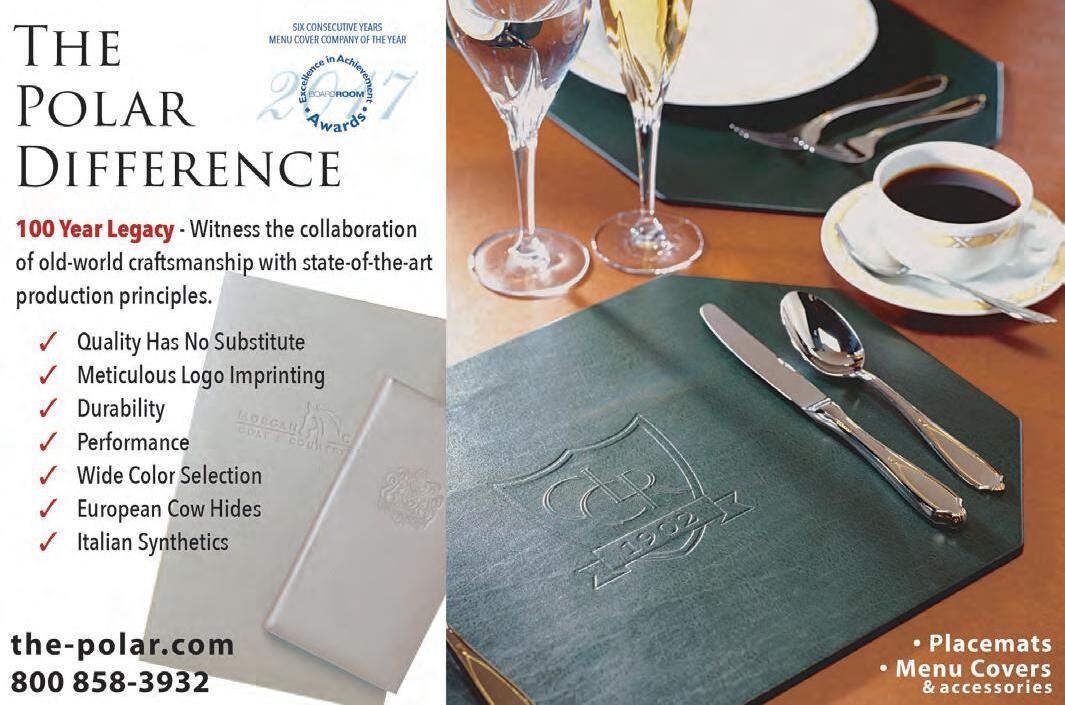

bILL bOOThe
Bill Boothe is president and owner of The Boothe Group, LLC, an independent consulting firm that helps clubs understand computer technology, make good decisions and receive the highest value from their technology investment. During his 28 years in the club industry Bill has assisted more than 400 private clubs. Bill can be reached at bboothe@boothegroup.com.
I have a pretty good idea of what private club managers know, and don’t know, about technology. That comes after working with more than 400 club managers over the past three decades, and speaking with hundreds more at conferences and industry meetings.
And the news isn’t good.
For the most part, club managers know very little about critical technologies that affect the day-to-day operations of their clubs. Worse still, they are generally unaware of key new technologies that can enhance the member experience at their clubs. Now, many managers might say:
“So what? That’s why I have a knowledgeable CFO/controller, or an in-house IT professional(s), or outsourced to an IT support company. It’s their job to keep up with technology. Not mine.”
Twenty years ago, or maybe even 10, such a statement could have been true. But no more. The days of club managers depending upon others to understand and manage technology are fast disappearing. For good reason.
Today’s technologies are affecting the member experience – directly. And if the member experience is in play, the club manager had better be on top of it.
Think for a moment if managers took the same approach to other key club functions as they often do with technology… for instance, the food and beverage operation. How many managers would say, “I don’t need to know the details of what’s going on in the dining room and kitchen. That’s why I have an F&B director and an executive chef.”
Or how about … “Don’t bother me with the ins and outs of golf course maintenance. That’s why I have a golf course superintendent.” Or maybe… “Fitness and Spa? I don’t have time for that. Talk to my staff in charge of those operations.”
Of course, such an attitude is unthinkable for club managers. These are critical amenities that are important to the members. So, by definition, they must be important to the club manager. And to make good management decisions about those amenities, club managers must be well educated in their operations.
Then there’s technology. For decades technology has been seen by managers as a sort of utility (think HVAC, water and electricity). Relatively invisible to the members. As long as it’s up and running, no one pays any attention.
The idea of technology as a member amenity only surfaced when member websites became the norm in private clubs. In the year 2000, less than 10 percent of clubs had a member website. By 2008, 80 percent, and today, 99 percent.
Member websites opened the door to technology as a member amenity. And that website door has continued to swing wide open with a variety of online functions such as reservations (club dining and events, tee times, courts, etc.), access to member billing information and bill pay, timely news and alerts, robust member directories and member-to-member communications, detailed events calendars and much more.
Over the years many new and important technology dimensions have emerged to compliment member websites. Mobile apps sporting most of the traditional website functions also offer push notifications, F&B order ahead, member recognition with beacon technology and geo-fencing. Plus, instant SMS surveys of member satisfaction in targeted areas, with sophisticated database queries of member behavior, preferences and buying patterns, and advanced analysis of historical data to predict future member behavior.
Add to these new technologies the insatiable appetite for technology by the Gen Xers and Millennials (your members of the near future) and the verdict is clear – club managers must become tech savvy – quickly.
But what qualifies as tech savvy for managers? In my opinion, managers should have a good conceptual understanding of the major technologies affecting private clubs. Here’s an everyday example of a conceptual understanding versus a technical understanding.
Most of us understand how a photocopier works – conceptually. We understand that it can reproduce printed documents in color or black and white. We know that it can make multiple copies, that those multiples can be collated and maybe stapled.
We know that we have to add paper and toner to keep things going. We know that many copiers also serve as network printers and scanners and may be able to email documents, and so forth. Essentially, we know what a copier is capable of doing.

!"#$"%&'()*+$,,',&)-./0$,1).2)"3%)4%$# -./0#%3%,5'6%)-.,57+"',&)".)"3%)-+78)9,:75"#1 ;;;<(+78;'5%(.,57+"',&<(./

What we don’t know, from a technical standpoint, is how a copier actually works. We don’t know the mechanics of xerography, or how a scanner actually captures an image, or how the paper sorter actually collates pages, or how a computer document is translated into a printed image. And we don’t need to know that level of detail. Instead, we must know what a copier can do for us – conceptually – and how that can benefit our operations.
And so it goes with technology in general. Managers must conceptually understand the key technologies affecting club operations and the member experience. Those technologies include:
• On-site computer networks and their associated gear
• Off-site hosted environments
• Wired connectivity
• Wireless systems (WiFi, RF, laser)
• Telephone systems (which are actually computer systems)
• Peripherals (PCs, printers, scanners, mag card readers, etc.), and
• Websites (mobilized, responsive).
In addition, managers conceptually must understand club management software solutions, including:
• Membership database
• Accounting
• Dining POS
• Retail POS and inventory
• Purchasing
• Spa and fitness
• Member websites and apps
• Reservations (tee times, courts, events, dining, lodging, marina, etc.)
• Blast email communications, and
• Business intelligence queries and reporting.
Plus, managers must understand other tech issues such as:
• Cyber security (PCI, systems protection and monitoring methods, employee education)
• IT strategic planning and budgeting
• Systems evaluation and selection
from Green Committee |93
When we irrigate onto an area with the physical properties out of balance, we are wasting water. If the area to be watered is sealed off (less than two inches of infiltration rate per hour) from compaction, excessive thatch, high organic matter, high percent of fines in the sand or soil, etc. than the water cannot penetrate into the root zone system and will run off to the surrounding areas. If another area to be watered is too droughty (more than 20 inches of infiltration an hour), the water will pass through the area we are trying to water, and in most cases out through our drains.
• Software re-engineering
• Software deployment
• Up-front and on-going employee education.
Where can managers gain the conceptual knowledge needed? Unfortunately, the private club industry is not wellpositioned to educate managers on technology concepts. The leading industry associations offer little in the way of meaningful technology education for general managers. Want a detailed knowledge of wines and spirts – no problem. Want to know how a wireless network operates – not so much.
But there are resources available to club managers to expand their conceptual understanding of technology. First and foremost are the IT folks supporting the club’s current systems. Whether that’s in-house staff or an outside company, your IT professionals should be able to provide a conceptual overview of all these key topics. Their tendency will be to go too deep into the details so you will have to remind them that you just need to know the following about each technology:
• A conceptual overview of how the technology operates
• The general benefits offered by the technology
• Any club-specific benefits of the technology
• Any issues or drawbacks to be aware of
• The general costs associated with the technology – initial and on-going, and
• What it takes to manage the technology long term.
You can also learn more about how tech impacts your club through “reverse mentoring”, working with staff members to learn how they currently use technology, and what they would like to use it for in the future.
The bottom line is this: Club managers must have a conceptual understanding of key technologies and procedures in order to make good management decisions, improve club operations and enhance the member experience. Technology is now an amenity – just like dining, golf, tennis, spa/fitness, lodging and the rest. Don’t be left out of the technology loop! BR
Not knowing what chemicals need to be applied and in what amounts, and wasting water when irrigating, will normally result in more wasted dollars than the combined testing costs.
Recently, a superintendent in Florida explained to me that his total budget was $1,200,000 per year and that he budgeted $6,000 per year for testing, which amounted to one half of one percent of his total budget. Another superintendent in the Midwest with a total budget of $700,000 allocates $3,500 a year for testing, which also amounts to one half of one percent a year of his total budget. They each felt that it was one of the best investments they make. BR
JOhN eMbRee
John Embree is CEO at the United States Professional Tennis Association and can be reached via email: john.embree@uspta.org.


The United States Professional Tennis association (USPTa) is partnering with RacquetFit to introduce a new certification for tennis-teaching professionals, fitness coaches and medical providers.
Earlier this year, 35 early adopters participated in a certification course at the USPTA World Headquarters in Lake Nona, Florida.
Modeled after the extremely successful Titleist Performance Institute (TPI) in golf, Dr. Greg Rose and Dr. Sean Drake have pioneered gamechanging education using technology, medical advances and intensive research that will help tennis professionals improve the performance of their customers.
RacquetFit, an educational organization dedicated to the study of how the human body functions in relation to tennis, has started offering seminars throughout the United States for providers who wish to earn the RacquetFit certification.
The program, new to the tennis industry, has been developed over the last couple of years by an advisory board of leading experts in sports science. With TPI’s cutting edge research and development capabilities and because of the over 21,000 professionals certified through their network for golf, RacquetFit will produce the same cutting-edge education for the tennis industry.
Why does this matter?
If you have golf at your facility, I’m sure you’re familiar with TPI certification. For more than a decade, coaches and fitness professionals have been using a screening process to evaluate athletes in striking, throwing and rotational sports outside of golf. Whether in baseball, hockey, soccer or lacrosse, it is vital to understand how an athlete moves or what their physical limitations are, so coaches can better inform their students, improve training and recommend exercises to prevent injuries.
While other sports are far more advanced than tennis when it comes to injury prevention and training, USPTA members who become certified in RacquetFit will change the way they teach because of the results their students will see. While our sport has many similarities to golf, there hasn’t been a way to evaluate movements that are specific to tennis.
Though the TPI screen and training principles are extremely useful for programming and gaining insight into an athlete’s movement, the system is not specific to an athlete’s technique, nor does it comprehensively evaluate every movement pattern in the sport of tennis.
In 2015, the USPTA approached Greg Rose about creating a screening and training protocol specific to tennis. Working with some of the leading minds in tennis and sports performance, Dr. Rose and the team of RacquetFit advisors, many of whom are USPTA professionals like former tour player, Jeff Salzenstein, created the Body-Tennis Connection.
During the two-day session in Lake Nona, USPTA professionals and fitness trainers participated in a hands-on learning experience designed to demonstrate how to increase player performance through a deep understanding of how the body functions during the serve.
Future RacquetFit seminars will tackle the forehand and backhand. Also, forthcoming will be an athlete management system that will be able to monitor the progress being made by individual athletes. Professionals left our headquarters in awe of the information they had received from the seminar, saying it was “game-changing” and a “must have for the tennis-teaching coach of today.” Feedback from global education director Michele Krause stood. In her testimonial video, she explained that when it comes to screening the tennis athlete, you should “assess, not guess.” What a perfect way to describe this certification!
Upon completion of the certification, professionals will have the tools to screen the physical limitations of a player along with the knowledge of how to get them back to performing at a high level. USPTA Members receive a $150 discount on the cost of certification while non-USPTA members receive a provisional one-year USPTA affiliate membership.
What does this mean for your club? Whether it is your tennis pro or your fitness staff, this certification adds yet another benefit for your members that can separate you from your competition while enhancing the experience your clientele will receive when tutored by a RacquetFit certified professional. BR

Robert A Sereci, CCM is GM/COO of Medinah Country Club, located in Medinah, IL. He can be reached at (630) 438-6825, or via email: rsereci@medinahcc.org
as club managers, we cannot underestimate the importance of technology as it relates to our strategic and operational goals.
While many clubs have made great strides in updating their infrastructure, they have yet to leverage technology to develop a competitive service advantage – Medinah Country Club’s focus has been no different.
However, in the last several years, we have made substantial investments in technology. We have upgraded our IT infrastructure – hardware, software, servers, firewalls, security and internal helpdesk. We have enhanced our public and private member website, and subscribed to HubSpot’s CRM system, which assists us with developing online and website integrated tools to realize and enhance communication, connections, networking and member development.
So, how does a club manager decide where to make investments and in what resources to invest? If your club considers technology an expense, then I recommend that you minimize your expenditures. However, if you consider technology an investment (which we do) then you will want to maximize your returns. But how does one measure returns? In my opinion, an investment in technology should successfully address one or more of the following criteria:
1. Elevate and improve the member experience.
2. Appropriately grow your revenues.
3. Enable you to run your club more effectively.
Let me share how we have leveraged technology to assist us in these efforts.
We know for a fact that people in general, and members specifically, place a tremendous amount of value and importance on being recognized, especially so when within one’s own club. Members are delighted when staff refer to them by their name. Easier said than done, right?
At Medinah Country Club, we have roughly 200 year-round employees, with an additional 230 employees in the golf season. So how do we educate and train everyone to remember and greet members by name? We don’t! We train those that have the greatest points of contact.
This is where our recent investment in beacon technology comes into play. Beacons began as devices about the circumference of a large apple. Today, they can be a small as mere stickers that can be placed on walls or objects. Beacons employ Bluetooth low-energy (BLE) wireless technology to pinpoint the location of the opted-in app user, enabling quick recognition of members, as well as enabling mes-
sages that can be delivered to their mobile devices whenever the app is within range.
More specifically, a beacon emits a BLE signal that a club’s smartphone app can pick up on when the app comes within range of that signal. Beacons allow users control of the apps preferences that leverage the beacon. This also generally means that beacons are authenticated and with user permission, which can ultimately lead to tremendous experiences as a result.
Medinah Country Club uses beacon technology, which helps management and staff visualize the club by zones, blending real time insight with member location, preparing staff with member names and preferences before they enter the room, or even approach a table.
By viewing a tablet, or a computer terminal, a hostess, receptionist or server can quickly glance to see the member’s name, image and preferences. Traditionally, standard practice during taking an unrecognized member’s order would be to ask the member for their membership number, however, with beacon technology, a member will have a more engaging experience from their initial interaction with any our servers.
Beacon technology will remind servers of member preferences through quick data recall as soon as the member with our enabled app is within the zone, allowing for an interaction, which might be something like this – “Hi Mr. Jones, good to see you again. I saw that Northwestern won on Saturday and it made me think of your son. How’s David doing there? Would you like a pint of the IPA you tried last week?”
Unless you are among the four percent of private clubs that have a waiting list, most of us must continually work on both retaining and attracting new members. As 501(c) organizations,
we cannot advertise to the public for new members, so, outside the scope of our websites and other traditional means, our opportunities for outreach are very limited.
At Medinah Country Club, we wanted to provide a simple way for our members to invite their friends and colleagues to become fellow members. We leveraged technology to accomplish this.
We partnered with Pacesetter Technology, who assisted us in developing a unique member invitation to Invite a friend to join , featured on our app. A member invites a friend to join our club by pressing the “button” located on the home screen of our app, which sends, by email or text, a specific link to their friend to download a prospective member version of our app (a Medinah app lite, if you will).
This app lite looks very similar to the member app, but without any of the proprietary member information. The app lite contains all the information a prospective member would like to know about our club community and allows the prospect to browse through images depicting our activities and amenities. Every time a member invites a friend, our director of membership development is notified and is able to see the member who sent the invitation, as well as follow up with whomever downloaded the app lite.
Within the app lite, the prospect can contact the club, schedule an appointment or tour with our membership development director. In addition to the app lite serving as a sophisticated digital brochure, the app lite residing on a prospective member’s phone is very powerful. Think about that. How many paper brochures or magazines sent to a prospect stay by their side at all times? The Medinah app lite on their phone is a small symbol and experience of what it feels like to be a Medinah member.
yOU DON’T kNOW
Medinah Country Club is currently in discussions with several providers to learn their business intelligence (BI) capability. Today, as club managers, we can no longer manage our clubs intuitively. Our club operations have become more complex and our staff and members are asking for more and more information.
While club systems have come a long way, real improvements are just now becoming available to aid us with greater emphasis on business intelligence (BI). What is BI? Simply stated, it’s a term that includes the infrastructure, applications, and tools that enable access to, and analysis of, information to improve and optimize decisions and performance.
Many tend to confuse BI with reporting. Reporting typically shows you what happened so far and what the status is. Reports often use standard formats to help club managers do their jobs better, or more easily, on a daily, weekly, monthly or yearly basis.
Business intelligence, on the other hand, shows you why things happened and how to improve business performance in the future.
Often using multiple sources of data, BI lets you discover data relationships you never knew existed and explore new business possibilities. For example, by analyzing member spend over time, member satisfaction surveys and seasonal variations in demand, you might gain insights into when and how members use (or don’t use) the club to maximize revenues, engagement, and member loyalty.
The good news is that many of us have a tremendous amount of data, we just don’t use it to its full potential. At Medinah, we believe that by investing in our IT infrastructure, beacon technology, member invitation process with the app lite, and improving our BI– we are well positioned to leverage our data for maximum potential, member engagement and experience and effective club growth. BR


If you’re wanting to go big, here are some lessons from the Los Angeles Athletic Club.
The 138-year-old club sits steeped in history. By private club standards, it recently pulled off a modern-day triumph…attracting 500 new Millennials members to its downtown club since the beginning of this year.
Housed in an historic brownstone, the LAAC is located in an urban, high-rise environment that until recently was strictly commercial, until vacant high-rises began to be converted to loft apartments. Previously, the club had a very defined boundary, marked where members worked or resided, and created in large measure by the surrounding freeways and the Los Angeles River. If you crossed the freeways, you’d find more traditional residential neighborhoods, the club’s assistant general manager Cory Hathaway recently told us.
Beginning almost a decade ago, developers began converting historic downtown office buildings into hip residential spaces, making way for Angelenos to move into the city’s downtown core. The demographic suddenly shifted from the 9 to 5 corporate crowd – mainly of lawyers, accountants and consultants – to a younger residential population of designers, artists and entrepreneurs of all stripes. Even before the term “hipsters” gained popularity, hipsters began moving into the area en masse.
The LAAC recognized this shift as an opportunity, but was left with a choice: pursue the existing Bunker Hill suit-and-tie crowd or go after the new downtown L.A. With state-of-the-art athletic facilities and a rich history dating back 138 years, the club pulled together a 10-part strategy that would appeal to the changing population of the city’s center.
The initial strategy included 10 projects, the most significant of which were a series of capital investments in club renovations. The strategy to evolved over time, keeping pace with the changing demographics as they progressed.
Inspired by Richard Rumelt’s book, “Good Strategy, Bad Strategy”, the LAAC team took a unique approach. “Rather than being all things to all people, we designed a strategy with a single person in mind. That person became this fictitious character that we wanted to pursue,” Hathaway shared.
They lent their target consumer a series of specific attributes and kept those in mind throughout all aspects of their strategy implementation. “That person was a serial entrepreneur living in the Eastern Columbia building in downtown L.A.,” Hathaway added.
The Eastern Columbia Building, an historic landmark and an Art Deco gem in downtown L.A., is notable for its clock tower and its sea-blue and gold exterior. With a lobby reimagined by renowned interior designer Kelly Wearstler, the highrise is a popular residence and the clock tower overlooks a rooftop pool deck where building residents swim and sunbathe. Built in the 1920s and completed in 1930, it was heretofore a commercial space.
With the club’s new singular focus, the LAAC made decisions with their specific target consumer in mind, turning the club’s overhaul into a branding exer-
cise that would appeal to a very specific clientele. The club recognized the deep interest held by their target audience in history and authenticity.
Everything retro was being made new and fashionable again, including historic landmarks like the Eastern Columbia building. “Each project moved us closer and closer – moved the needle – so that we were in alignment with this demographic,” Hathaway said.
Simpler projects included redesigning the club logo and updating the club’s bar menu and social offerings. In a clever rebranding, the club reverted to its original trademark, reincorporating the LAAC’s original logo, with just a few small tweaks, to speak to the long history of the club.
To appeal to the mixologist and craft-cocktail obsessed 30-year-old entrepreneur, a craft cocktail menu was introduced. It no longer featured mainstream brands, but rather, focused on micro-distilleries and obscure, quality spirits brands.


Meghan Thibault, Innovative Ideas editor, is a professional writer and communicator with a passion for storytelling.
A writer at heart, Thibault has been involved in the hospitality and club industry in Canada, the Caribbean and Hawaii. She is currently a member and on the membership committee, at MidPac Country Club in Kailua, HI. To submit an idea or story for this section, please email meghan@studiodelmar.net
Capital investments came in three phases. Smaller renovations of the bar, for example, helped prove the club’s strategy was a winning one, facilitating approval for subsequent capital expenditures. Next came the ballroom and the strategy was to aim for an “updated historic” design aesthetic that juxtaposed the history of the club with modern fixtures and features.
Finally, the club’s board approved a significant renovation of the locker rooms and spa, including a salt treatment room. With robust sports programming and state-of-the-art equipment and facilities, the LAAC only added a few new offerings – basketball, swimming and squash remain their stalwarts. Instead, the club focused on creating micro-spaces that reflect the desires and lifestyle of Millennials, with plenty of attention to detail. A club within a club called WAVE is a co-working space for entrepreneurs, freelancers and virtual workers. WAVE is an intersectional community dedicated to professional and personal development of women and will support all women, female-identifying or gender non-conforming members of LAAC. WAVE’s menu is a take on English high tea, weaving in flavors from Hawaiian, Californian, and Asian Cuisines. The Blue Room is a speakeasy hidden behind a bookcase behind a whiskey bar. The vibrant Kahuna Room has a tropical tiki vibe, giving a furtive nod to renowned Olympic swimmer Duke Kahanamoku, a native Hawaiian who was a club member back in the 1920s.
The LAAC recently relaunched a “social club within a club” called the Uplifters that merges the historical and contemporary. Originally started in the ‘20s by Wizard of Oz author L. Frank Baum, it’s primarily an art-oriented social group. However,



the latest generation of Uplifters throw edgy, DJ-style parties. A recent Uplifters collaboration resulted in a mural on the side of the club by famous street artist Retina. The artwork is a visual representation of a poem written by the original Uplifters in the 1920s.

For research, Hathaway sat and observed millennials in the Ace Hotel and the Soho House in Los Angeles. Then he went to East London for to see some Old-World private clubs. He stayed at the original Soho House and went to the Royal Automobile Club. “Go sit in Soho House at 10 a.m. and you could fill a notebook with the differences,” Hathaway explained.
The most striking? The light and interior design were heads & shoulder above most private clubs. Then there was the music. “At five in the afternoon, a DJ comes on, visible to guests,” Hathaway continued. Finally, he noted the way the spaces were being used. “A lot of clubs will stick business centers in the back, but now Millennial members are working on lounge furniture, or at a bar that’s integrated into the club, or at long, shared workspace tables.”
Which marketing tactics proved the most successful in capturing their new target audience? The club offered initiation fee discounts for residents in the downtown core and tracked these by address, right down to the new members’ building name. Word of mouth has since worked in their favor and the now residential buildings have gained momentum, Hathaway added.
“What happened this year is the result of six years of hard work, but the Blue Room coming online really made a huge difference,” Hathaway told us. “The Blue Room opened two or three years ago, and it really put us on the map of places Millennials would want to be.” Great press coverage and professional photography helped drive new membership, but ultimately, it was a membership referral program that drove recruitment this year. By referring a friend, LAAC’s existing members would be issued a Gold Membership card that opened the door to the hidden speakeasy. Unlimited Blue Room access proved a strong motivator.
In addition to the brick-and-mortar changes, the LAAC now produces Mercury, a cutting-edge monthly magazine. It features highquality photography, quality editorial, as well as beautiful clean lines and graphics. They’ve also engaged the services of a public relations firm, something that’s standard practice in the boutique hotel industry, but a rare practice for private clubs.
The results of the LAAC’s strategic plan have been rather remarkable. The average age of the club’s membership before the strategic plan sat at 47. Today their average member is 37 years old. Of the 500 new Millennial members who’ve joined this year, the average age has been 36.
“The energy of the club has changed completely,” concluded Hathaway. BR
by MeGhaN ThIbaULT

Renowned for its vibrant nightlife and incredible dining scene, New Orleans is a city that draws visitors from around the world. The diverse dining options in town offer plenty of stiff competition on Saturday nights for the New Orleans country club, led by executive chef Stewart Redhead (yes, that’s his name and no, he’s not a redhead).
When faced with $30 to $40 table d’hôte menus at many local eateries, they took the ‘can’t beat them, then join them’ approach, introducing a Chef’s Tasting Menu served family-style on Saturday nights. It’s proven a popular with club members looking for a more interactive dining experience at a competitive price.
Chef Redhead caters his offerings to each table’s tastes and preferences. “I set a road map for the night and have some options for each course laid out in my mind,” he explained.
Then, he chats with members at each table to find out a little about their mood and favorite dishes, ready with several options to accommodate vegetarians, guests with allergies, or special dietary needs. He caters each table’s tasting menu to their unique flavor profile, serving no less than five courses on large, shareable platters.
“We’re all in it together!” Redhead enthused.
A New Orleans native and locally trained in the Delgado Culinary Arts program, Redhead’s first job was at the “W” New Orleans. His hotel and culinary school training took him to resorts in Jackson Hole, Telluride, and Lake Arrowhead, California following Hurricane Katrina’s devastating impact on his city.
Chef Redhead returned home in 2011, eventually landing at the New Orleans Country Club, where he now manages three kitchens and a culinary team of 31 people, serving more than 1,500 members. The club spans 108 acres that encompass a golf course, as well as tennis, swimming and banquet facilities.
The club’s centerpiece is an enormous oak tree that’s more than 300 years old, from which the club’s logo has been designed. Years ago, when the 100-year-old club suffered a fire, they chose to save the tree over the club itself. The club boasts three dining rooms, in additions to the Oak Bar and the Oak Room. During the offseason, which coincides largely with hurricane season, the club experiences some slower nights. “The Oak Room is beautiful, but it doesn’t get the coverage it deserves,” Redhead admitted.
His recent visit to Aspen in the off-season inspired the tasting menu premise. “Private events die off throughout the whole city. It’s the perfect time to hold something interesting on Saturday nights,” Redhead shared.
A typical tasting menu might include some specials, some regular menu items, and some experimentation to see which dishes might warrant a place on the regular menu.
A recent tasting menu blended Spanish and Mediterranean flavors. It began with an amuse-bouche with three takes on gazpacho: traditional, watermelon and an almondbased chilled soup. The next course consisted of tapas that included rosemary almonds, manchego, serrano peppers, marinated olives and marinated artichokes.
The third course featured fish with four options on deck depending on each group’s preferences: grilled sardines, garlic-pepper shrimp served in mini cast-iron skillets, seared tuna or grilled mahi-mahi, all served with a selection of sauces, to include tapenade, toasted almost sherry butter or salsa Verde. A side of either fingerling potatoes or fire-roasted peppers enhanced the fish course.
Finally, Redhead served up one of three meat dishes: a traditional Valencian paella with escargots, quail with chorizo and almonds, or roasted lamb chops. For a side dish – locally grown Iberico peppers stuffed with golden raisins and pork or roasted asparagus and mushrooms.
Sauce options included a rosemary rioja butter or a garlic, mushroom and sherry demi-glaze. The club’s pastry chef finished off the five-course tasting menu with a selection of six or seven desserts created uniquely for the evening. A standard Saturday night in the Oak Room sees about 30 dinner guests in the off-season, but in the first month since the introduction of the Chef’s Tasting Menu, the club quickly built a following, hosting as many as 65 dinner guests on the fourth Saturday.
“We haven’t seen Saturdays in the Oak Room this busy in a while,” one of the club’s board members declared. Another benefit has been staff engagement. “It really gets the culinary staff more involved and contributing creative ideas,” added Redhead. BR


by MeGhaN ThIbaULT

clubhouse Manager Michael Nyerges doesn’t waste an opportunity to share his club’s brand story and rich history with members.
Each year, the cocktail menu for The Elbow Room at Fiddler’s Elbow Country Club in Bedminster New Jersey bears a new theme, serving to educate members with digestible bits of information about the 53-year-old club, including the origins of its name, location and history.
The club’s 2017 Fiddle Menu shares the history of the bowed string instrument from which it takes its name. Cocktails like the Maestro, the Irish Jig and the Juilliard share space with stories of the American West’s first fiddlers (as it turns out, they were Canadian), as well as the key differences between the fiddle and the violin.
In reality, Fiddler’s Elbow takes its unusual name from a nearby hamlet. Locals first called the property Fiddler’s Elbow, adopting the name of a nearby bend in the Lamington River that resembles a man’s arm playing a fiddle.

In 2018, the 54-hole menu details the history of the club, with its 54 holes of golf – known as the Fiddler’s Fifty-Four. The River Course is the original 18holes designed by Hal Purdy in 1965, followed by the Meadow Course, and finally, the Forest Course, designed by Rees Jones and completed in 1995. Cocktails like the Final Fiddle and Sweet

River Creek givs members and club visitors a sense of place.
“The 2019 cocktail will be all about the history of the property, the Mosley residence and how the clubhouse used to be a dairy farm. In 2020, the cocktail menu will be about all of our recent renovations and expansions,” shared clubhouse manager Michael Nyerges.
Behind the scenes, the themed cocktail menus have provided staffers both new and old with a sense of the club’s history and origins. “Sometimes it’s difficult to find and train new bartenders to not only make create great cocktails, but to engage and interact with our members,” Nyerges said. “The development of these menus really helps to elevate the member experience and to create value.” BR
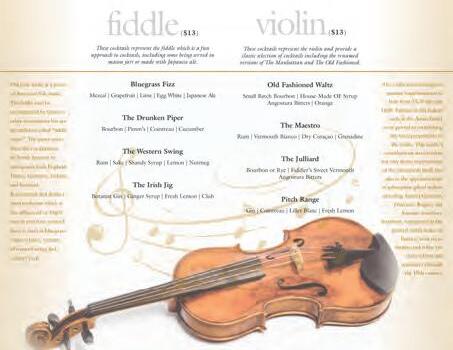
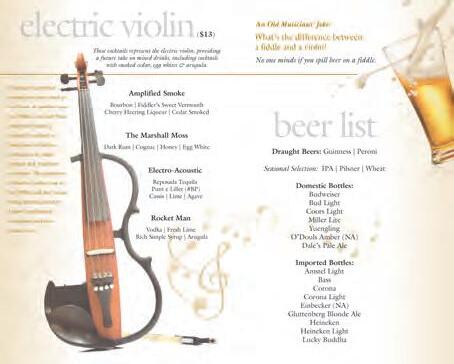
by MeGhaN ThIbaULT

With the mid-term elections around the corner, it seems an appropriate time to share the success story of one club’s four-course wine dinner featuring the talents of a former White house chef.
The Lakewood Country Club in Rockville, Maryland is located a short 30 to 45minute drive from the heart of Washington, D.C. The club hosted guest Chef John Moeller, who is a published author of Dining at the White House – From the President’s Table to Yours, a cookbook that includes more than 100 recipes for one-of-a-kind dishes.
The recipes feature Chef Moeller’s trademark use of fresh, seasonal ingredients inspired by his classical French training with an American twist.
Chef Moeller, formerly the executive chef at the White House joined the White House kitchen in 1992, and served under President George H.W. Bush, President Bill Clinton, and President George W. Bush.
His book, published in 2013, provides an insider’s view into the experience of dining at the White House and describes Chef Moeller’s most memorable moments cooking for no less than three First Families. He is now a restaurant owner in Lancaster County, Pennsylvania.
The club’s wine dinner featured four courses paired with wines from Napa Valley’s renowned Freemark Abbey winery, known for their classic cabernets.
The winery also produces highly sought-after merlots, chardonnays and even a viognier, and was a winner at the Paris wine tasting of 1976, known as the




Judgment of Paris. Organized by a British wine merchant, French judges carried out blind tasting comparisons and caused a huge (and rather unwelcome) surprise by choosing a handful of California wines as the best in several categories, beating out French wines from Bordeaux.
The White House dinner included more than 100 guests who shared in Chef Moeller’s many anecdotes of working in the White House through three presidencies.
Chef Moeller, positioned on a small stage in the center of the room and with a lavalier microphone, introduced each course and opened up to a round of questions at the end of the dinner. Members from the Manor Club and the University Club of Washington, D.C. were also invited to share in the chef’s special menu, which included King Crab, Beef Tenderloin and warm, flourless Chocolate Torte. BR

legal committee By RoB haRRis
The Michigan Supreme court has decided that the courts have no business deciding whether the use of carts is or is not part of the essence of golf.
And why, pray tell, is this important? Just ask Kenneth Bertin, who was injured when his playing partner plowed into him with a golf cart, causing serious injuries.
Had Bertin been injured by a shanked shot, he would be hard pressed to recover for his injuries, since “shanking the ball [in golf] is a foreseeable and not uncommon occurrence.”
Being injured by a cart, however, presented a more difficult question, “[g]iven the relatively recent advent of the golf cart, the lack of any official rule referring to carts as inherent aspects of golf, and the ‘fact that there is no evidence in the instant case that the golf course where the accident occurred required the use of golf carts.’”
If carts, unlike shanks, were deemed NOT to be an inherent part of the game of golf, then, under the law Bertin could recover for injuries simply by showing that the cart driver was negligent, which appeared to be beyond dispute.
The Michigan Appellate Court found in favor of Mr. Bertin, According to the Appellate Court:
“risks related to golf carts are not inherent risks of the game of golf. Just as walking is not an essential attribute of golf itself, … using a golf cart is not a fundamental or inherent characteristic of golf. Rather, golf carts are a convenience, which—when used during a game of golf on a golf course—make traversing a golf course, and transporting equipment, less strenuous, and they have no basis in, or relationship to, the underlying activity or rules of golf, principally swinging a club in the attempt to strike a ball… .Therefore, we conclude that risks related to golf carts are not risks inherent in the game of golf, as the sport of golf would exist and remain virtually unchanged in the absence of golf carts.”
When the Michigan Supreme Court got their hands on the case, they took a different approach. The Supreme Court felt that the Appellate Court had no business deter-
mining questions concerning whether carts were part of the essence of golf: As the court explained:
“The approach adopted by the Court of Appeals below, asking whether a risk arose from a necessary or essential aspect of the game, is flawed for multiple reasons. Most importantly, it is not an approach suited to judicial decision-making, or even legal reasoning. Instead, it represents a sort of philosophical essentialism that posits the existence of abstract essences that courts must discern. There is, under this thinking, an ideal form of golf, or any other recreational activity. What the Court of Appeals did here was examine this ideal of golf, asking whether it included golf carts. This manner of reasoning is better left to philosophers than judges.”
Rejecting a philosophical role for the courts, the Supreme Court answered the question differently.
“Judges have no special insight regarding the nature of golf and, in general, should not be in the business of policing the boundaries of sports. Rather than requiring courts to engage in such a nebulous endeavor, we hold that the proper analysis should focus on reasonable foreseeability…
“In this context, the assessment of whether a risk is inherent to an activity depends on whether a reasonable person under the circumstances would have foreseen the particular risk that led to injury. If so, then the risk is inherent and the reckless misconduct standard of care applies. The foreseeability of the risk is a question of fact…”
The upshot of the Supreme Court’s decision was that the case needed to go back to the trial court, so that, based on the evidence, the court could determine whether Bertin “would, under the circumstances, have reasonably foreseen the risk of this particular injury.” If so, then Bertin would be denied recovery for his injuries because the cart driver, while negligent, was not reckless. And, if the evidence showed he could have foreseen being struck by a cart just as he could being struck by a shanked shot, he would be deprived of a right to recover for his injuries. BR
tRiBal magic

Gregg Patterson is president of Tribal Magic and can be reached via email: GJPAir@aol.com
Manager Sue is in The Now, focused on where she’s at and what she’s doing, and glowing. She’s driving her “Nothing but Nowness Now” vintage 1963 Harley Davidson 883 XLCH motorcycle into the Wanna Be Country Club, priming herself for a “No Nowness Now” Secret Shop of The Wanna Be Country Club.
Sue’s in The Now, no cell phone, no messages, no robocalls, no emails to divert her, alert to cars, dogs, bicycles and potholes because she knows that a single “No Nowness Now” moment on her unmuffled Big Bore Harley could send her post-haste to The Great Beyond.
Manager Sue, motorcycle aficionado and long-time general manager of The High and Mighty Country Club, is a CFON – a “Certified Knower of Nowness.” She knows when people are focused on The Now, when they see and are engaged with the place they’re at, the people they’re with, the stuff they’re doing and the moment they’re experiencing.
And because she knows Nowness, Sue knows that lots of “No Nowness Now” moments can send a club’s GM posthaste to The Great Beyond, out of a job and looking for work.
Manager Sue’s been pondering her Secret Shop of The Wanna Be Country Club. She remembers how Manager Joe begged her to conduct a no-holds-barred “No Nowness Now” audit because he knew, deep down, that the Wanna Be’s Nowness Factor was way lower than it needed to be to keep members happy –and him employed – for decades.
Sue parks her “Nothing But Nowness Now” Harley, listens to the sounds of its cooling cast iron cylinders, takes a last look at her PDA, her one piece of “No Nowness Now” technology, reads three emails and seven text-messages, listens to five voice mails from irritated bridge players and turns her high tech “Nowness Disrupter” OFF, fluffs her hair and walks to the entrance of The Wanna Be Country Club primed for a Secret Shop as a prospective new member.
As a prospective member responding to The Wanna Be’s big bucks marketing campaign, Manager Sue has Nowness Expectations. She’s expecting the employee team to be
completely in The Now, focused on her as a hot new member prospect, observing everything she does, anticipating her wishes and reading her signals. She expects The Warm Embrace that Nowness can provide.
Walking toward the club entrance, Manager Sue notices the security guard in his security golf cart, feet on the dash, focused intently on the screen of his cell phone. Sue imagines that the guard heard the rumble of her XLCH as it entered the driveway, that he’ll toss his cell onto the seat, leap out of the cart, give her a salute, a wave and a hearty hello. But he doesn’t. Ouch, no Nowness now!
Approaching the front door, Sue notices that the doorman’s talking to three other staffers while staring rapturously at an iPad. “Take a look at THAT!!!” All nod their heads and mumble agreement. No eye contact. No acknowledgement of her arrival. She opens the front door and enters. Ouch, no Nowness now!
Sue approaches the front desk searching for the membership director who’ll be giving her the tour and the hard sell. Mr. Front Desk is talking on the phone, “love ya baby, you’re Ma Woman, I’m feeling The Heat”, glances at Sue, gives her a hello wave, turns away and keeps on talking.
Seven minutes later he hangs up with a “love ya baby”, gives Sue directions to the membership office, spins around and tells the other receptionist (who’s been staring rapturously at her computer) that his woman is “feeling the love.” Sue walks away. Ouch, no Nowness now!
Sue walks down the hallway and into the membership office and notices that Miss Marketing is focused on her computer, banging away at something or other. Two minutes later she gives Manager Sue the big hello, says, “Here at the Wanna Be Club YOU matter because you’re special”, glances at her computer screen, scribbles a note, alerts the front desk to the call she expects from her great aunt Beatrice, combs her hair, powders her nose, adds lipstick to her lips, and after chatting with the house keeper about the club’s low pay policy for the management team, turns to Manager Sue and says with gusto, “Let’s do the tour, and then we’ll return here and talk about your buying a membership TODAY!”
Twenty-three minutes later the tour ends.
Manager Sue, alone in the hallway, starts pondering a few of the “No Nowness Now” moments she experienced during her abbreviated journey through The Wanna Be Country Club.
Ouch, the assistant manager in the hallway, talking on his cell phone, eyes to the ground, saying, “love ya baby”, to somebody somewhere.
Ouch, the party planner whose eyes kept wandering from Sue to the family photos on his computer’s screen saver.
Ouch, the dining room staff members who were cleaning wine glasses, backs to the entrance, oblivious to the director and the hot prospect.
Ouch, the bartender playing space invaders on his cell phone.
Ouch, the golf pro whose eyes were glued to the promo videos on the big screen TV.
Ouch, the boring Pilates instructor droning on, two-thirds of the attendees yakking about marriages, affaires and divorces.
Ouch, the ladies’ locker room attendants who delivered a brisk hello before turning away and speaking Norwegian to each other.
Ouch, the athletic director who delivered a warm hello then said, “Excuse me, I’ve got to respond to this text message RIGHT NOW—-it’s the bocce ball chairman.”
Ouch, the chef who gives a gruffgruff “Hello” then slams his office door shut.
Ouch, the controller who was Facetimeing his astrologer.
Ouch, Miss Membership who, two thirds of the way through the tour, glanced at her vibrating cell phone, peeked at her watch, told Manager Sue she’s got to go, said she’s looking forward to seeing Sue on her next visit as a member, tells her she’ll be calling soon, gives a goodbye and
a wave and rushes off, double speed, tapping out a text message to someone she says is really important.
Ouch, No Nowness Now!!!
Manager Sue walks past a “diverted” front desk team, exits the clubhouse, notices that the security guard is now sitting in his security booth, staring at the exit sign, contemplating something more important than the now, walks past three members, all shouting into their cell phones, oblivious to Manager Sue and returns to her Nowness Machine, her Big Bore Harley, pondering Nowness.
Forty-five minutes later, Manager Sue pulls into her driveway still brewing and stewing on the visit. She tosses her helmet on the living room couch, enters her office, turns on her computer and reads a dozen automated, standardized, impersonal, “nomemory-of-me-and-my-visit” messages from the supervisors she
met and Miss Membership who gave her the tour.
Ouch, No Nowness Now” nowhere.
GeNeRaTING The RePORT
Manager Sue starts dissecting her No Nowness Now Secret Shop of The Wanna Be Country Club and begins outlining the report she’ll be delivering to Manager Joe.
She’ll detail her No Nowness Now encounters.
She’ll identify tactics for turning No Nowness into Nowness.
Manager Sue sips deep from her mug of high-octane caffeine, sighs contentedly, gurgles, burps, smiles and begins banging away on her computer…
To be continued – Creating Nowness Now Tactics. BR


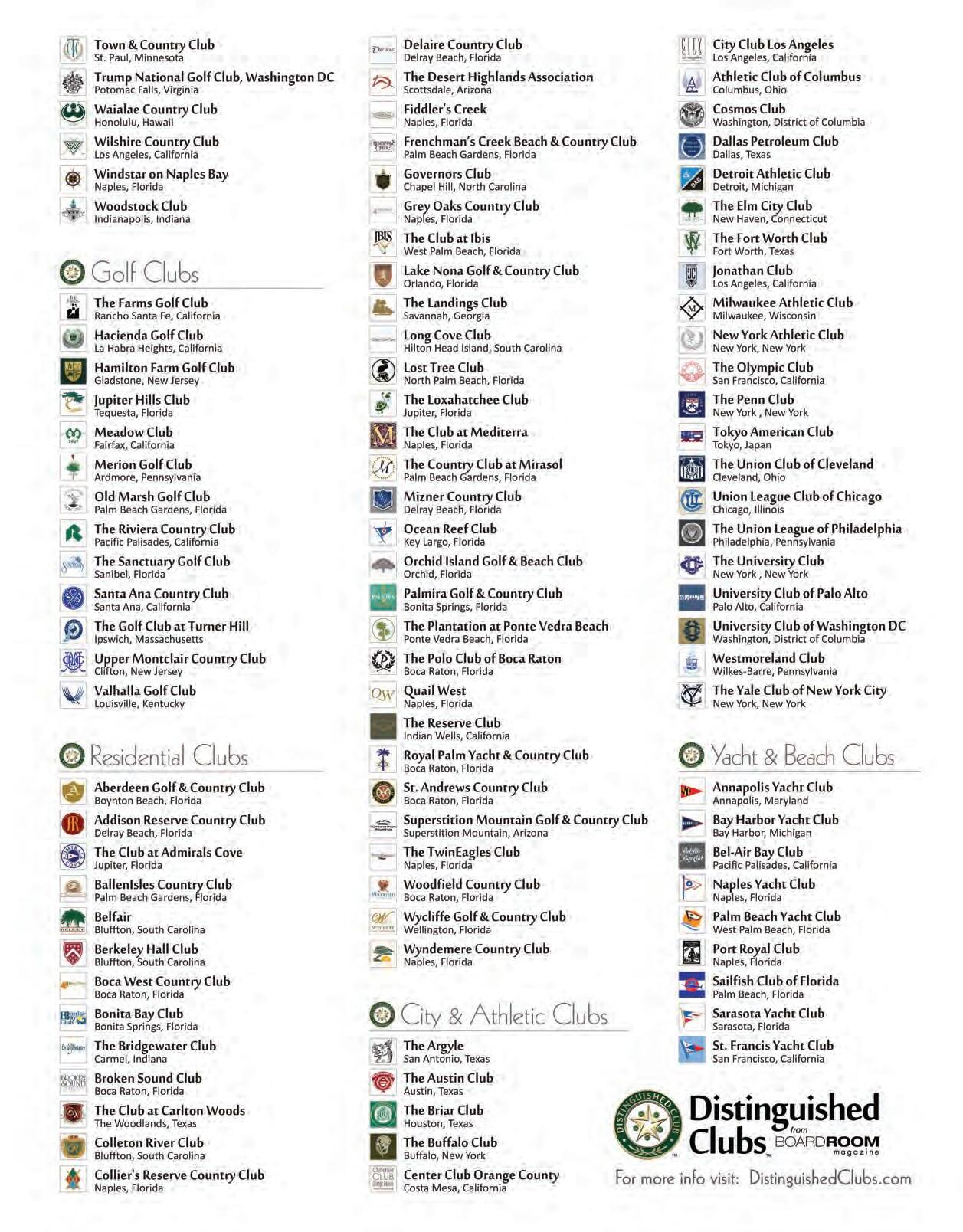
Phil Newman of Venture Insurance Programs offers another viewpoint…it’s “a tug of war” between parties that should be working towards a common goal.
“It’s a minefield … and a difficult topic to get your arms around. Many of the established clubs that operate today seem to be overboarded and have difficulty arriving at quick and expeditious decisions.
“A great number of board members seem to voice their frustration because of the pass through between committees such as the Green Committee to the Long-Range Planning Committee, who can rule counter to the sole purpose of one or more committees,” Harvey added.
“The executive staff of the club, president, treasurer and secretary should act as a steering committee to help eliminate any tie-up at committee levels. This can also be left to the general manager who, in most cases, understands where log jams between committees occur.
So how should clubs handle these disruptive situations? What should the board do? What should the general manager do? Again, opinions vary.
“If certain board members continue to disrupt the board’s progress because of their comments, the club president needs to meet one on one to explain why the behavior is disruptive and that it won’t be tolerated,” Kopplin intoned. “It may also be wise to involve the executive committee, if the club has one, in this discussion with the problem board member. The general manager should not be engaged in these discussions.
“And if a board member repeatedly disagrees with board decisions they need to resign. There should always be allowance for honest discussion and the presentation of varied views but if a board member insists on being a ‘barking dog’ to further their single person agenda the club would be better served without that person on the board,” Kopplin advised.
Tanzer reiterated her point that education if often best served. “The best route is to avoid these situations is to
Because there’s some evidence that courts will look at how the concept of ‘confidential information’ is defined in a club’s confidentiality policy, when determining the scope of its directors duty of confidentiality, a carefully drafted definition of confidential information may be essential to supplement a club’s jurisprudential framework.
“And if there are disagreements between board members they should be filtered through the executive head of the committee who can share concerns and points of view with fellow committee heads,” Harvey recommended.
Gordon Welch, president of the Association of Private Club Directors (APCD) thinks these directors sometimes feel “they’re above the board rules.
“Individuals that air their disagreement with board decisions either don’t believe that the board oath is relevant to them or they just didn’t think there were too many people around that it would hurt anything. These Individuals create havoc for the board and management team and, as an individual, they could be held personally responsible for any malicious comments.,” Welch explained.
“And generally, these individuals have not been properly vetted to be a board member. Clubs must learn to choose board members and not agree to take the next good old boy on the list. We believe board members must go through an application process, be obligated to attend meetings and share their personal and professional skills to advance the club,” Welch added.
provide proper education. In the event these situations occur, a gentle reminder should first be given. If the disruptive behaviors continue then further action should be taken in accordance with the club’s governing documents and applicable law,” Tanzer recommended.
“Ideally, board members should contain their disagreement to the board meeting in order to maintain a united front to club members. Realistically, this is not always possible. Nevertheless, board leaders should stress to all board members the value of a united front and negative impact such internal conflict may have on the club and club members in general.
“However, the long-term solution for this is education for board members. In the short term, board leaders should recognize the potential for this behavior and attempt to address it by recognizing the potential for disagreement, allow members a full opportunity to express their concerns within the board meeting, directly address the conflicts and reminding all involved of the responsibilities and expectations of serving on the board,” Tanzer added.

“As difficult as it is, the board should have a protocol in place to handle these issues… possibly an ethics committee that would be built into the nominating committee,” explained APCD’s Welch. “Board members that continue to discuss issues outside the boardroom should be reprimanded and if continue they should be invited to leave the board. Clubs simply cannot afford to have renegade board members creating havoc.
“The general manager would need to report the incident to the proper committee but should not play a role with decision making,” Welch expressed.
“If someone has signed an agreement to serve as a board member that includes a confidentiality agreement, they should either recuse themselves from the issue or resign from the board, if they cannot maintain that confidentiality.
“Hopefully the board has a close enough relationship that the members can discuss and overcome the issue,” Welch added. “The board should have an agreement, signed by all members of the board, that states the board shall act as one body. Board members should be reminded of this at each meeting, and a copy of the document should be in the front of the “Board Book” or board materials.
“Additionally, the board should have at least one outing each year to build comradery. This will help with disagreements,” Welch suggested.
Harvey agrees there should be a “code of conduct, which is outlined and reviewed at the time of nomination and the election of the board representatives. This should be signed and agreed to in order to preserve the confidentiality and privity of the club’s inner workings. If this persists as a concern of specific members then they have to be counseled and advised that a disruption cannot reoccur,” Harvey maintained.
“A disruptive board member or one in disagreement with the decision can create havoc on a board’s effectiveness and there is not always much a board can do short of taking disciplinary action,” explained Reid-Pennell.
She suggests the board and GM, collectively may want to try the following:
a) Be transparent in communications to the membership to admit that the decision was not unanimous but a majority decision.
b) Encourage boards to go to great lengths to debate decisions to ensure everyone on the board feels they have been heard before making decisions. The long-term answer is to have a board orientation each year and provide its charge and expectations/commitments for:
i. Communication
ii. Board decisions
iii. Duty of Care
iv. Fiduciary Duty
v. Conflict resolution
vi. Discretion and confidentiality
All board members must understand that their role is to vote for the benefit and enjoyment of all members and to protect the club’s financial interests taking care to keep the club out of any libel situation.
c) Provide a ‘script’ of talking points for board members to stay ‘on message’ and communicate diplomatically that it was a ‘tough decision’ and provide hard facts for why the decision was made for the betterment of the club/majority.
d) Try to have one-on-one meetings with all board members in advance of large-scale decisions that could be contentious to be sure that even if someone does not agree, they understand the “why” behind the decision.
e) The board and general manager should also spend some time with the club’s ‘influencers’ – every club has them. The influencers can help carry the message to the members as one of support for the board’s decision.
GSI’s Farrell feels “the governance best practice that will help many clubs is simply, “Succession Planning. Today, the top five percent of high-performing clubs work hard at every aspect of succession planning.
“Its purpose is not just to fill upcoming board slots and prepare for future executive committee leadership positions, but rather to ensure that a proper and healthy culture is carried forward, along with cherished club traditions,” Farrell explained.
“I suggest that a club should not only focus on appropriate rules of conduct that addresses these issues but look deeper into the systemic cause of why culture gets off track.”
“When current leadership is tasked with forming the nominating committee, it should give potential board members clear direction that a requirement for service is the willingness to understand, further develop and execute the vision and culture of the club,” added GSI partner, Scott McNett. “
“Prospective board members who may have a personal agenda simply should not be considered for board service. These individuals are usually the board members who, in the end, foster disruptive behavior. That doesn’t mean a nominating committee should avoid recruiting members who may have a different concept of how the club experience is delivered.
“Indeed, different points of view are vital to a healthy discussion when developing board policy. However,
early in the recruiting stage, all potential board members must understand the expectations of board service and agree to them. Proper board behavior at the top-performing clubs is self-controlling, where fellow board members will not allow ‘rogue’ board member to gain momentum,” McNett added.
Ned Welc, another GSI partner emphasized that “the board president and GM/COO are the keepers of a club’s culture. Collectively, they must continually educate and gently remind board members of their responsibility.
“Further, the president and executive committee should develop and execute a system that holds each board member accountable not only for board goals but for cultural expectations. Typically this is done at the beginning of each season when the president appoints committee chairs, then sets the goals for each committee.”
“This is the perfect opportunity to remind board members what the short, mid- and long-term expectations are, and to reinforce the GM/COO concept as endorsed by CMAA,” Farrell added.
“Succession planning for board members if planned properly, not only allows for the selection of members who share the club’s vision and voice, but it also impacts the protection and reinforcement of how the club must operate to deliver Emerald Level club experiences.”
A club can take a pragmatic approach to this subject and use policies, practices and contractual arrangements to fill the gaps in the legal framework. Here are some practical ideas that a board can follow to address some of the principal issues relating to board confidentiality.
• A club should review periodically its confidential policy and tailor it to what
appropriately addresses what makes sense for the club.
• Confidentiality policies should address the directors’ confidentiality obligations not only related to classic, non-public information about the club but also all other information that is the subject of board proceedings and deliberations, or that is learned by directors in connection with their role. For example, members that are having financial issues, members divorcing or any other personal information about members.
• Because there’s some evidence that courts will look at how the concept of ‘confidential information’ is defined in a club’s confidentiality policy, when determining the scope of its directors duty of confidentiality, a carefully drafted definition of confidential information may be essential to supplement a club’s jurisprudential framework.
• Directors should be reminded routinely of the basic measures and practices that are likely to mitigate the risk of inadvertent disclosure of confidential information.
• Clubs should consider the appropriateness of having directors sign confidentiality agreements to underscore their commitment to confidentiality and/or submit advance resignations letters that would become effective upon a director’s breach of their confidentiality obligations.
So, to reiterate, board members must understand that the ‘duty of loyalty’ as well as a ‘duty of confidentiality’ are board requirements. Decisions made in the private club board room must remain in the board room and the board must speak with one voice. At least, that’s the way I see it. BR John G. Fornaro, publisher
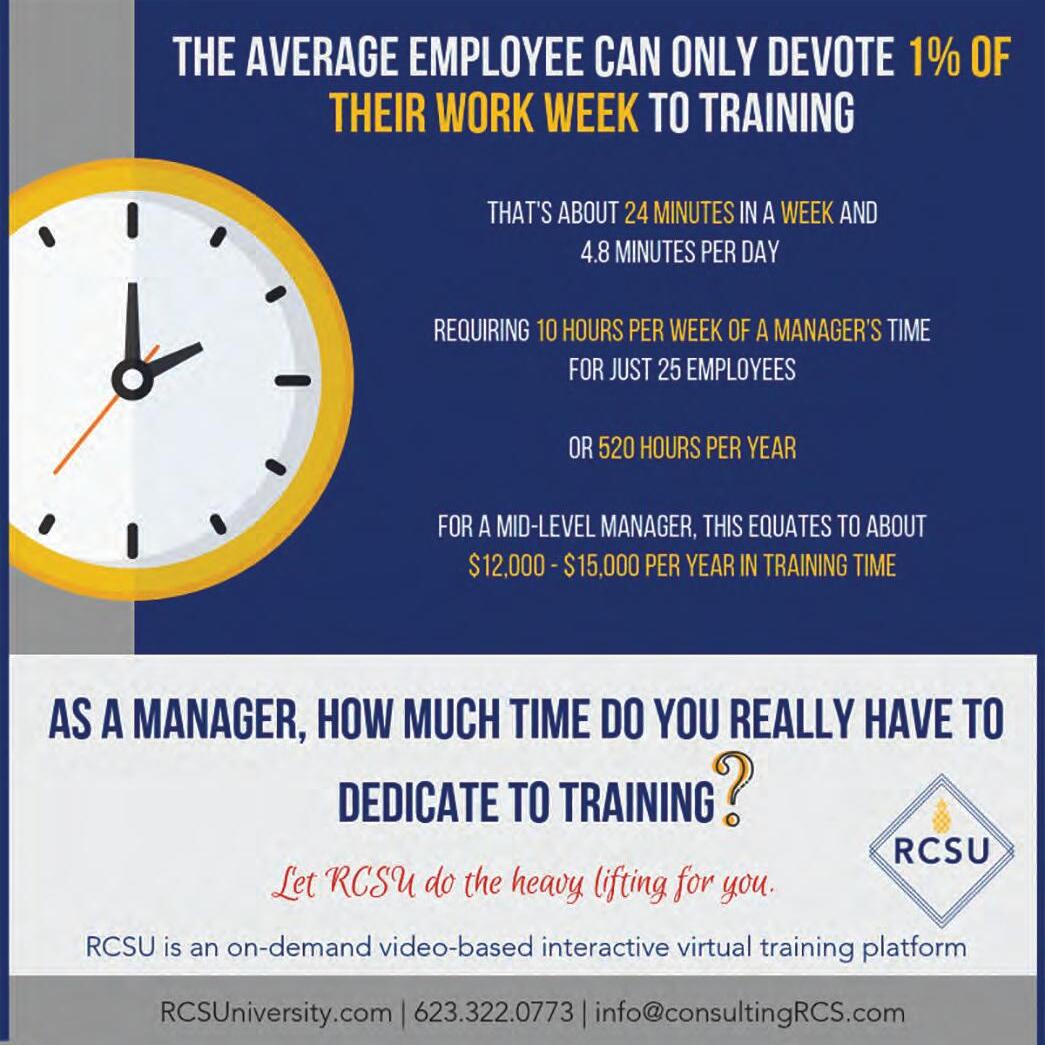

CHRIS BOETTCHER
Christopher Boettcher, CCM, CCE is general manager/COO of The Beach Club of Santa Monica, California. Chris can be reached via email: Christopher@TheBC.com
I remember being called a “robot waiter” back in the days while manning a 10-table section at Souverain Restaurant at the Winery in the early 80s. Why? Because I could handle so many tables!
It was in a great little town, Geyserville California, where this co-op-owned winery had a really nice upscale restaurant attached to it. In those days, you made cash in hand and about two bucks an hour, so it was all about hustle. Did we feel like robots? I don’t think so. Working on the terrace in the Alexander Valley overlooking Jordan winery on the other side of the valley was a cool job that I probably didn’t appreciate as much as I should have. That being said, we were waiters hired to deliver food from the kitchen, to give a good experience while dressed in our big brown butterfly bow ties, and to try and get customers to come back…something not easy in a transient, early-in-itslife-wine-country area restaurant.
country at airports. Fun atmospheres and themed concepts. I’m sure you’ve encountered them.
Their signature convenience? As you walk up there’s an iPad at your place setting. You place your order and surf around on the internet or play games or watch something on the iPad while your food is being prepared. It’s quickly delivered by a food runner or a beverage service staff member, and you’re able to pay with the iPad, and stay or run at your leisure.
That’s really a pretty cool concept when you think about it. Obviously not great for human interaction - especially in a private club. Although I did notice at a lounge in, the Denver airport, this concept was even available right up at the bar.
I know most of you are probably thinking of how impersonal this really is, but the bartender was very social and communicative. I almost wonder if it allowed her
From an operator’s standpoint, making sure you hire the right personalities that not only treat the members well but their fellow staff members too, is the key. But if we can do something for that staff members to make their lives and job actions more efficient, less work off the floor and more face time on the floor, truly that would be a coup!
Is that something that can be replaced by technology? I don’t think so. Especially since, in clubs, all the relationships with staff are almost as important as members’ relationships with each other.
You always see that in really successful clubs: staff members become a part of the family. There is give and take on both sides of technology and personable employees. High tech or high touch? So, what role does technology really take in the future of the club service industry?
My brother-in-law works for out of New Jersey for a company called OTG (On The Go). The company has a number of really cool restaurants and bars around the
more time to interact with guests rather than having to process orders?
In any case, I can see an application at fast food service situations in clubs, or even better, food and beverage offerings loaded on the club app. You can order something before you get to the club or while you’re in a remote section of the property like heading up the eighth fairway to make the turn at the clubhouse.
Another cool example, might be while you’re sitting in the living room reading a book, you whip out your club app and order a cappuccino…without moving from the spot. Some old-line clubs have something similar – call buttons in and around the social areas of the clubhouse. They look
like a doorbell on the wall, you push it and a beverage server comes to your aid.
Those initially were from the days of old when servants lived in the house. Think of Morticia pulling on a thick rope and Lurch appearing with the silver tray and napkin over his arm: “You rang?”
I don’t mean to make fun of this but there’s really not much of a difference if you’re just pushing a button on the app or pushing a button on the wall to call someone. I’m totally all for being able to speed things up. Efficiency is good. Will it allow our treasured club staff to spend more time with members? Maybe, but still interesting.
There are no technological advances, old or new, that will take the place of our favorite waiters, bartenders, maintenance guys or front desk staff at our clubs. They are the true backbone and personality of our clubs and should be fostered and embraced.
From an operator’s standpoint, making sure you hire the right personalities that not only treat the members well but their fellow staff members too, is the key. Earlier in another article called, “Sorry Not My Section” , I wrote that you never know what it’s like to work with someone until you work with someone. But if we can do something for that staff members to make their lives and job actions more efficient, less work off the floor and more face time on the floor, truly that would be a coup!
So yes, technology can be integrated into our clubs and into our employee communities, just be mindful of keeping the social aspects of clubdom. High tech and high touch is the way to continue great club service and continue to lead on! BR






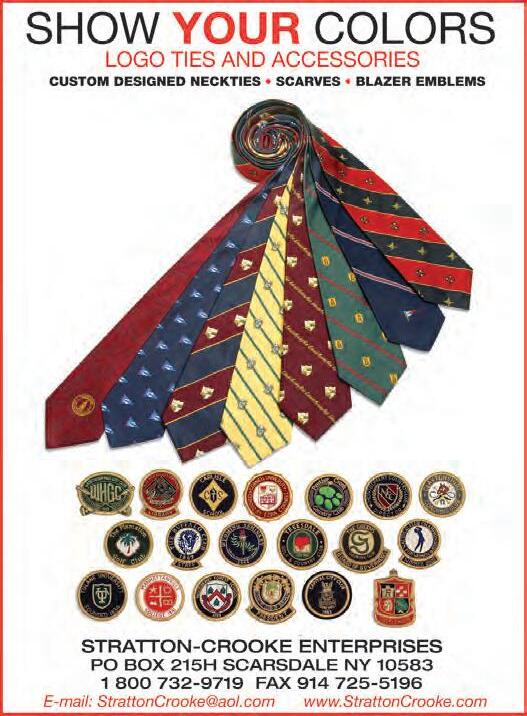
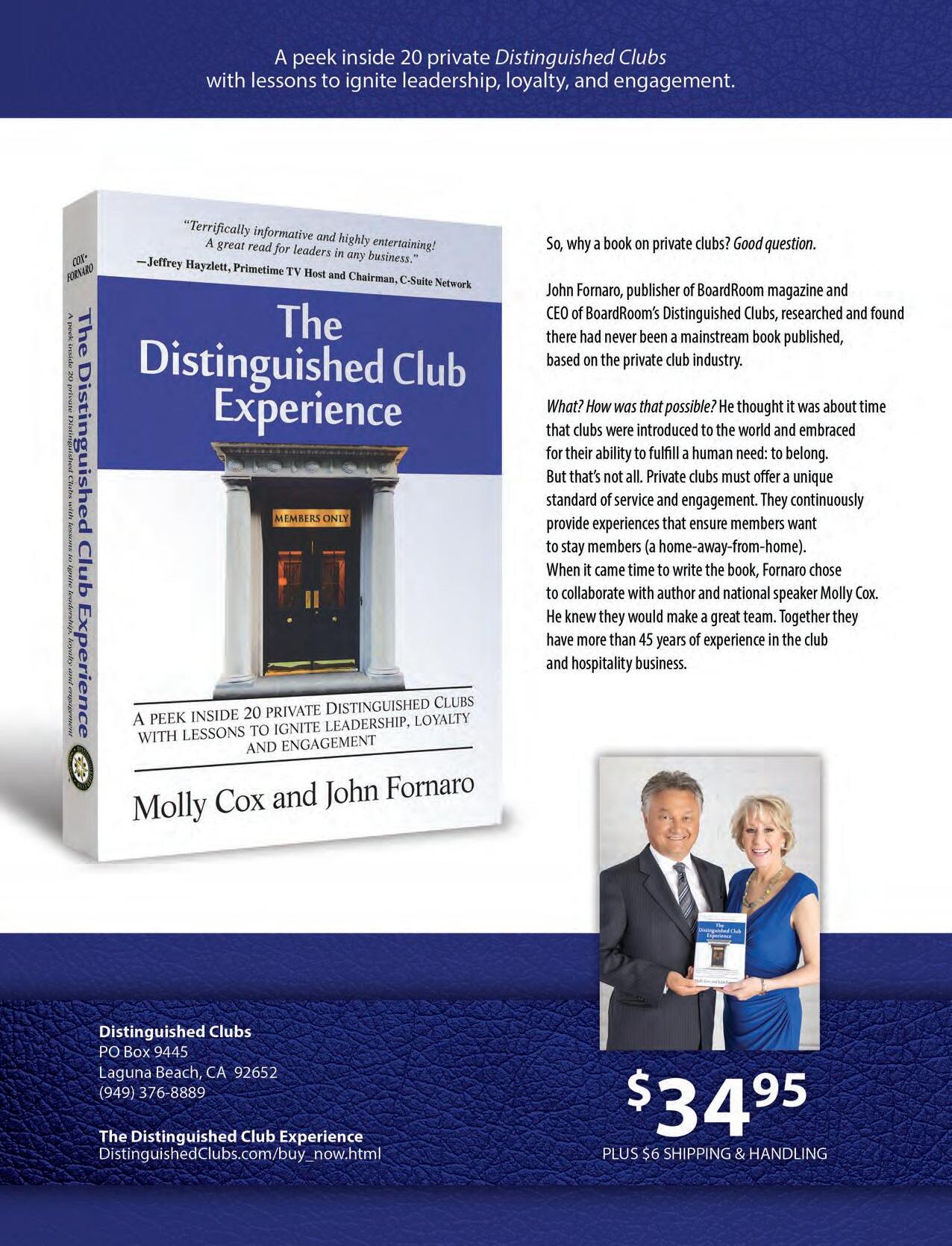




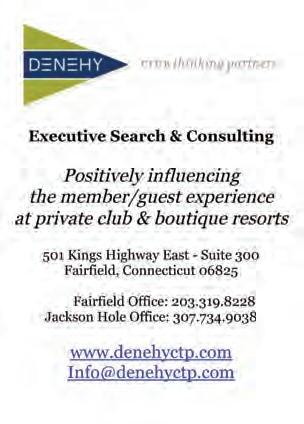



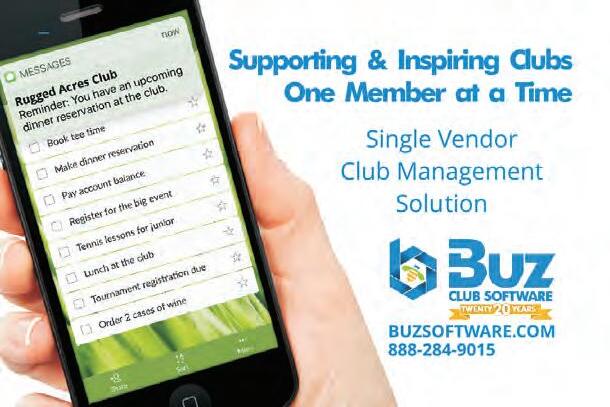
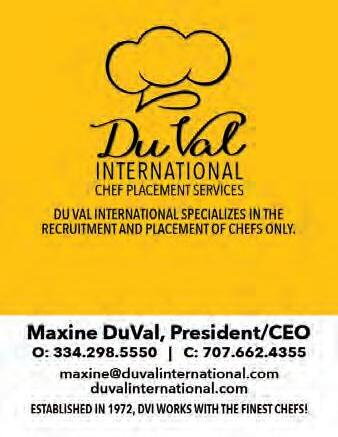






















BOARDROOM MAGAZINE ADVERTISING INDEX
ACCP.
Addison Law.
Ambassador Uniforms.
Amosh Gazebos.
APCD.
BoardRoom’s Distinguished Clubs.
BoardRoom’s Distinguished Clubs Book.
Bozeman Club & Corporate Interiors.
C2 Limited Design.
Casa de Campo.
Club Benchmarking.
Clubdesign Associates.
ClubPay.
ClubTec.
clubsystems group.
Clubwise.
Chambers.
Concert Golf Partners.
Creative Golf Marketing.
Danial Paul Chairs.
117
11
81
118
25
110, 111 & 113
119
13
77
63
40-41
29
50
38, & 61
42-43
97
67
55
15
8
DEI Kitchen.
Denehy.
Duffy’s Tri-C Club.
Eustis Chair.
EZLinks.
Flora Springs.
FOOD-TRAK.
GCSAA.
GSI Executive Search.


MembersFirst Inc..
33
5
73
52
35
44-45
123
Northstar.
Peacock + Lewis.
71 GMS.
High-End Uniforms.
Hilda W. Allen.
HINT Harris Interiors.
117
93
101
6 JBD/JGA.
Jonas Club Software.
89
46-47 KECamps.
81 Kopplin Kuebler & Wallace.
31 Lichten Craig.
3 MAI.
Crooke.
Club Management.
17
19 McMahon.
BOARDROOM MAGAZINE COUNTRY CLUB INDEX
Ronald Banaszak, CCM, CCE, COO, The Fountaingrove Club, Santa Rosa, CA
Chris Boettcher, CCM, CCE, GM/COO, The Beach Club of Santa Monica, CA
Frank Cordeiro, CCM, GM, COO/GM, Diablo Country Club, Danville, CA
Robert Crifasi, CCM, CCE, CPA, GM, New Orleans Country Club, New Orleans, LA
Boris Gradina, CCM, CCE, GM, Maryland Golf and Country Club, Bel Air, MD
Cory Hathaway, Assistant GM, Los Angeles Athletic Club, Los Angeles, CA.
Dr. Bonnie Knutson, the Country Club of Lansing and the Michigan Athletic Club
Nancy Levenburg, member, Spring Lake Country Club, Spring Lake, MI
Frank Maddalena, president, Boca Grove Golf and Tennis Club, Boca Raton, FL.
Ian Murdoch, chair, The Bryanston Country Club, Bryanston, Gauteng, South Africa
Michael Neglia, president, Upper Montclair Country Club, Clifton, NJ
Michael Nyerges, clubhouse manager, The Elbow Room, Fiddler’s Elbow Country Club, Bedminster NJ
Jack Peat, president, The Club at Morningside, Rancho Mirage, CA
Pamela Radcliffe, HR dir./exec. asst. Countryside Golf & Country Club, Naples, FL
Stewart Redhead, executive chef, New Orleans Country Club, LA
Robert A Sereci, CCM, GM/COO, Medinah Country Club, Medinah, IL
Rosie Slocum, MCMP, director of membership, BallenIsles Country Club, Palm Beach Gardens, FL
Meghan Thibault, member and membership committee, MidPac Country Club, Kailua, HI

